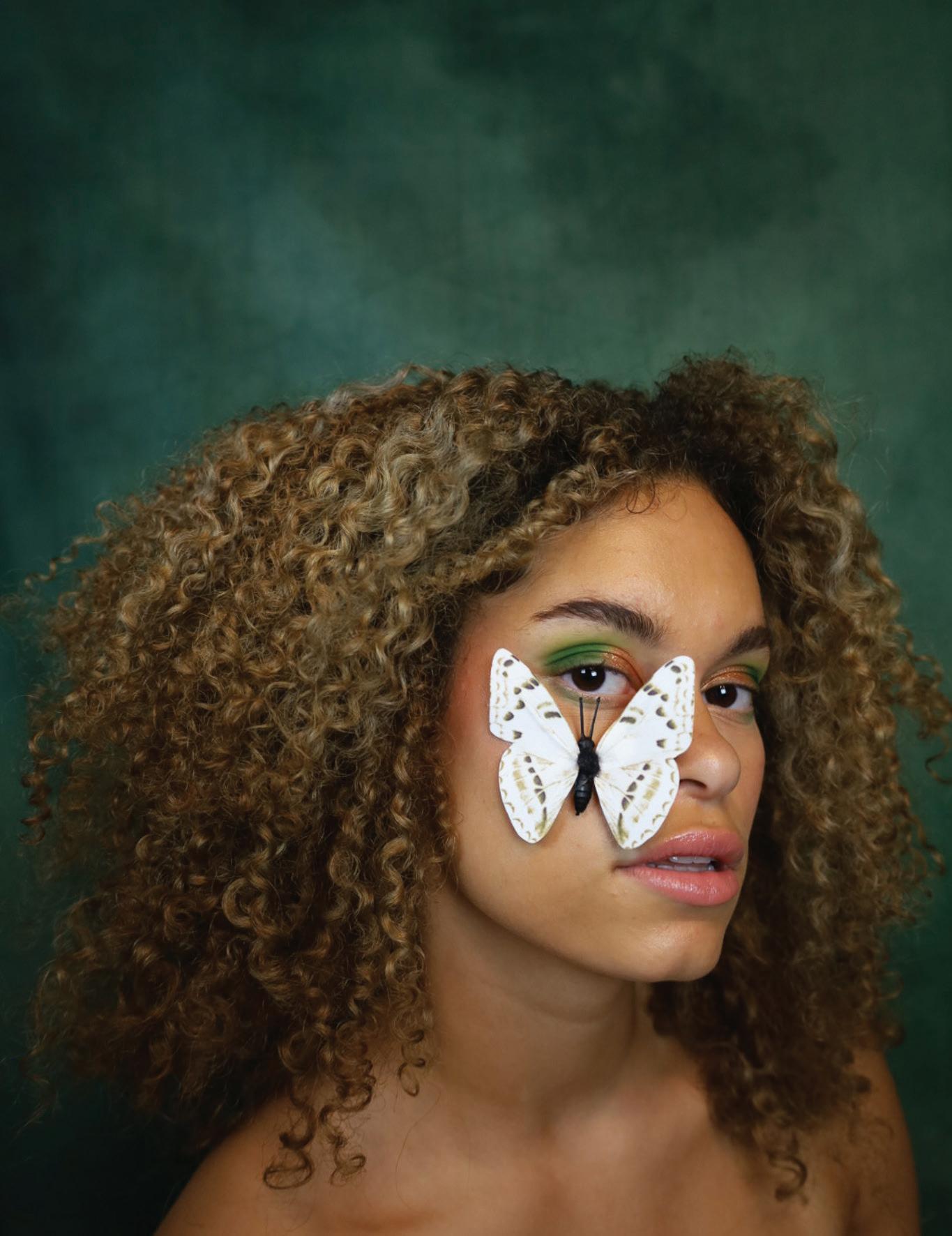


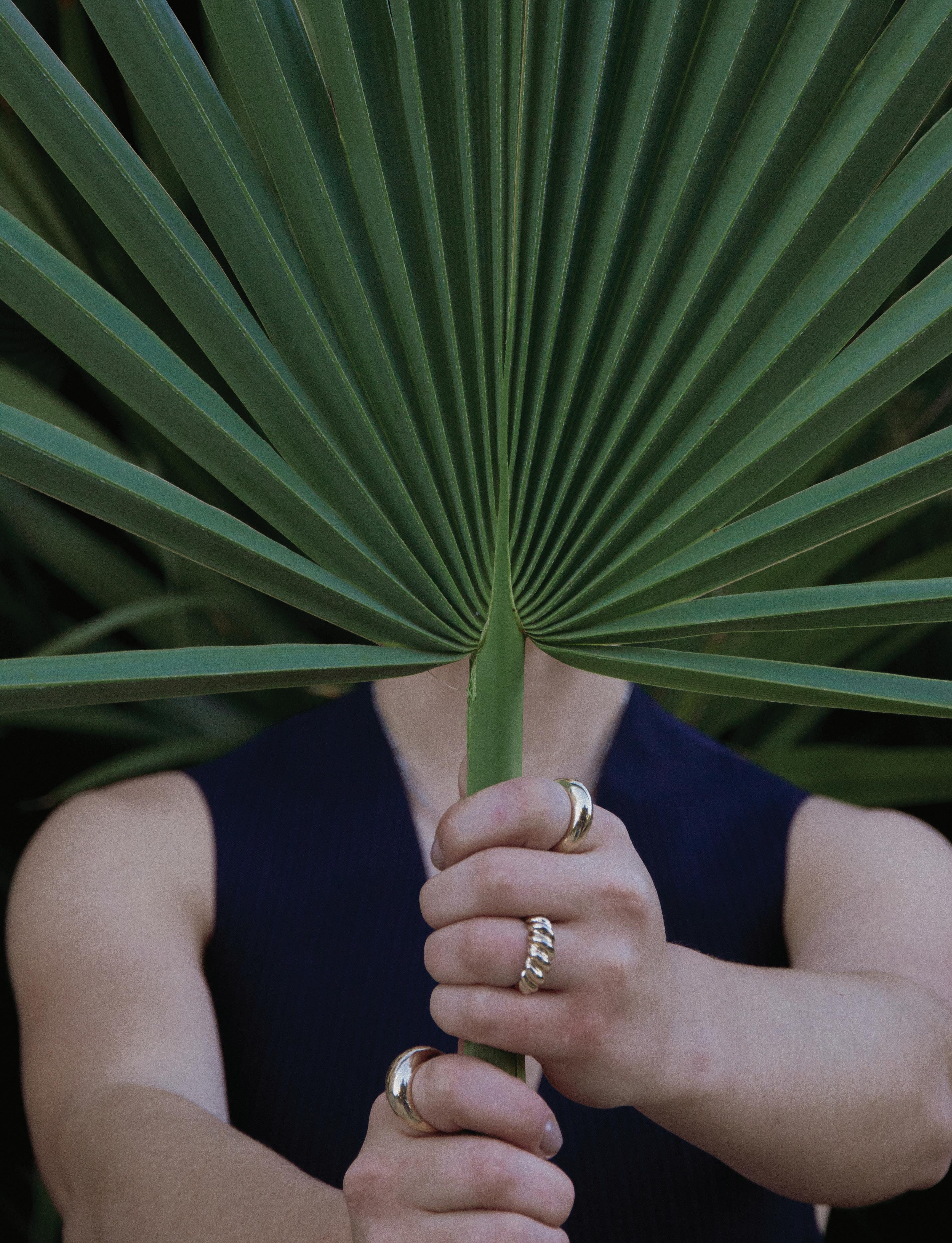 Photographer: Emma Trueba 01
Photographer: Emma Trueba 01
CONTINUOUS CHANGE
As a society, we are constantly evolving, growing & embracing all things new. Flux highlights all of the changes that encompass our society, demonstrated through fashion, personalities, and social movements seeking change. We hope you enjoy this illustration of the beauty of evolution.

02


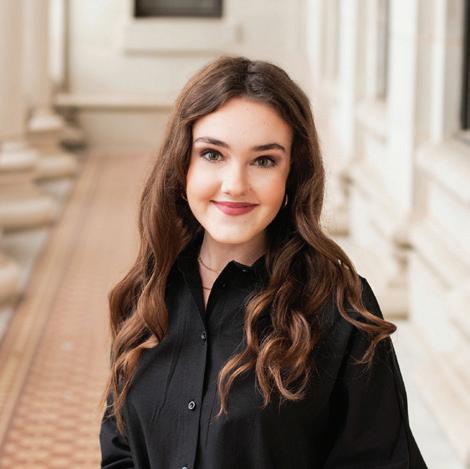





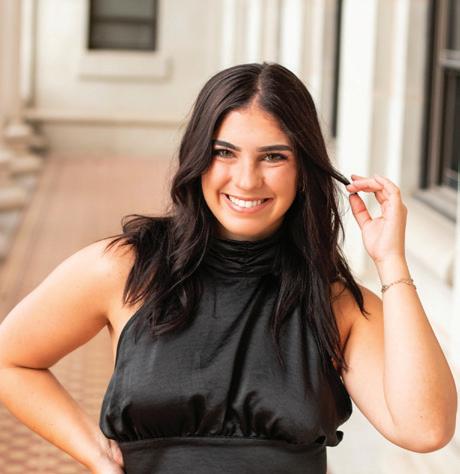


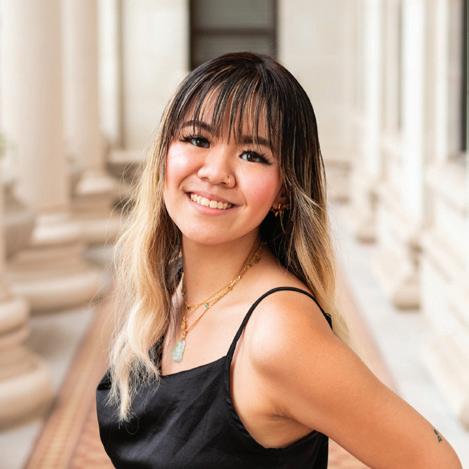
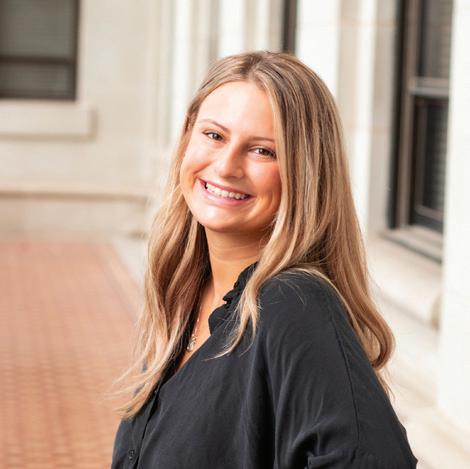
EXECUTIVE BOARD
LAUREN
HARTUNG HALEY COX MADEY BETTS DESIGN CHIEF PHOTOGRAPHY CHIEF DIGITAL MEDIA CHIEF ANNA KELLER AUBREY MATSON JADE SUNG VIDEOGRAPHY CHIEF EVENT CHIEF DIGITAL STORY CONTENT CHIEF ONLINE EDITOR EDITOR TREASURER
MARY TRANTHAM PRESIDENT GRETCHEN EVANS EDITOR IN CHIEF MADELYN OKRUHLIK ABBI ROANE
ERCOLANI SARA
ASSISTANT TO PHOTO CHIEF
KYLIE DUNLAP
ASSISTANT TO DESIGN
03
ANNETTE GUERRA-ARMENDARIZ
CHIEF
FULL STAFF
WRITING
PHOTOGRAPHY
SOCIAL MEDIA
VIDEOGRAPHY
EVENT
Aubrey Matson, Beth Baumler, Camryn Bacon, Chloe Foster, Chloe Pham, Emma Ehle, Gretchen Evans, Kadence Cheang, Logan Hansen, Madeline Townsend, McKenna Madis, Megan Konvicka, Zoey Frederick
Alyssa Dulock, Haley Cox, KaylaMarie Valdez
DESIGN Anna Keller, Annette Guerra-Armendariz, Jade Sung, Kayley Vu, Madelyn Okruhlik, Maitri Modi, Morgan Tran, Sarah Szymeczek
Ashley Hudson, Catherine Kim, Ferrell Tugman, Grace Kauderer, Halle Nguyen, Kailyn McIlhone, Madey Betts, Molly Tinkle, Parker Elkins, Sophia Gomez, Sydney Ross, Zoe Tsoukalas
Abbi Roane, Alexis Holt, Anna Burson, Emma Trueba, Esha Uddaraju, Krystal Pham, Kylie Dunlap, Lacey Loomis, Linh Tran, Mackenzie Palmer, Peri Shaink, Savannah Patterson
Camila Ponce, Emily Hansen, Emma McMinn, Karla Trevino, Krisha Atreya, Liane Nguyen, Lindsey Lopez, London Marchman, Lucia Katie Ibanez, Marlee Dockery, Sahithi Vemuri, Sheyla Hidalgo, Sudiksha Pai, Taylor Gustafson
04
LETTER FROM THE PRESIDENT


Dear reader,
We are constantly in a state of flux in which we evolve into different versions of ourselves. While change may be terrifying, it truly is inevitable. I have seen it within others, myself, and even this magazine. A-Line Magazine truly has changed me for the better and continues to challenge me every day. I have developed skills, created friendships, and pursued my childhood passions. FLUX is an idea I had a couple of years ago and I have given a lot of thought to the creative direction I wanted to pursue. Just as the main idea of FLUX is change, I knew I wanted our full staff to exemplify a shift in aesthetics for this theme. Changing our creative lens and execution process is a great way to grow individually and collectively. Our previous print issue is very different than FLUX, regarding the colors, editing, and overall aesthetic. This illustrates the versatility and capabilities of this full staff. From changing color palettes to writing styles, our full staff adapts to changes and perfectly demonstrates the main idea of FLUX. This print issue dives into the parallel between nature and changes in fashion, society, etc. Just as the leaves always change colors in the fall, we constantly experience seasonal changes in our lives. From switching up your hairstyle to moving to a different country, the possibilities are endless for paving a new way for yourself. There is beauty and excitement in the idea if we seize the opportunity to seek the unknown. We will acknowledge how the little things affect the greater future (p. 73), analyze the life cycle of trends (p. 15), and illustrate the metamorphosis of the media (p. 21). I am truly blessed to work alongside such creative, innovative, go-getters every single week. I hope the articles, graphics, and photos within these pages encourage you to accept change within yourself and others.
Mary Trantham President


05
With appreciation,
LETTER FROM THE EDITOR IN CHIEF
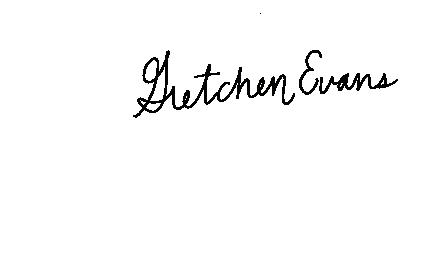

Dear reader,
A-Line Magazine has been my home for a while now, and I am so full of pride to serve as Editor in Chief. Our magazine is filled with those who dare to continue their creative journey. Every snapshot, every graphic design, every sentence, every social media post, every social event – it is done with vigilance and passion. Our teams work hard to curate a strong, welcoming online presence and an open community at our university, as there is a clear need for a fashion and lifestyle magazine in College Station. With an astounding 70,000+ students at Texas A&M, we want to be the vessel for those who need an escape. In past print issues, we have explored different perspectives and the idea of a small town mindset; A-Line Magazine is here for anyone and everyone throughout all walks, and stages, of life. This magazine is young in creation, but carries itself with poise and precision. We challenge ourselves to strive for inclusivity, cohesiveness, and quality content.
FLUX is an issue of A-Line Magazine that I truly hold close; a focus on our contribution to climate change (p. 25), an exploration of the music we listen to (p. 67), and the motto “everything happens for a reason”(p. 73) are all aspects of my everyday life, and I am sure many others’. As young adults with our entire future ahead of us, changes big and small are truly impactful. It is clear that our decisions not only affect one another, but our environment as well. Change and nature are intertwined, and I believe our print issue this semester exemplifies what this can mean through discussions of society’s trend cycle (p. 15), our view of celebrities (p. 55), and adjusting your mental space (p. 31).
I hope you thoroughly enjoy this print issue. It’s easy to see how our organization itself embodies FLUX. Here at A-Line, we experience change every semester: new creatives, new ideas, different perspectives, and of course, continuous success! I now propose to you, reader, to be the change and create a future that you would like to see. We believe in you.

06
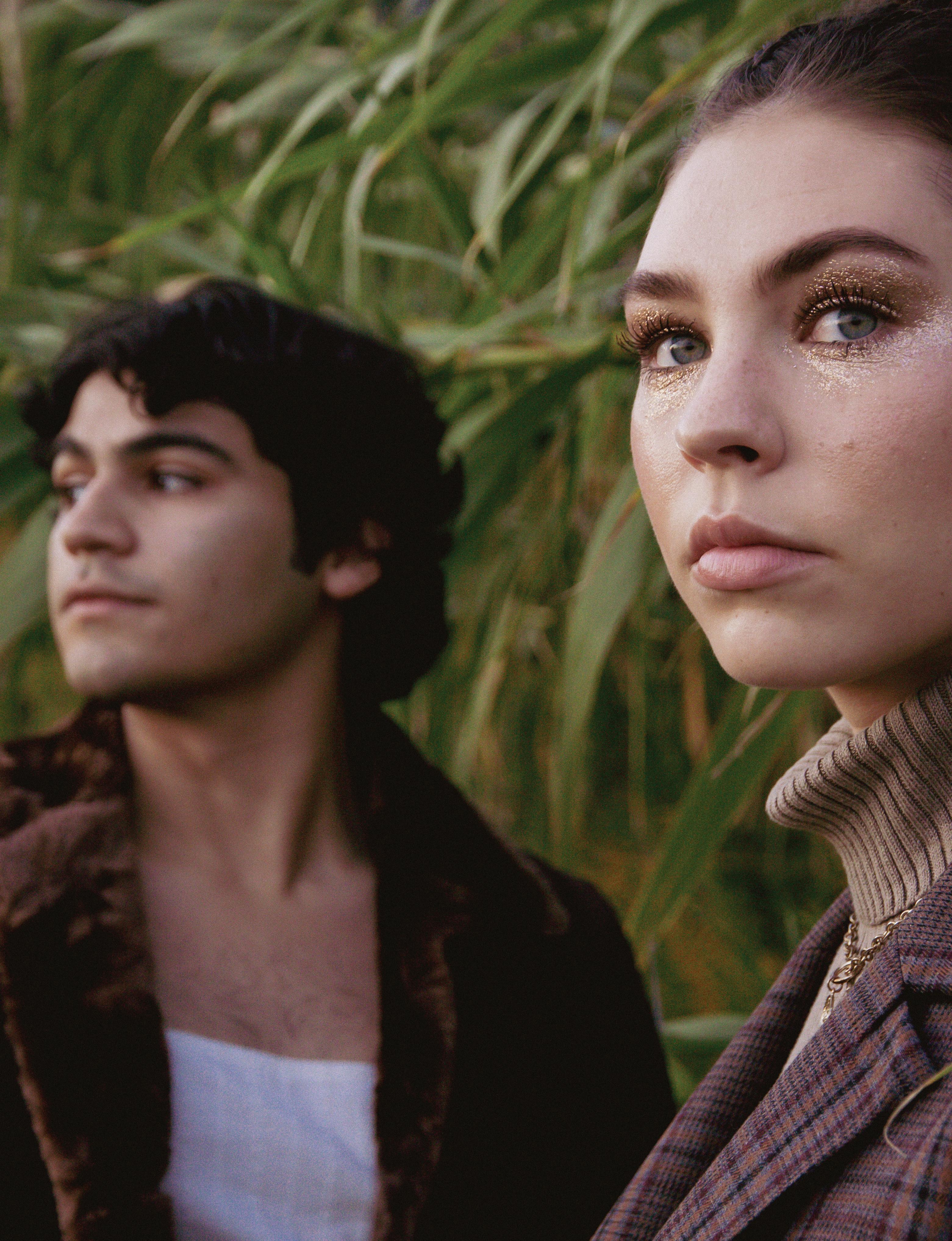

07
Photographer: Emma Trueba
Models: Andy Cruz, Sarah Schultz


CHRYSALIS THE LIFE CYCLE MEDIA METAMORPHOSIS FASHION RUNS ON THE EARTH YOUR MIND IS YOUR ENVIRIONMENT THE DEGENDERING OF FASHION UNCHARTED TERRITORY FINE LINE THE FLUX OF FAME METANOIA MELODIC MOVEMENTS THE BUTTERFLY EFFECT 09 15 21 25 31 37 43 49 55 61 67 73 IN THIS ISSUE 08

09
EMBRACE YOUR TRANSITIONAL STATE
WRITERS: Zoey Frederick & Camryn Bacon
PHOTOGRAPHY: Peri Shaink
DESIGN: Jade Sung

MODEL: Peyton Turpin
f you aren’t being seen, you don’t exist. While harsh, that statement can easily be felt by many in the era of online media. We turn to social platforms as a way to stay connected and remain relevant to our peers. Being raised with smartphones and platforms that denote our worth to views, likes, and streams can deeply affect our self-image. Turning away from ingrained habits can be a challenge, but it is one we must take in stride. Separation from outside influences and comfort in solitude is essential to our evolution; we must build ourselves up and break down the unrealistic expectations that have become all too familiar.
10
In our stages of development, it is important to shield ourselves from these negative impacts and retreat to our cocoon. Growing up attached to a screen can change the way we view ourselves; comparisons and cancel culture can create a looming shadow that can impact how we interact. Social media sites that relate user value to views or likes can easily create a false sense of importance that sends us chasing after irrelevant approval. The desire to feel seen on the internet can lead to a representation of an inauthentic reflection of ourselves online.


Social media has a habit of luring us toward trends and fads, encouraging us to blend and adapt. This online presence, more often than not, does not paint an accurate picture of our lives. It is impossible to feel like you are excelling if you constantly measure yourself to impractical goals. Media sites are a highlight reel of our “best selves”, where we sometimes reach to depict a false reality, one superior to the experience of reality. This unspoken competition fuels the longing for validation that holds us back from our full potential.
Social media is not our reality, thus we need to confront the comparison. Understanding that our online communities are constructed of everyone’s highest moments is a good start. This day and age is full of posed images and editing apps - anyone can make their life look perfect. Remembering that everyone faces the same struggles can keep you grounded through all the scrolling. Anyone who belongs to a social media platform knows that it’s not always effortless to be a part of the world wide web, and the feeling of not being enough can be crushing. Everyone feels bouts of insecurity, anxiety, and invisibility; it’s in our nature. Anytime your scrolling gets the best of you, take a moment to remind yourself of the trials we all share. Although it may be beautiful to look at, your feed is not the full story. Someone else’s success does not demote your accomplishments, but media can twist our intentions and incite jealousy if we aren’t careful. In order to truly grow and represent our true selves, it is vital that we unplug and “touch grass” every once in a while.
11

12
Follow your own path; embrace changes both visible and private. Discovering how to define success outside of your online personality can be difficult when it’s too familiar. The instant gratification received from likes and comments on the web is entangling. Going from app to app and constantly scrolling on social platforms can become unhealthy for our self-image and mental health. Take the time to refresh and gain real life feedback from the people that are most important. Personal growth can not be accomplished without substantial interactions. By separating yourself from online fiction, there is much to be learned about yourself. The parts of you that cannot be captured in an image or a thirty-second video are things that make you special. A critical step in this process is developing into someone you are proud of, not someone with the most likes or followers. This means highlighting the qualities you find most valuable and working to improve upon the rough edges. Start to understand how you process your emotions, and how you view yourself and others. Discover what brings you joy, and do that more! Define your goals and make plans on how you can get there. Self-reflection is the greatest gift that your alone time can give, and without it we can so easily get caught up in the fast-paced chaos.
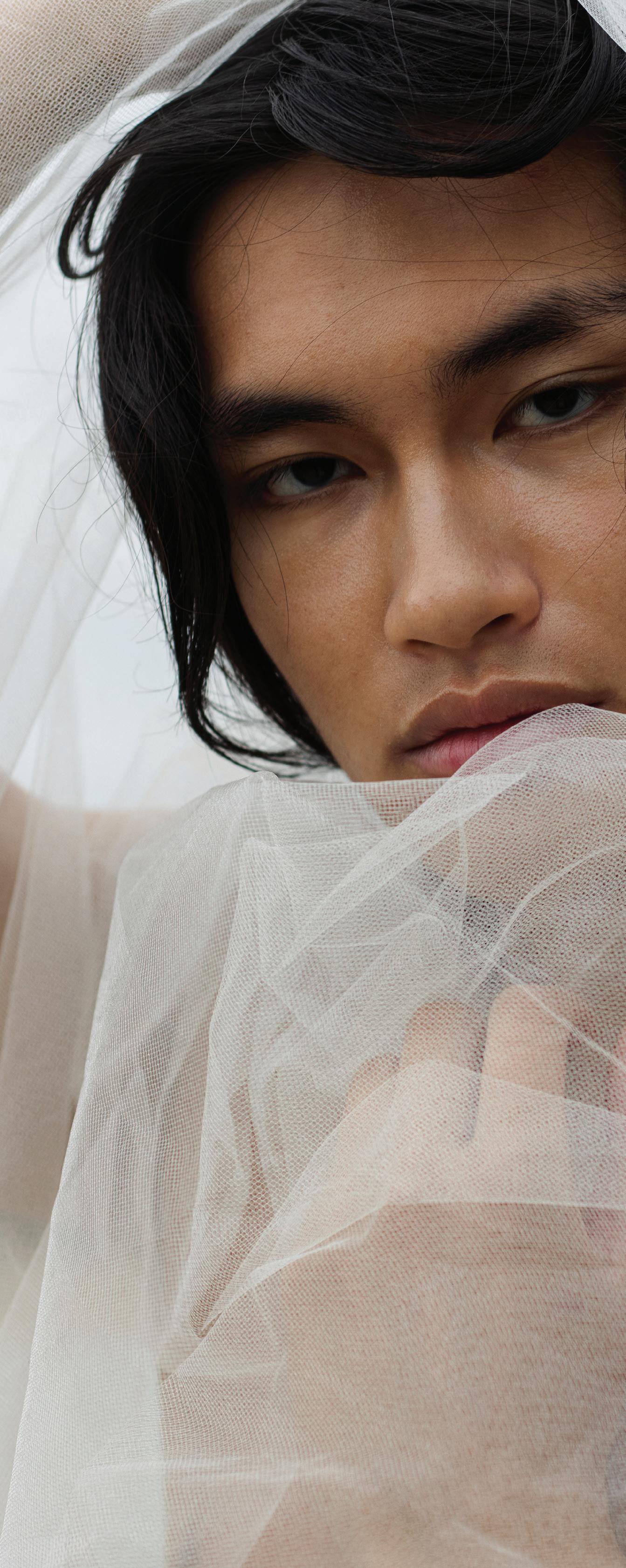
13
EMERGE FROM YOUR CHRYSALIS AS THE BEST VERSION OF YOURSELF, AND BE PROUD OF HOW FAR YOU HAVE COME.
We consistently crave human connections and are often blinded by the time not spent enjoying our own company. How many times have you seen a person sitting alone in a coffee shop and immediately thought they were sad or lonely? Being alone does not equate to loneliness. Learn where you gain your energy: there’s no problem with either, but reflecting on your thoughts can benefit your mental health. Creating a balance between making time for others and ourselves is important for our sanity. When you become serene with your own presence, time spent
with yourself will become a healthy habit. Start small, and become comfortable with the idea of being alone and doing an activity you enjoy. Having a few goals to focus on is the first step to appreciating your own company. Society has stigmatized solitude as a sign of loneliness, depression, or anxiety. However, it is vital to your self-esteem, and personal satisfaction, and it benefits all your relationships in a positive manner. Emerge from your chrysalis as the best version of yourself, and be proud of how far you have come.

14
.NOIHSAF,HTAED EFIL , HTAED SAF, H I O N. LIFE, DEATH,FASHION.
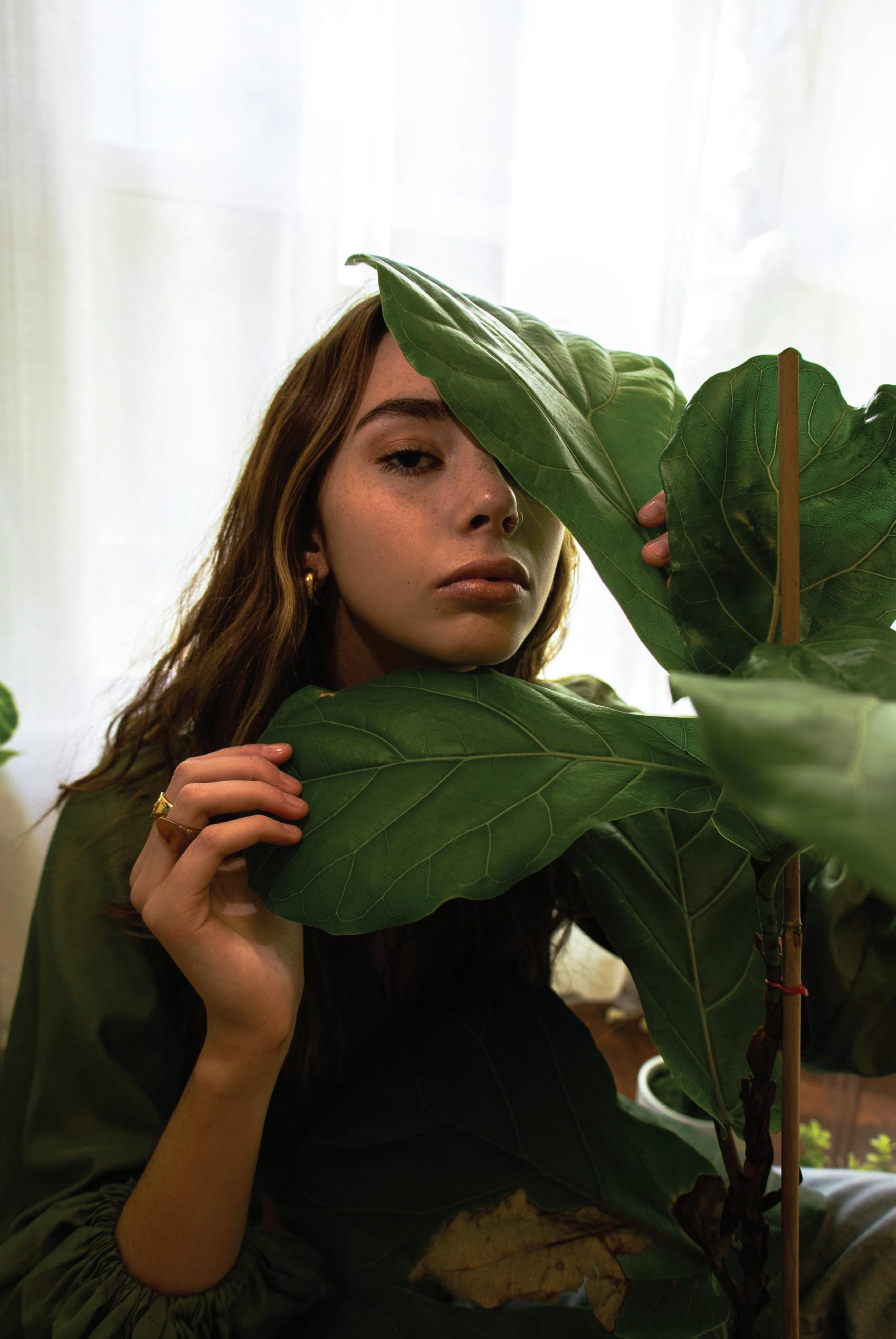
LIFE , DEATH , FAS H I O .N ,EFIL

THE IFE CYCLE
15
SERIES

Writer: Emma Ehle & Logan Hansen
Photography: Mackenzie Palmer
Design: Madelyn Okruhlik

Model: Amy Kingston
ashion lives and dies alongside us. In the nature of butterflies, beetles and bees, society’s fashion trends exist, grow, and fade within a consistent cycle: Introduction, Rise, Peak, Decline, and Obsolescence. It is oftentimes a painfully predictable pattern, with our favorite styles dying just as quickly as they were born, and leaving us with a closet of clothes that are unquestionably out of style and inexplicably less appealing. But why are we left mourning some of our favorite fads quicker than others? Why do some trends always come back? While the trend cycle is intrinsic to the life of our fashion, it is not a completely uniform process. The speed at which it occurs is not necessarily set, nor is it something that happens exactly the same way each time. The cycle is something that, like fashion itself, has changed over time, and with the introduction of social media, has become a bit less predictable. Let’s take a look…
THE
OF CHANGES THAT A LIVING THING UNDERGOES FROM THE BEGINNING OF ITS LIFE UNTIL DEATH.
16
THE INTRODUCTION OF A TREND primarily takes place on runways during Fashion Week. High fashion brands and designers give life to a new and innovative concept of fashion that delightfully surprises their audiences. Recently, the Balmain Spring/Summer collection of 2022 featured unpredictably daring cutouts, breaking past the expectations of predictable linear fashion. A trend is on the rise that is already influencing the narrative as skinbearing monokinis.
THE RISE OF A TREND is often found at the hands of celebrities and influencers who either capitalize through sponsorships or simply market a style trend that they are loving. Harry Styles, a fashion connoisseur in the music industry, showcased his legendary JW Anderson Patchwork cardigan in February of 2020: a moment that consequently launched a hysteria of fans searching for or creating a patchwork replica to match the pop icon’s look. Conversation over this particular cardigan sparked a further interest in patchwork-incorporated fashion, raising the eventual mainstream trend that we have all lived through the last couple of years.
THE PEAK OF A TREND is achieved by the constant production and advertising of varied forms of the trend amongst a wide range of retailers. This outreach and capitalization on the trend grants access to all consumer types that have taken interest in the elevated fad. In the fall of 2021, Versace and Valentino turned heads with their riveting platform heels, a style that has now become accessible to a wider audience as Steve Madden, Pretty Little Thing, and countless other brands have joined the circuit in releasing variations of platform shoes at more affordable prices – inclusivity of all interested buyers that breaks down socio-economic barriers within the fashion industry. As retailers capitalize off a trend in its prime, high fashion industries then disengage, as their responsibility to introduce the trends calls them to look towards the future rather than the present.
THE DECLINE OF A TREND is sensed by an overwhelming feeling of repetition and staticity of a mainstream, labeled trend. Innovative, awe, and individuality have an expiration date when the market is oversaturated with a particular product, a reality that can justifiably be related to the past frenzied desire to own chunky rings. Arrays of resin and rhinestones dominated the jewelry market of 2021, a trend giving a boost in business to Etsy vendors who could easily DIY the colorful and eccentric rings. These bold and fun statement pieces have not lost total relevance, but have begun to be overshadowed by a new trend: “The Clean Girl Aesthetic.” New Year’s resolutions inspired the goal of achieving a put-together minimalist appearance. As TikTok’s algorithm circulated countless videos encouraging a refined look: a look that called for simplistically neutral jewelry. A look to challenge the chunky rings we have grown accustomed to the year prior.
THE OBSOLESCENCE OF A TREND is determined by a collective disdain for the tritely antiquated fad that has well passed its prime. Think of it like this: we had a pair or knew someone with a pair; those brown, rubber, ancient-looking Jandals coming out of Pali, Hawaii. The whirlwind of this shoe soon dissipated but tried to hang on for dear life with the addition of colorful Jandals, a valiant effort that did little to its inevitable disappearance within society. Fashion remains to be subjective, but we can all agree that Jandals are comparable to a past relationship: enjoyable while it lasted, but never again. How can we be certain of an obsolete trend? Well, that little internal shrivel that is ever present in the recalling of a past self proudly strutting out of the house in Jandals, that is the dead giveaway to the justification of a trend within obsolescence.
NOITCUDORTNI ESIR EP A K DECLINE OBSOLESCENCE

17




18
Since the establishment of this cycle, ordinary people and fashion theorists alike have tried to both understand it, and make it work to their advantage. In 1937, author, critic, and historian, James Laver was a pioneer in this process with the publication of Laver’s Law in his book Taste and Fashion - From the French Revolution to the Present Day. Laver’s Law, a theory attempting to explain and understand the trend cycle, serves as a timeline spanning over the past, present, and future, and labels how a trend would be perceived during each period of time. While Laver’s Law is certainly old, the theory is far from irrelevant. Stanly Marcus, former president of Neiman Marcus, even mentions it as being heavily utilized by the company in his 1997 memoir,
¹

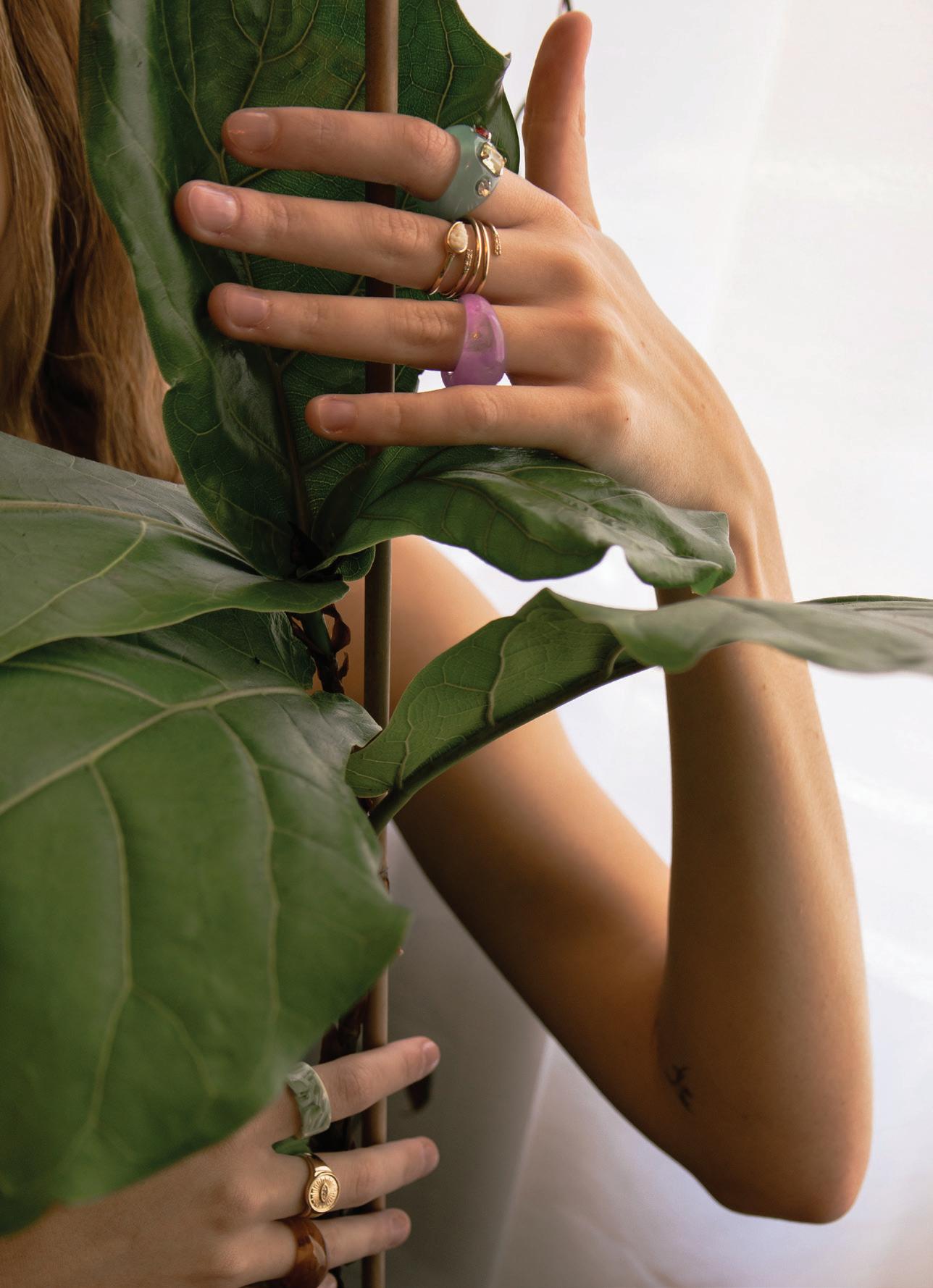
Minding the Store. In the memoir, Marcus explains that during the late ‘60s, there was heavy debate within the company on whether or not the trend for the next year would be the currently popular mini-skirt, or the possibly up-and-coming midi-skirt, which is what was projected to take off by most experts at the time. Laver however told Marcus that the mini-skirt was far from dying, and would be popular for at least another two years - a prediction that was undeniably correct, with women continuing to wear the mini-skirt and completely disregarding the midi. This means that the mini-skirt, at the time, was “smart” or in the Current Fashion category for at least three years. This is perfectly fine according to Laver, as Current Fashion has no set time attached for how long it is allowed to be popular.

19
Now, if we really want to put Laver’s Law to the test we can do some mini-skirt math. While it is not really an article of clothing that ever went definitively out of style, there are times when it has been more on-trend than others - and 2022 is one of those times. Both the mini and micro mini-skirt were a staple in wardrobes over the summer of 2022, and were seen time and time again at Fall 2022 shows at New York Fashion Week, with designers like Dion Lee, LaQaun Smith, and Christian Cowan all using the skirts as a staple piece in their designs. If the mini-skirt was first popular in the ‘60s and ‘70s, - about 50 to 60 years ago, this would place it right between Quaint and Charming in Laver’s theorization, meaning that currently, it would be well liked. This can also be applied to spring of 2021, where there was a spike in both ‘60s mod looks, and ‘70’s boho chic. Platform boots, a staple of the ‘70s, also made a major comeback in 2020, and have been steadily gaining popularity since.

Laver’s Law is not the only pattern we can analyze in fashion’s life cycle. Think, the 20-year rule. It is an observed pattern of a resurgence of trends that fight their way out of obsolescence. A revival of sorts carries shock, led by curiosity, and finally results in surrendering to the passed trend that has rebranded itself back into society. The generalized amount of time can be attested to the 90s grunge look filling the industry within the 2010s, as well as the current obsession with 2000s Y2K fashion. James Laver goes on, not to negate the 20-year theory, but to extend it; Laver pushed the testament that a resurgence occurs every 50 years instead. Debate is futile as the subjective nature of fashion experiences elements of Princess Diana’s 1995 biker shorts phase being brought back by Kim Kardashian
in 2016. The contrasting idea supported by Vivienne Westwood’s daring focus on corsets in the 1970s is now re-captivating audiences of the 2020s. No matter the specific timeline given to a trend’s opportunity at rebirth, it is evident that there is a psychological allure that keeps us snooping through the closets of our moms and grandmothers when they are not looking! The accelerated cycle is generated through micro-trends, a rapid rise of a particular style paralleled with its equally rapid fall from consumer interest. Gaining its prevalence in 2019, microtrends began to dominate the fast-paced media, utilizing TikTok as a medium to flood the app with the constant circulation of trends that build upon themselves. We continue to be ruled by micro-trends today as a certain condemnation is felt when ‘everyone’ has something that we do not. FOMO needs to be avoided at all costs, so we give in. We gave in to the Hawaiian floral printed trend, we gave in to the colorful crocheted trend, we gave in to the Avant basic trend: we. gave. in.. Social media is constantly feeding its viewers with the next best thing to stay relevant, valuing the opinion of these idolized influencers, we follow their lead. A lead that often fills our browsers with fast fashion websites such as Shein, Romwe, and Zaful. Quick and cheap online shopping elevates the fast-paced nature of microtrends, and with the increasingly easy access to new trends granted by fast fashion, the cycle of innovative styles to mainstream happens in the blink of an eye. This anomaly in the longstanding cycle of fashion trends brings excitement, but one has to ask: is the impatience for new trends able to overrun the elevated stress of appearing behind in relevance, the constant strain on bank accounts, and the price that fast fashion is costing our planet?
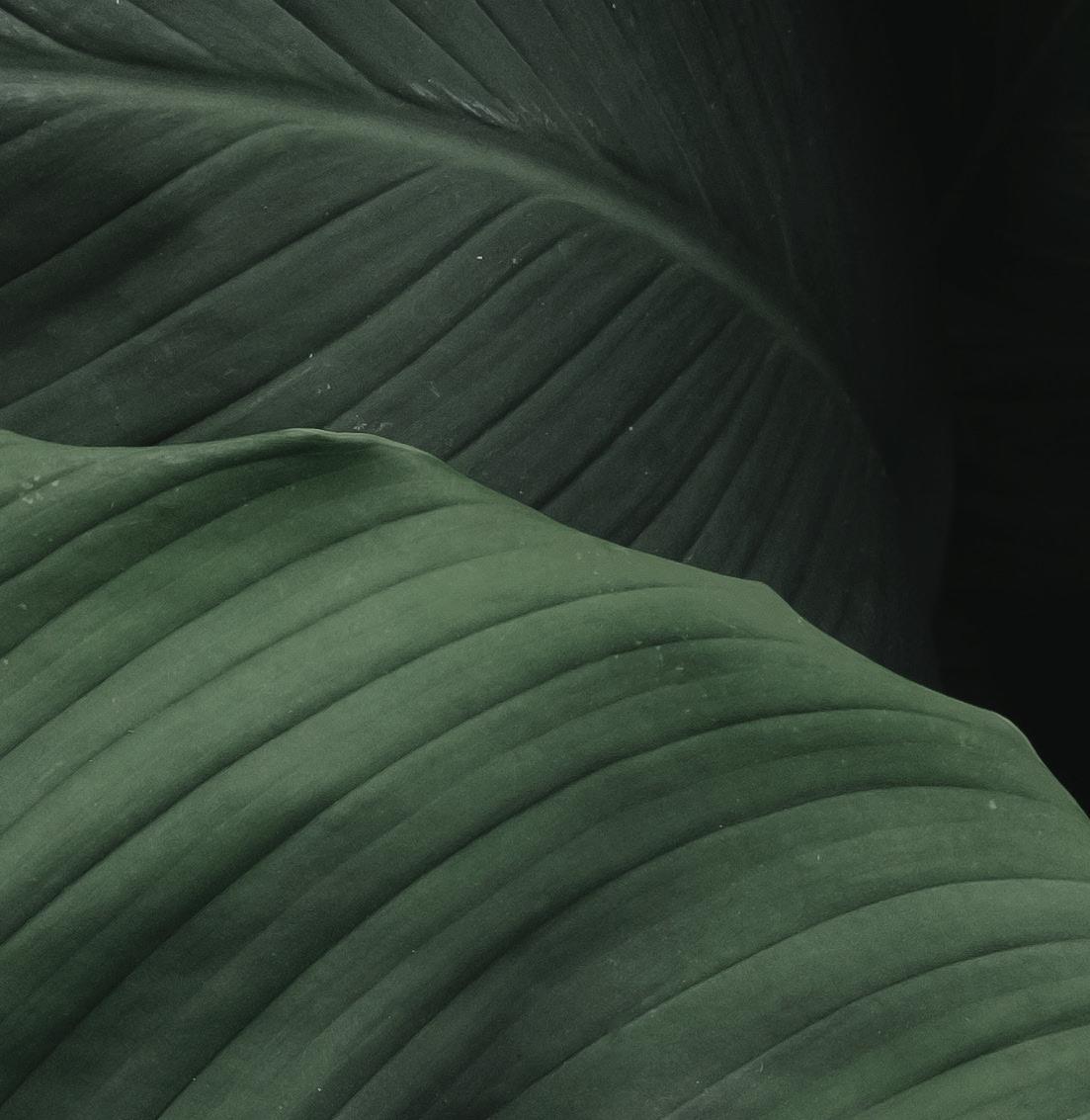
20
Social Media’s Effect on the Trend Cycle
Online media has taken over, and there is no going back. In recent years we have seen social platforms skyrocket in popularity and as a population, we seem to be closer than ever. While our interconnectedness has benefits, the list of drawbacks steadily increases. Good-intentioned TikTok hauls or Youtube lookbooks can have a permanent negative impact on immoderation in the market. Reflecting on past eras, it is easy to observe prevalent trends in media, fashion, and beauty, but now there is a lack of stability. This shift towards overconsumption in all forms leads to a reliance on fast fashion and poorly made garments that fill our landfills when they inevitably go out of style.These items are cheap, easily accessible, and have a quick turnaround for consumers, which sounds appealing, but is extremely damaging. Social media encourages this increase in consumerism, making microtrends seem like a dream come true. This means we must make a conscious effort to purchase quality clothing, support companies that have consideration for our planet, and find practical ways to engage in the never-ceasing trend cycle.
Social media is a revolutionary marketing tool. An increase in media consumption draws a parallel with commercialism. A significant boom in access to e-commerce
creates the framework for modern issues with overconsumption. Platforms are not only using our screens to promote their products but also taking advantage of the influencer sphere. Online Influencers use their platform to engage with curated audiences, promoting content that appeals to their viewers. While this method is an innovative way to market products, it can be taken advantage of and twisted into something negative. Creators can promote products they personally support and have done proper research on, but they can also endorse products that have an adverse effect on our environment. Influencers build trust with their audiences and we often can be blind to what happens behind the scenes in these deals. Fast fashion companies place a priority on profit numbers, disregarding the enormous impact clothing production has on the planet. These brands have taken to social media marketing to draw in consumers and unsurprisingly, it works. Many of our favorite online figures support unethical companies without any idea of the impact overconsumption of these materials can have on the fashion industry and the planet. Without proper research into a company’s environmental initiatives, these figures with massive platforms could directly support the overproduction of unethically made products that end up in landfills.
21

22
The fashion industry is known for the trend cycle’s ebbs and flows. Whether it be the 70s bell bottoms or 90s platform shoes, prominent trends always find a way to make it back around. This cycle draws inspiration from ideas of the time and gives them a modern twist. Social media is directly impacting this steady rhythm by encouraging microtrends. Microtrends take this consistent, healthy timeline and accelerate it to a rate that is unrecognizable. The urge from consumers to buy the latest and greatest outweighs a desire for quality clothing, personal style, and timelessness.
When the next best thing comes to your doorstep at the click of a button, why wouldn’t you take advantage of it? Easily accessible garments are pushing back against the market for environmentally friendly, quality products. The idea that being “in style” means buying the newest product circling around the media is deafening. The fashion industry was originally built on clothing that could withstand the trend cycle and adapt to ideas to come. When all that concerns the masses is having an item that would work momentarily, then is to be discarded because it is no longer “trendy,” we have lost the greater vision of what it means to be in style.
²
According to the Earth Island Journal, fast fashion began to fill closets and landfills starting in the 90s. Trends started moving at a far higher rate, and people became comfortable with the idea of purchasing inexpensive items with the intention of discarding them. The Journal explains that in 2018, the United States alone contributed nine million tons of textile waste. While some companies have made the conscious shift towards green production, there are new businesses opening every day founded on the idea of accelerated, inexpensive, overproduction of goods. Many of these businesses market to online trendsetters in an attempt to maintain the pace and continue climbing in profit. The popular culture shift towards fast fashion does not have an overnight solution, but taking the time to research the companies you choose to invest in is a great step toward change.
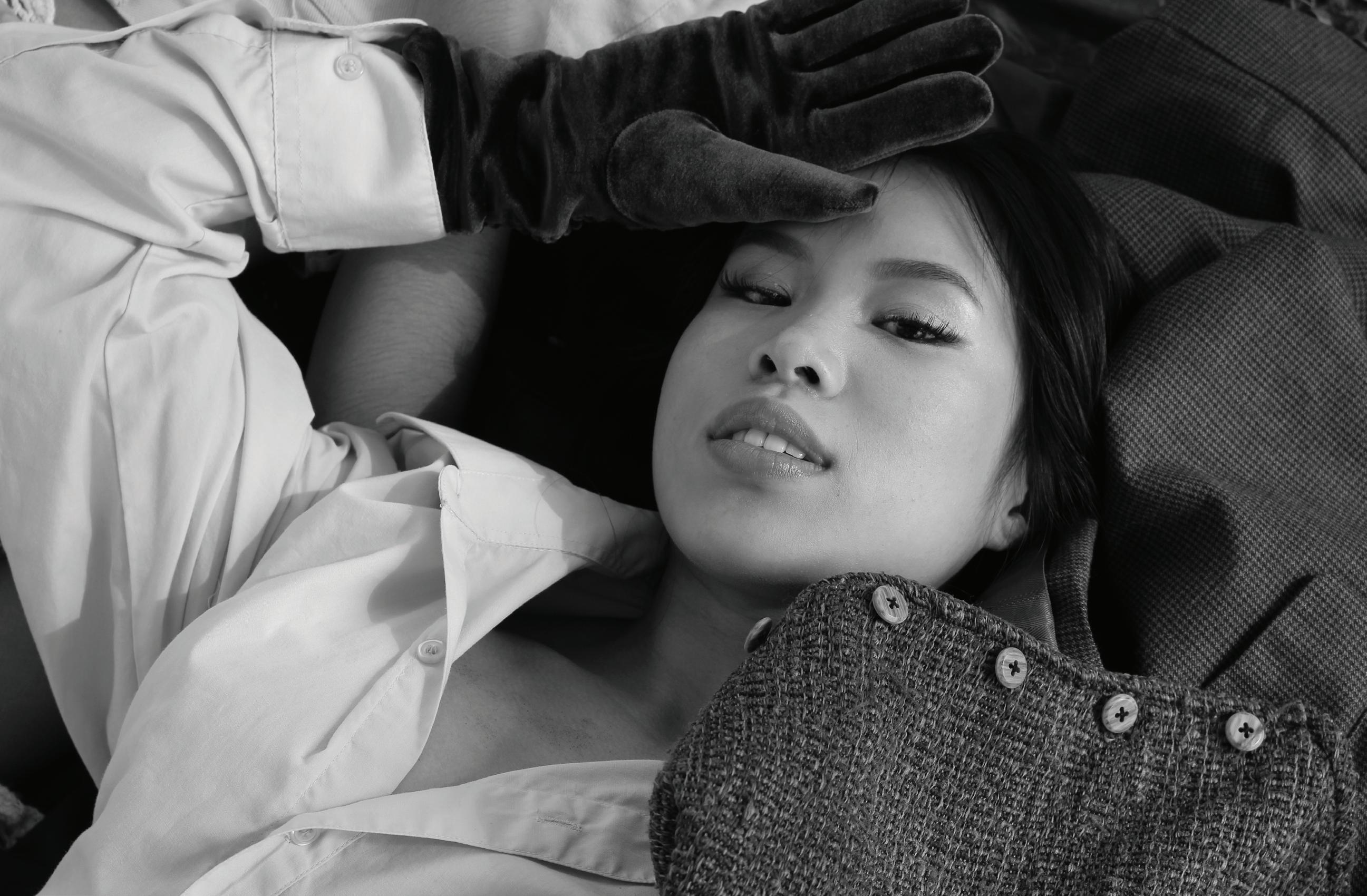
23
Fashion comes and goes, but style lasts forever. Fight this increase in overconsumption and find a way to engage with trends that are timeless and defy a world that is moving too fast. Understanding the difference between “trendy” and “stylish” is vital. “Trendy” plays on the concept of keeping up with where we are in the trend cycle. Although it can be exciting to have what’s “in” at the moment, our pace is unattainable. Most of your favorite trends are probably on their way out the door when they make it to yours. Having your own style should be the priority, as someone who is stylish can withstand shifts in pop culture while remaining true to your own taste. Style means taking the time to purchase quality garments that you will cherish throughout the rises and falls of the trend cycle. Not only does the decision to reject trends that come and go save you a lot of time and energy, but it also saves the planet and the integrity of the fashion industry.
WRITER: Zoey Frederick
PHOTOGRAPHY: Kylie Dunlap
DESIGN: Madelyn Okruhlik
MODELS: Alexa Toribio, Debra Nguyen, Ciara Lard
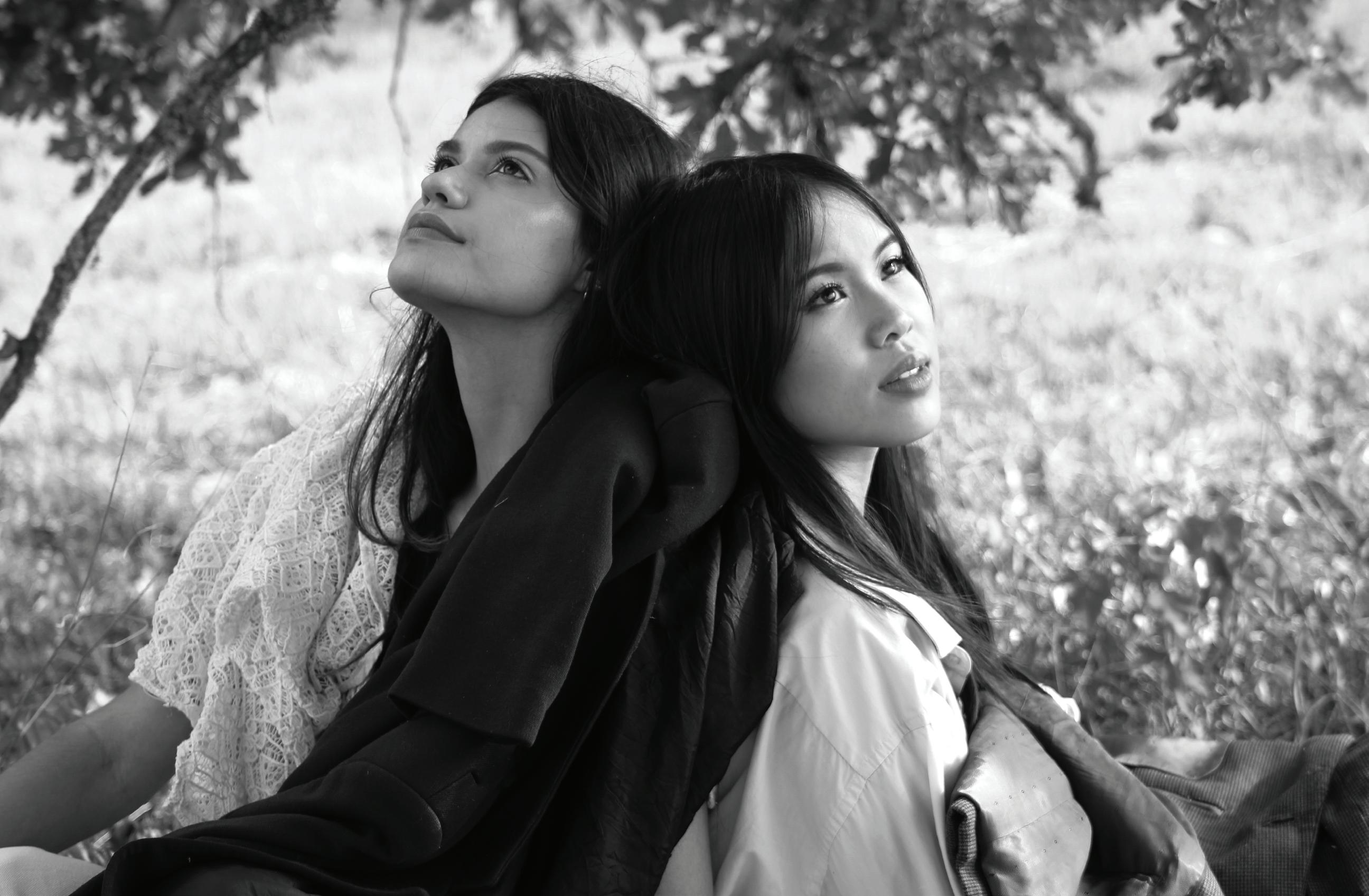
24
WRITER: Chloe Pham
PHOTOGRAPHY: Alexis Holt
DESIGN: Maitri Modi
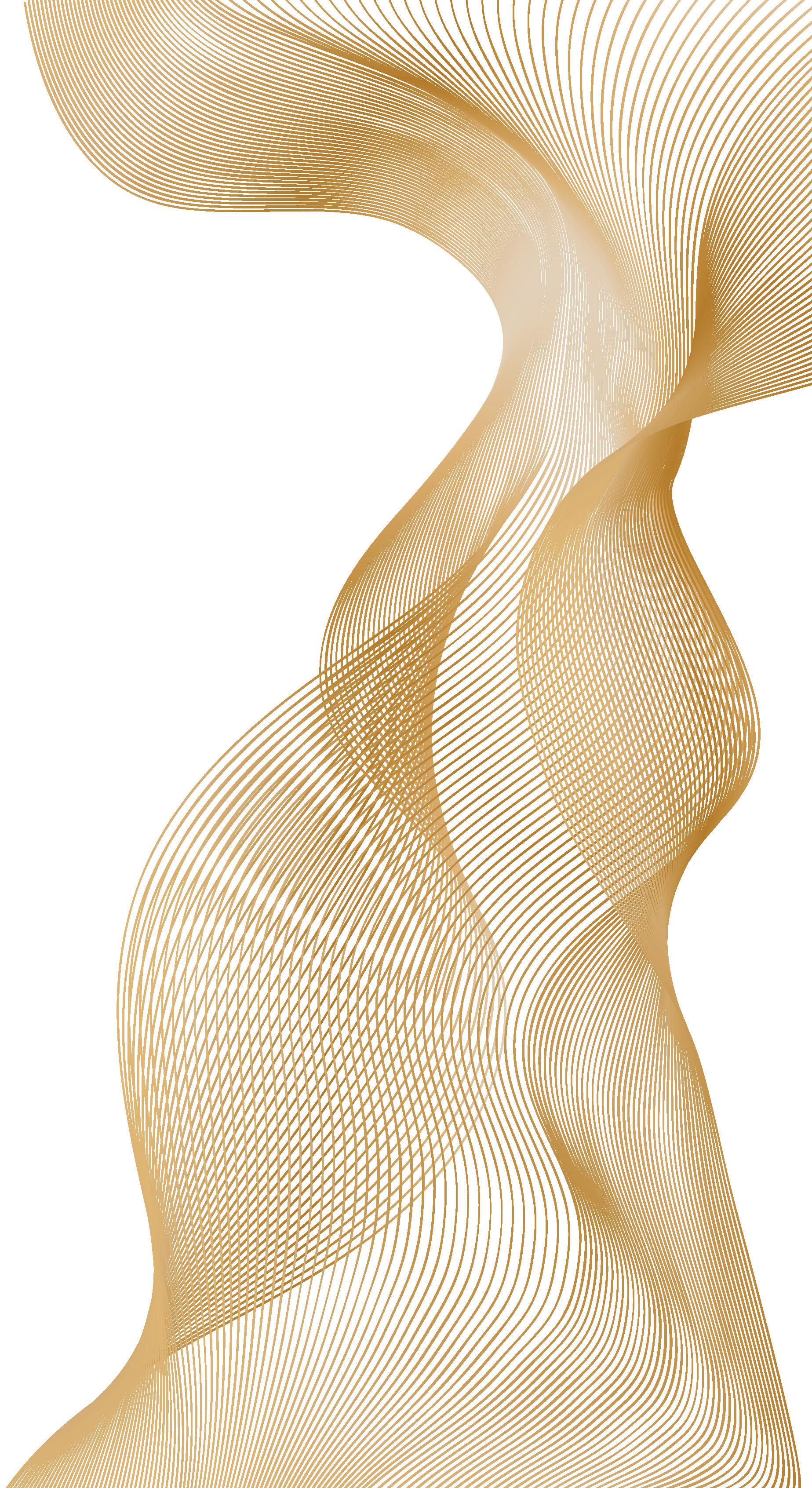
MODEL: Abdullah Olakukan ³
Trends come and go, and along with that, so do your clothes. So what happens to those discarded pieces from your closet that you would never be caught dead in? The influx of fast fashion has fed into the need for overproduction, and in result, an over consumption of clothes that will likely end up in a landfill within a few years. The impact that the clothing production industry has caused on the environment is frightening, and the damages are only getting exponentially worse with every trend cycle.
We have all been there: in a pinch for a new outfit to wear or a fresh festival fit, and fast fashion brands have become a close friend. While these brands may be our friends, the friendship is toxic, just like the toxic fumes from textile production. Brands such as Shein, Zara, and H&M are the biggest culprits in environmental pollution, and the clothes are simply just not made to last. The clothes purchased from these brands are contrived to promote overconsumption, making the consumer want to buy more and replace more. From the year 2000 to present day, the production of fast fashion brands has more than doubled. The surge of influencers and their promotion of new looks and trends has caused an increase and inundation in consumer demands. And as much as everyone loves a good bargain, the low cost of items from these companies derives from their low quality fabrics and unjust employee wages.
25
The fashion industry has fabricated an unrelenting cycle of consumerism and dissipation that is affecting our society and our planet.
These fast fashion companies heavily rely on synthetic fibers; although they make a cute outfit, clothing from synthetic fibers are not doing the environment any justice. Synthetic fibers and materials are currently the primary source of pollution in the ocean, and the effects go beyond just harming marine life. The ocean is not only a home to a multitude of sea creatures, but also acts as a reservoir for the Earth’s atmospheric carbon. The microplastics that end up in the ocean prevent the uptake of excess CO2, so it has nowhere else to go but into the atmosphere, affecting the ozone layer, ultimately leading to global warming. While the carbon is forced into the atmosphere, the microplastics remain in the ocean and can
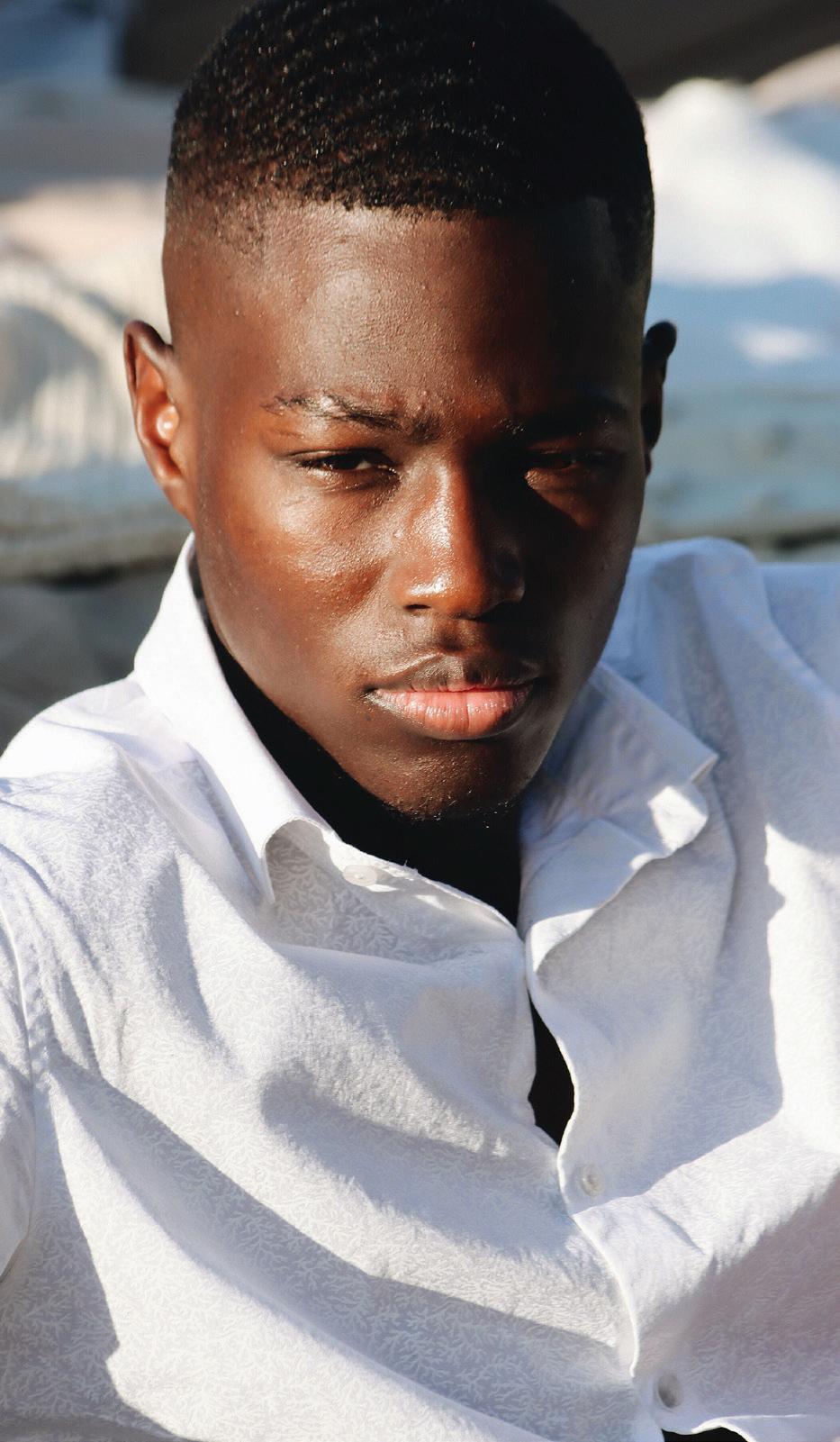
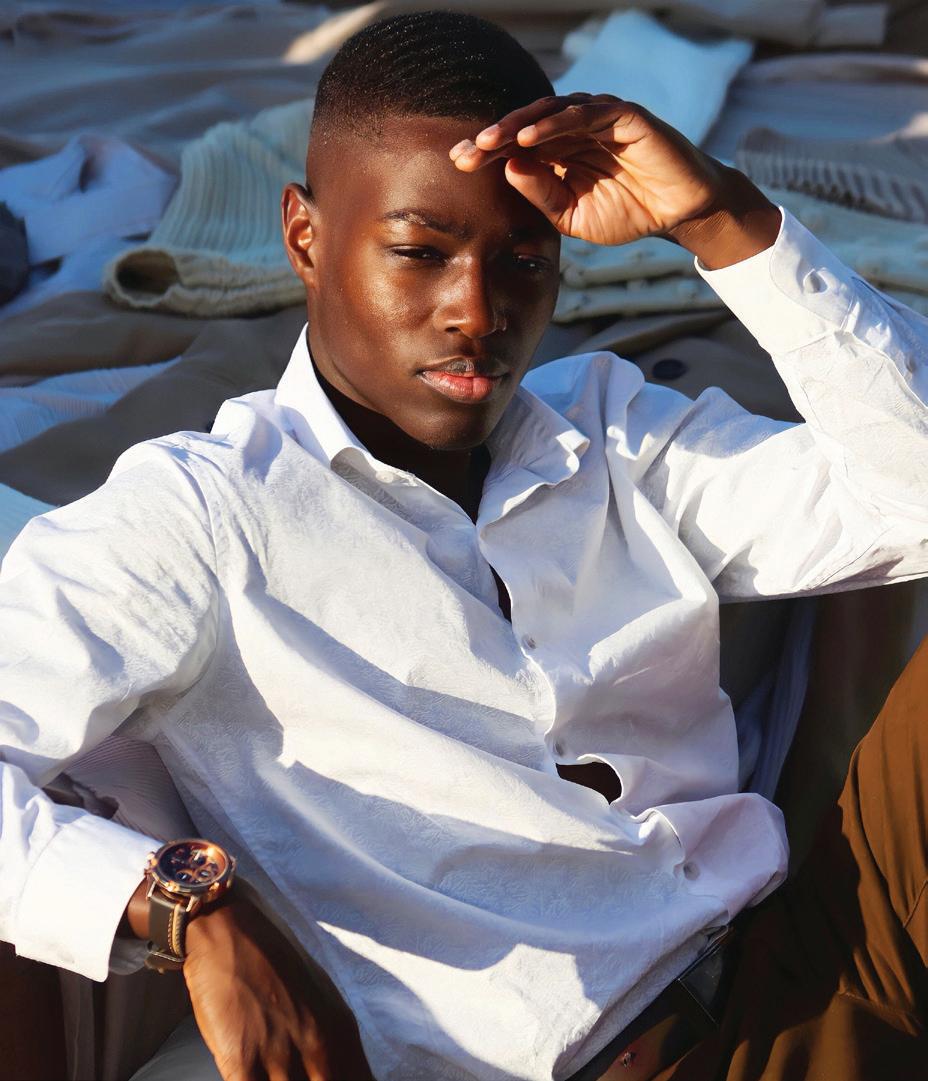
eventually get consumed by humans, leading to serious, negative health effects.

The textile industry comprises 10% of global greenhouse gas emissions and is predicted to increase by more than 50% in the coming years. Additionally, the production of the textile industry releases about 1.2 billion tonnes of CO2 into the atmosphere, and it is only increasing by the day.
The ocean is overflowing with microplastics while drinking water sources are running dry. The textile industry has caused a 7% decrease in groundwater globally, making it one of the top water-intensive industries in the world. The water cost of growing one kilogram of cotton is 7,000-29,000 liters; it does not stop there, even more water is needed to process the raw cotton to be used in clothing production. The textile industry is taking away clean water from countries that are suffering water shortages.

26
⁴ ⁵
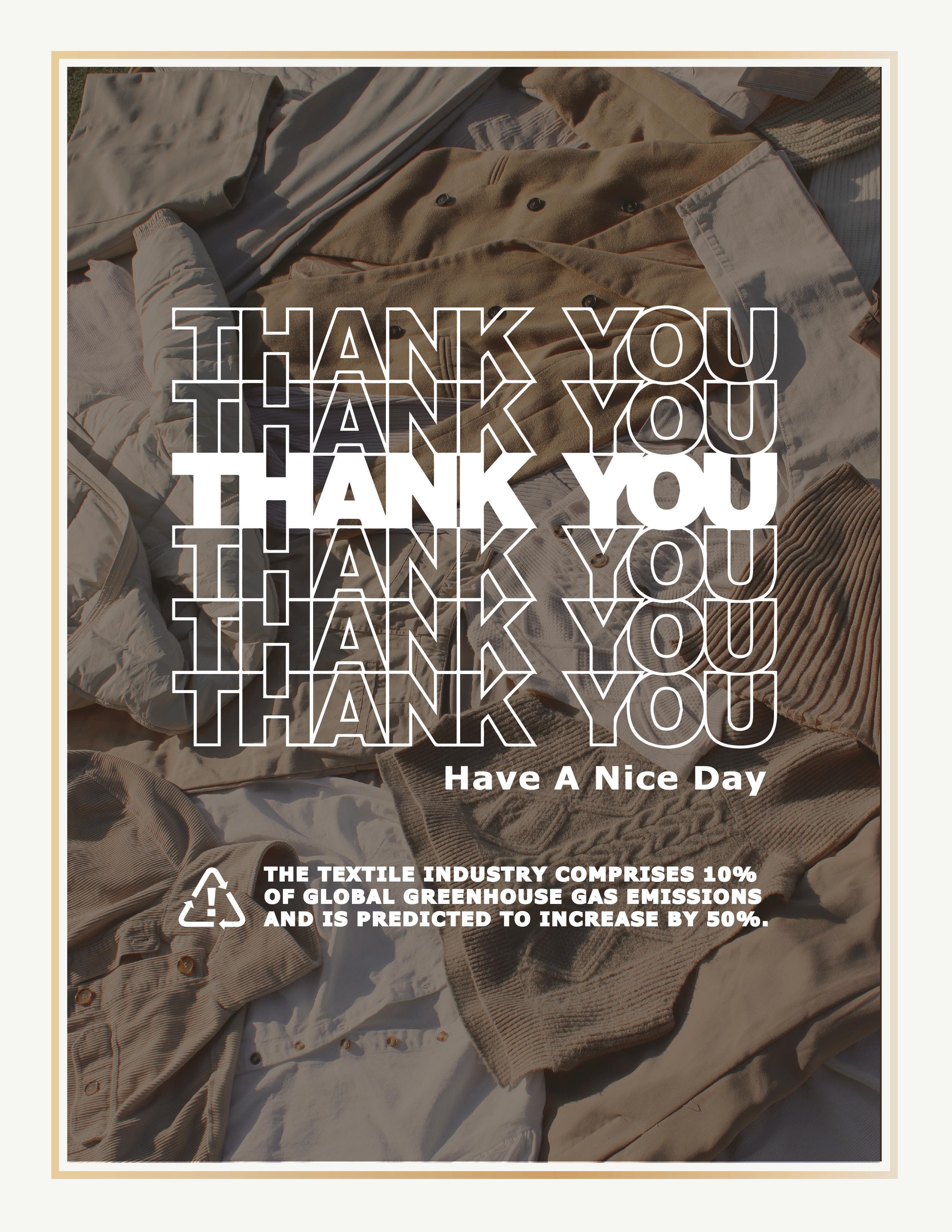
27
Most at risk are developing countries where textile factories are often located. Lax regulation as well as low manufacturing and labor costs are contributing factors as to why companies find these places so attractive for factories. However, the ethical implications are blatantly unacceptable. These factories are exonerated from the liability of their unethical treatment of employees, and are able to take advantage of the scarcity of jobs to pay unfair wages. Such aspects of production allow fast fashion brands to produce at low costs and therefore, are able to sell at consumer friendly prices. However, the unscrupulous nature of production in these countries, like China, is forcing the shutdown of factories. The consequences of climate change are inadvertently causing the downfall of mass textile production, with water scarcity as the leading cause.
Reduce. Reuse. Recycle. This adolescent lesson on waste is even applicable to fashion… sustainable fashion. This is the consumption of products that aim to reduce the carbon footprint on the planet and reduce the environmental impact of production. Over 57% of waste from textile factories end up in landfills, with a disconcertingly low amount reused in further production. The waste of materials is not only negatively affecting the environment, but it is also prematurely leading to the industry’s own collapse. In order to avoid the collapse of the industry and the planet, change needs to be enacted on both large and small scales. While the industry is composed of large conglomerates that are unable to abruptly change their economic models, small scale change can still happen. Individual efforts to end fast fashion consist of buying clothes second-hand, wearing items more often, and being more aware of where your clothes are coming from. Sustainable fashion encapsulates many aspects of helping the planet: ethical, circular and conscious fashion are all ways to reduce the carbon-footprint in the fashion industry.
Again, the fashion industry is destroying the planet, and it will continue to do so. Whether we consciously realize it or not, fashion is an integral part of daily life. But, its effect on the environment can be reduced. The industry is collapsing in on itself and change is needed to maintain the longevity of fashion and the planet. Implementing sustainable fashion into major consumerism can greatly reduce the carbon footprint that overproduction is pouring out. So, when looking into the seemingly never ending abyss of your closet, are those items sitting in your shopping cart really worth it?
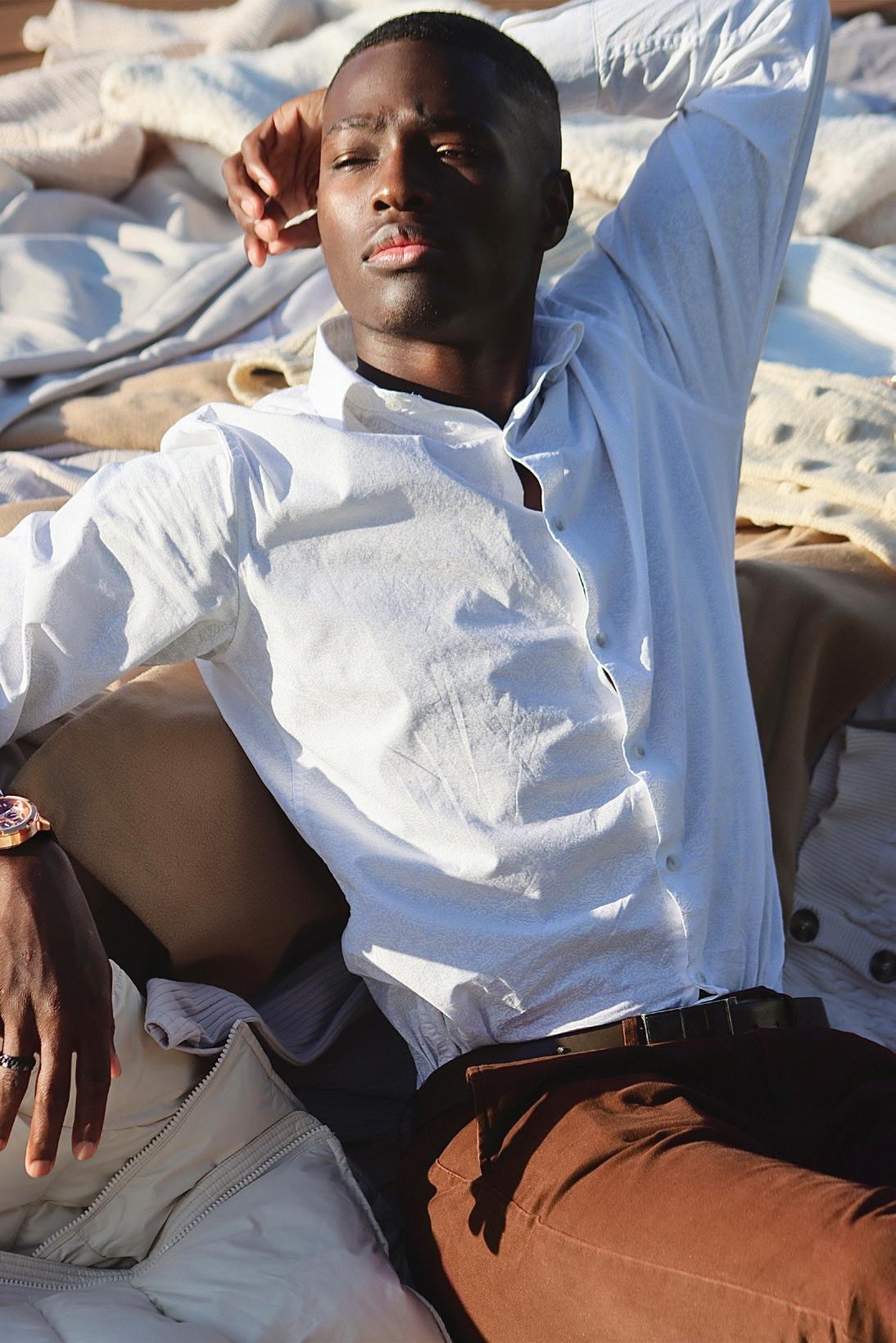
28 ⁶
SO, WHEN LOOKING INTO THE SEEMINGLY NEVER ENDING ABYSS OF YOUR CLOSET, ARE THOSE ITEMS SITTING IN YOUR SHOPPING CART REALLY WORTH IT?
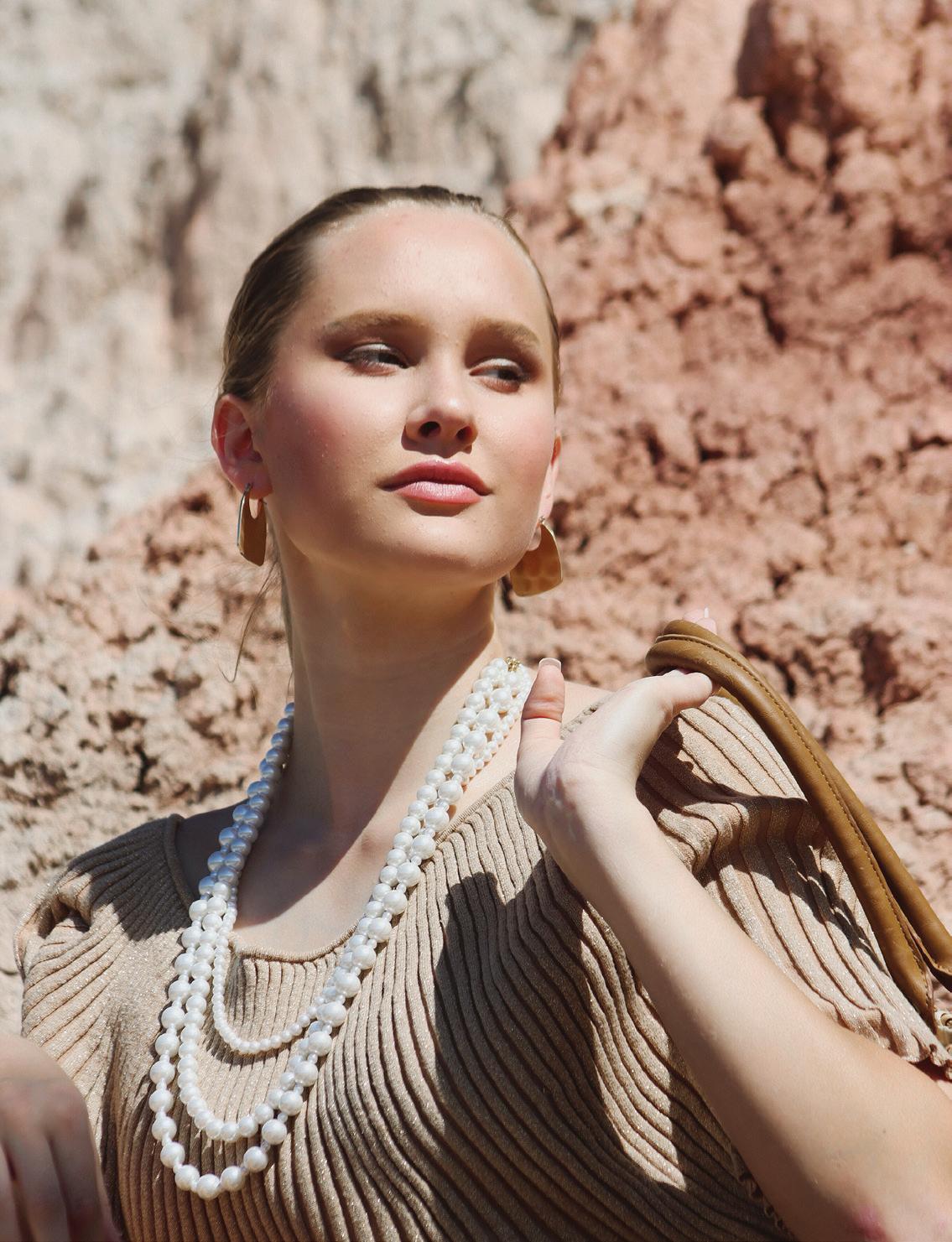
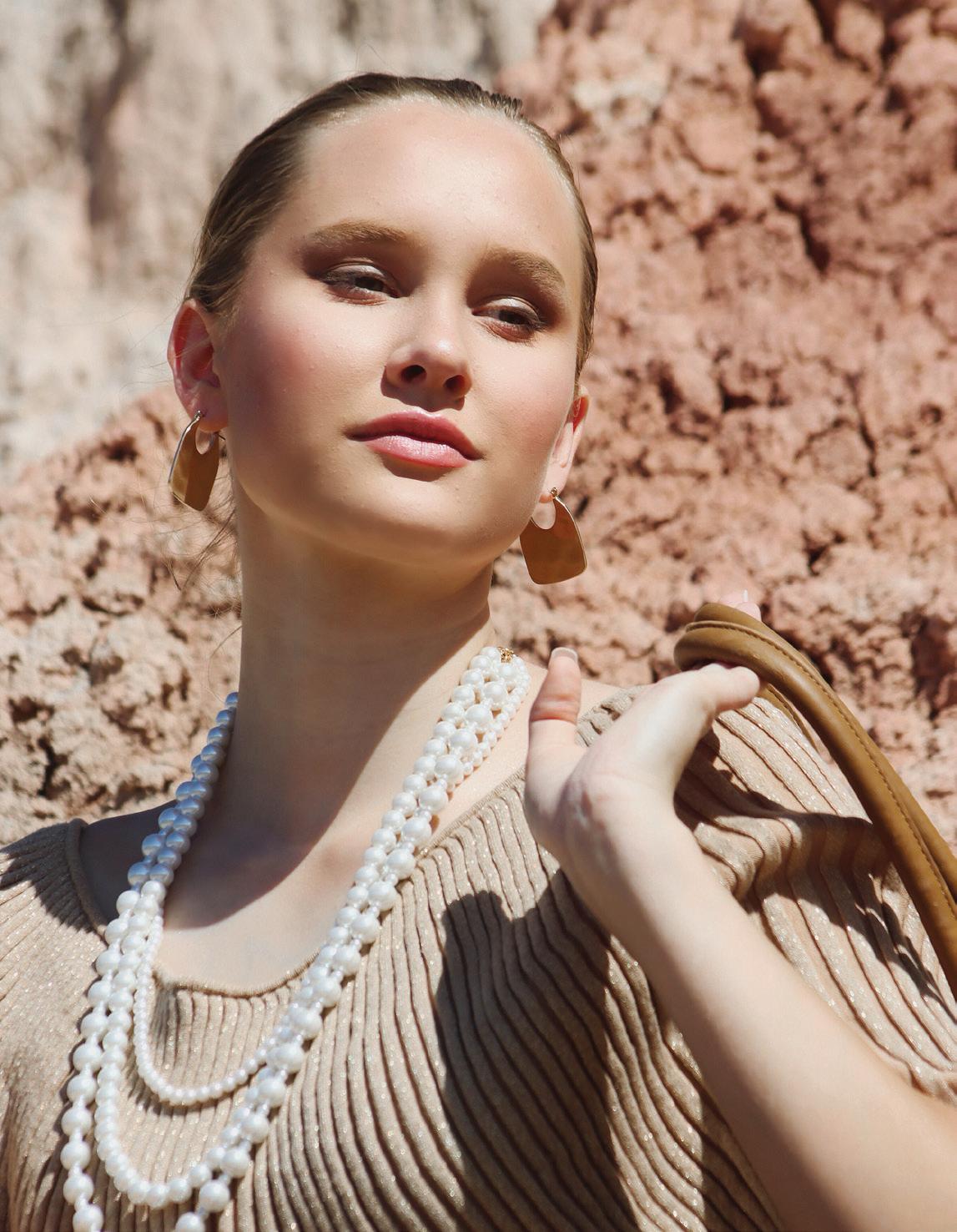
29
 Photography: Alexis Holt
Photography: Alexis Holt
30
Model: Kyla Lumpkins
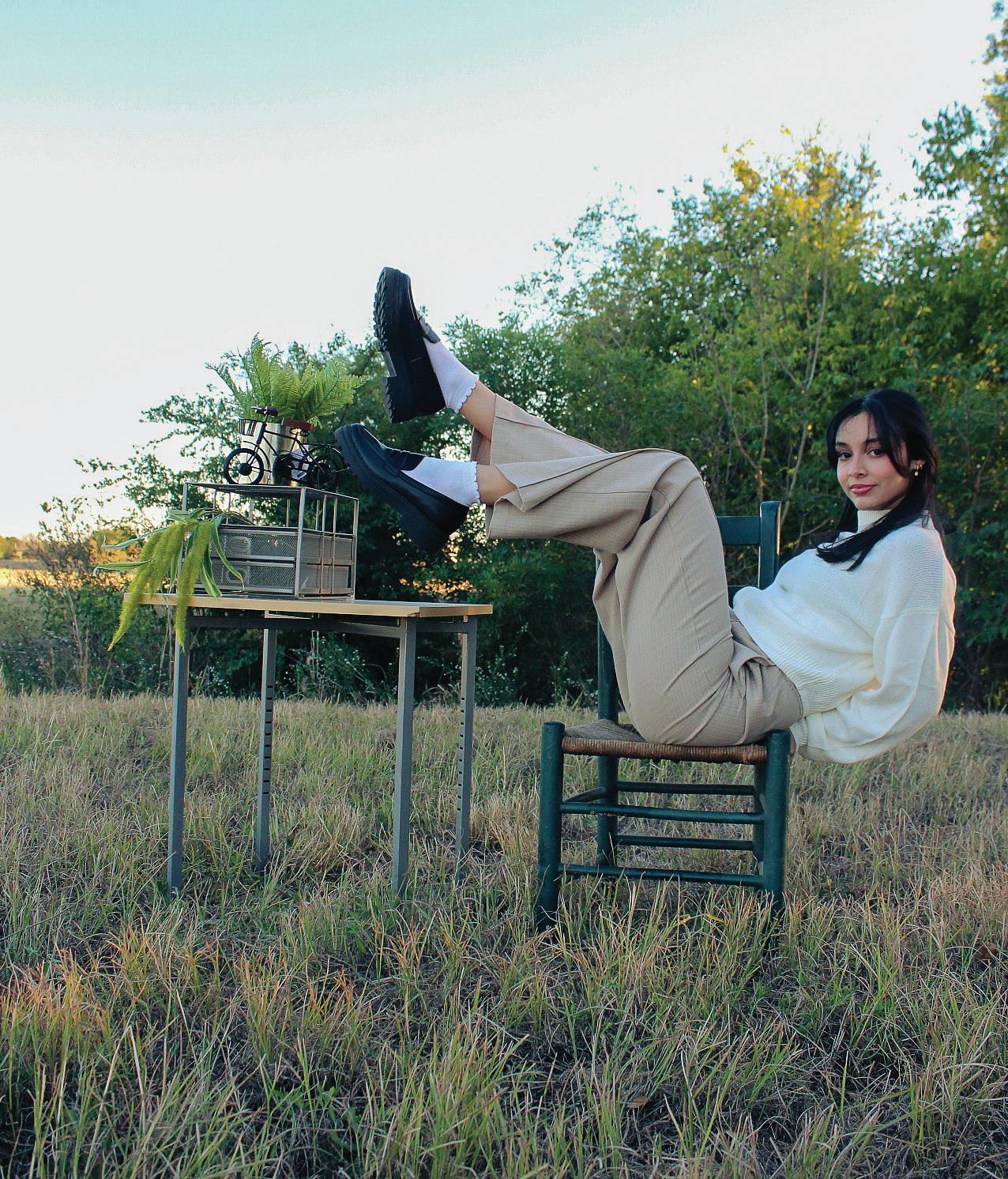


31
TRANSFORM YOUR ENVIRONMENT TO BE ONE THAT FACILITATES THE PEACE OF MIND AND GROWTH YOU WANT TO SEE FOR YOURSELF.
Have you ever cleaned your room and felt a weight lift off your shoulders? What about clearing the notifications on your phone? Whether you are consciously thinking about it or not, your environment influences your mental health. The most notable factors of your environment are its aesthetics, sensory, people, culture, and familiarity.
AESTHETICS: CLUTTERED VS TIDY SPACES
The amount of items in your space can be too much to process. Clutter is linked to reduced executive functioning, procrastination, reduced productivity and emotional exhaustion. Additionally, disorganized environments threaten an individual’s sense of personal control, often exhibiting self-regulatory failure. A common result of self-regulatory failure is impulse buying or snacking.
To take steps toward an environment that works for you and your productivity, we recommend...
1Cleaning up your room. Just do it. If you need assistance with decluttering, we recommend Marie Kondo’s books. Your room can also invite or discourage connection with others… (see the third factor: People)
2Reorganizing the apps and files on your devices. To be most effective in this task, we recommend reading “digital minimalism” by Cal Newport. Some aspects include deleting files not needed anymore and evaluating which apps are of less use than what’s worth the clutter.
SENSORY: LIGHTING,TEMPERATURE, SOUNDS, SMELLS, AND COLOR
According to talkspace, “we spend a lot of time thinking about what’s around us. and all that external stimuli has an effect.” Your senses are working: temperature, scents, noises and visual crowdedness. More specifically with lighting, it “directly affects our circadian rhythms and these sleep habits are closely linked to mood.” Insufficient levels of light can catalyze stress/anxiety, per Newport Institute. In terms of smells and colors, “anxiety and depression levels are higher in areas without parks and green spaces.”
For the spaces you can control, alter what your senses pick up… 1Brighten up your space… opt for pastel colors or white shades that reflect light
2Get natural light every day. The National Environment Study shows that individuals are likely to report good health and high wellbeing after spending 120 minutes outside per week! In fact, “those who spent between one and 119 minutes outside per week reported the same amount of well-being as people who spent no time outdoors at all.” 3Incorporate nature into your every day or bring it inside… If you’re a student, try to take breaks outside while studying
4Try aromatherapy. For relaxation and calming the mind, chamomile, lavender, rose, vetiver, and ylang ylang are ideal. To improve energy levels, try citrus, clary sage, coriander seed, ginger, lemon, orange, peppermint, or sandalwood. Bergamot, lavender, petitgrain, and rose are good for stress relief. Mental clarity and memory improve with cinnamon, frankincense, lavender, lemon, and peppermint. Your sense of smell is working just as much as your eyes are. 5Try different kinds of music that invokes concentration and feelings of calmness
32 ⁷ ⁸ ⁹ ¹⁰ ¹¹ ¹² ¹³ ¹⁴ ¹⁵
PEOPLE: RELIABILITY OF RELATIONSHIPS
It is not news that your devices and social media impact your mental health and in-person relationships, but what’s one reason why? Digital clutter is still clutter. According to digital minimalism by Cal Newport, digital clutter is “distracting,” causes “compulsive behavior,” and makes individuals “anxious,” taking time away from more meaningful productivity and relationships.
¹⁶
To foster focus in your relationships, start doing these this week:
1Ditch having full conversations via text message. Instead, use technology to set up in-person meet-ups, where you can be fully present in your connection.
2Put your phone away from sight during quality time. You don’t have to be using your phone for it to be a distraction… having your device displayed may cause acute levels of anxiety for the other person because you are giving the impression that what’s on your phone is more important than the people around you.
3Activate “Do Not Disturb” when your focus is on someone else. The sound of notifications are distracting and can redirect your focus from the other person onto “who is trying to reach me?”
CULTURE & VALUES: DEPTH OF RELATIONSHIPS VIA CONNECTIVITY OF SHARED CULTURES
Relationships are cultivated through quality time and conversation that creates connection. Without feeling deeply understood, it’s common for an individual’s feelings of isolation and depression to arise. Deepen your relationships by:
1Joining a community or organization that aligns with you culturally or with your passions. Indulge in the connections that are without judgement and make you feel heard
2Being constantly curious about others’ cultures. Start that conversation and be the one who listens. You might be more similar to the other person than you originally thought.

FAMILIARITY: POSITIVE/NEGATIVE ASSOCIATIONS WITH YOUR ENVIRONMENT (EX: PHOTOS, FAMILY KEEPSAKES, FAMILIAR OBJECTS)
If something in the environment reminds one of a difficult time, that item may trigger old feelings like anxiety. Positive associations of familiar objects can do the opposite and trigger feelings of connection and good mood. Increase familiarity in your every-day, especially when you’re in an environment of change.

1Keep a photo of loved ones in your wallet. When you are feeling overwhelmed, this glimpse of home can help ground you
2Donate or pass on objects in your house that are not connected with positive thoughts. That perfume your cheating ex gave you? Donate it. That sweater that you know you do not feel confident in? You do not need that reminder around you!
Your mind is a reflection of these five factors of your environment, both the good and the bad. Analyze the spaces around you and take note of how they may be subconsciously affecting you. Then, transform them to support the productivity, clear mindedness, and improved moods you want in your journey of self growth.
Writer: Megan Konvicka
Photography: Esha Uddaraju
Design: Annette Guerra-Armendariz Model: Idani Cantu
34
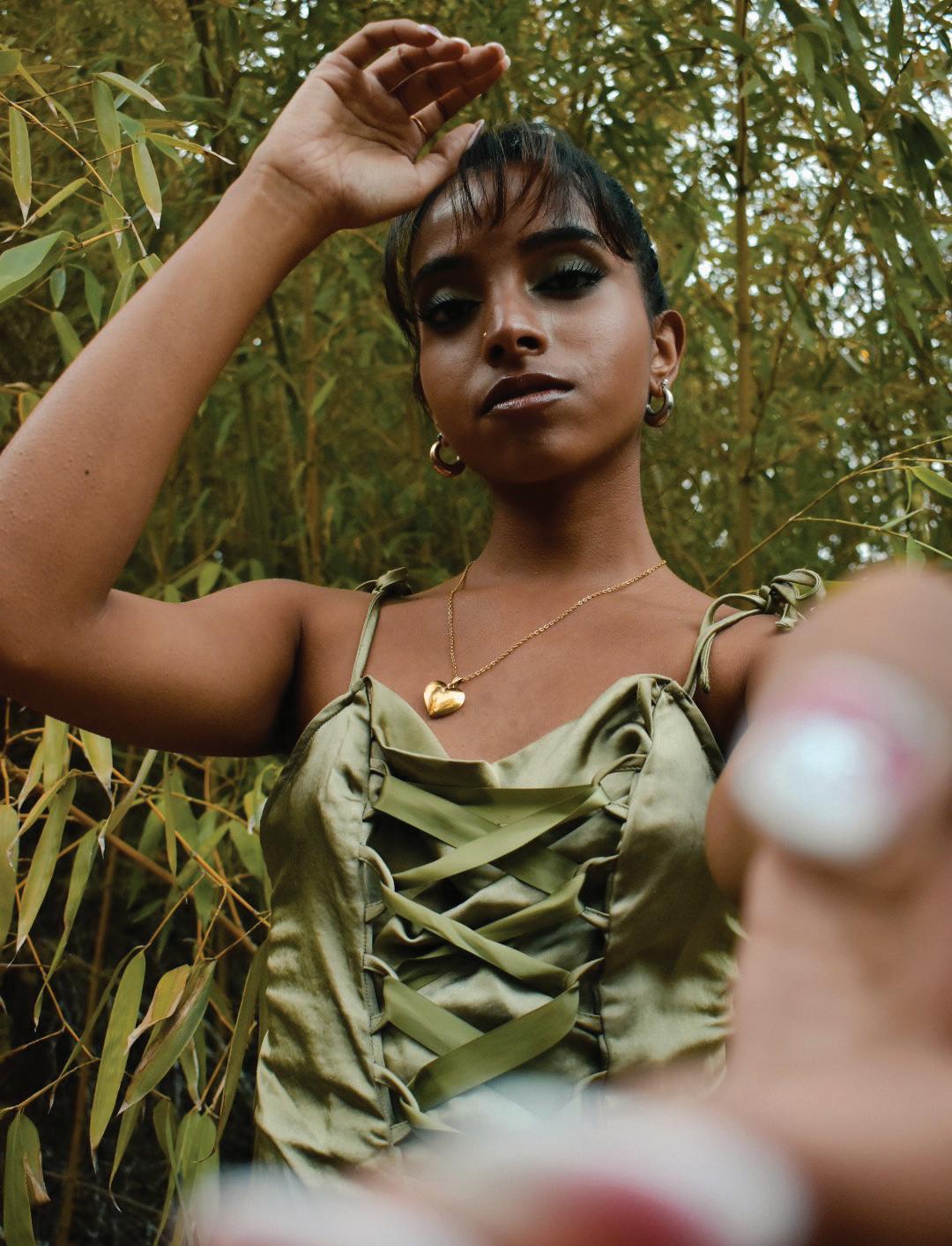
35

36
Photography: Krystal Pham Model: Apoorva Selvakumar
A-Line writer Chloe Foster supports this designer’s forward-thinking.
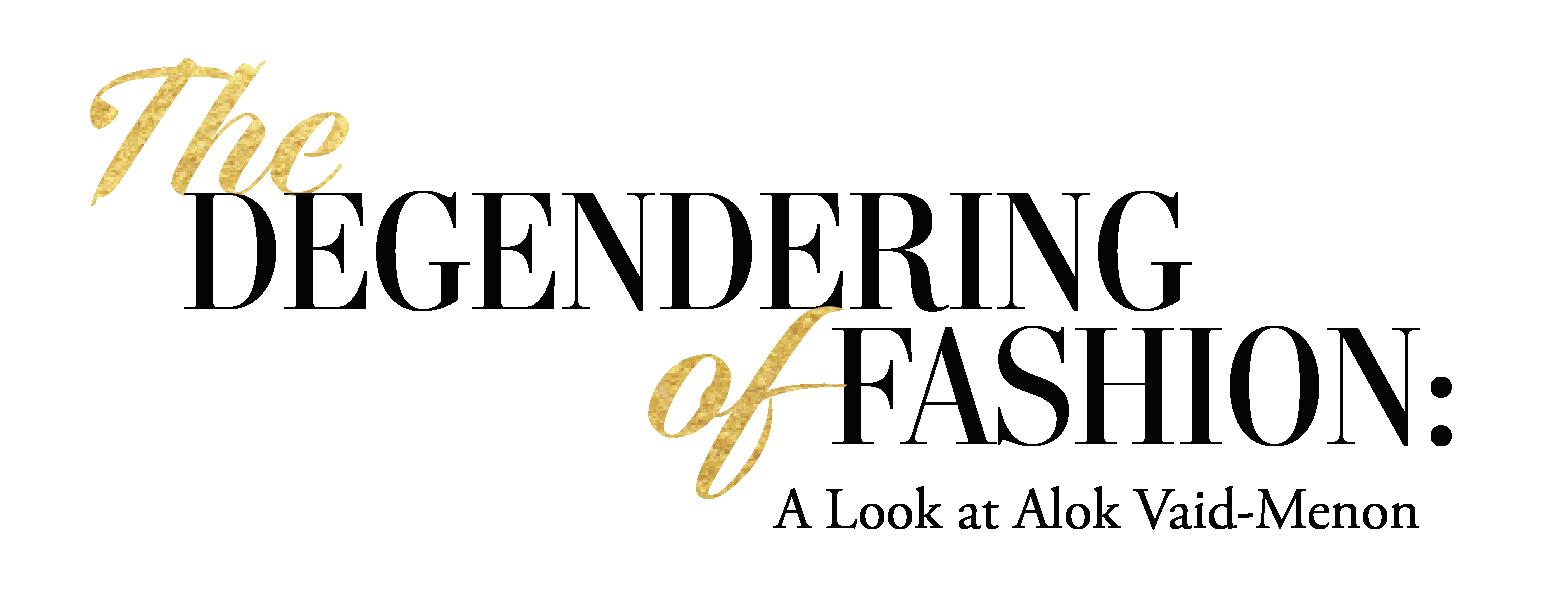

37
“We must do this not to be politically correct, but rather to stop being incorrect.”
The idea of gender–especially gender expression – is by no means innate; no one is born with the knowledge that dresses are for girls and suits are for boys. At some point in our lives, we are socialized to believe that gendered fashion is natural. Items of clothing have no gender until we choose to associate them with “male” or “female.” Not only is this an antiquated idea, but it is also harmful. Besides serving to reinforce gender stereotypes, it also makes those who do not ascribe to gendered fashion appear to be “other.” People have a natural tendency to fear the unknown. However, some individuals respond to this fear with aggression and violence. Imposing a stark gender binary on fashion puts people who do not follow these anachronistic rules at risk. This is why degendering fashion is an anti-violence imperative.
Alok Vaid-Menon is a transfeminine nonbinary poet, comedian, author, public speaker, and artist. Born in College Station (WHOOP!), they have achieved many accomplishments in their 31 years. Alok has appeared on multiple television shows, published three books, toured over 40 countries, released 3 fashion collections, and started the movement #DeGenderFashion. The concept of degendering fashion as an anti-violence imperative is one of Alok’s core beliefs that they explore in their blog posts, speeches, and online presence.
A clear theme exists in what we currently know to be nonbinary fashion; a theme that Alok detests. There seems to be a distinct idea in the fashion world that when individuals find themselves in the gray spaces of the gender binary, it should be reflected in what they wear. Clothing that is traditionally accepted as androgynous has several clear tendencies. Nonbinary fashion is gray, it is ill-fitting, and for some unbeknownst reason it is nearly always composed of traditionally male articles. Alok seeks to challenge these dull designs, opting to design their own clothing and dress in a way that is the complete opposite. They mix the juxtaposing concepts of what we know to be masculine presentation and feminine presentation. A ballgown with chest hair sprouting from the collar, a bowtie and vest with a full face of makeup, a crop top with a happy trail – these are all looks that we have seen from Alok. Not only do they challenge the gender binary, but they also challenge the idea that androgyny needs to be muted and monotonous. As Vaid-Menon so eloquently stated,

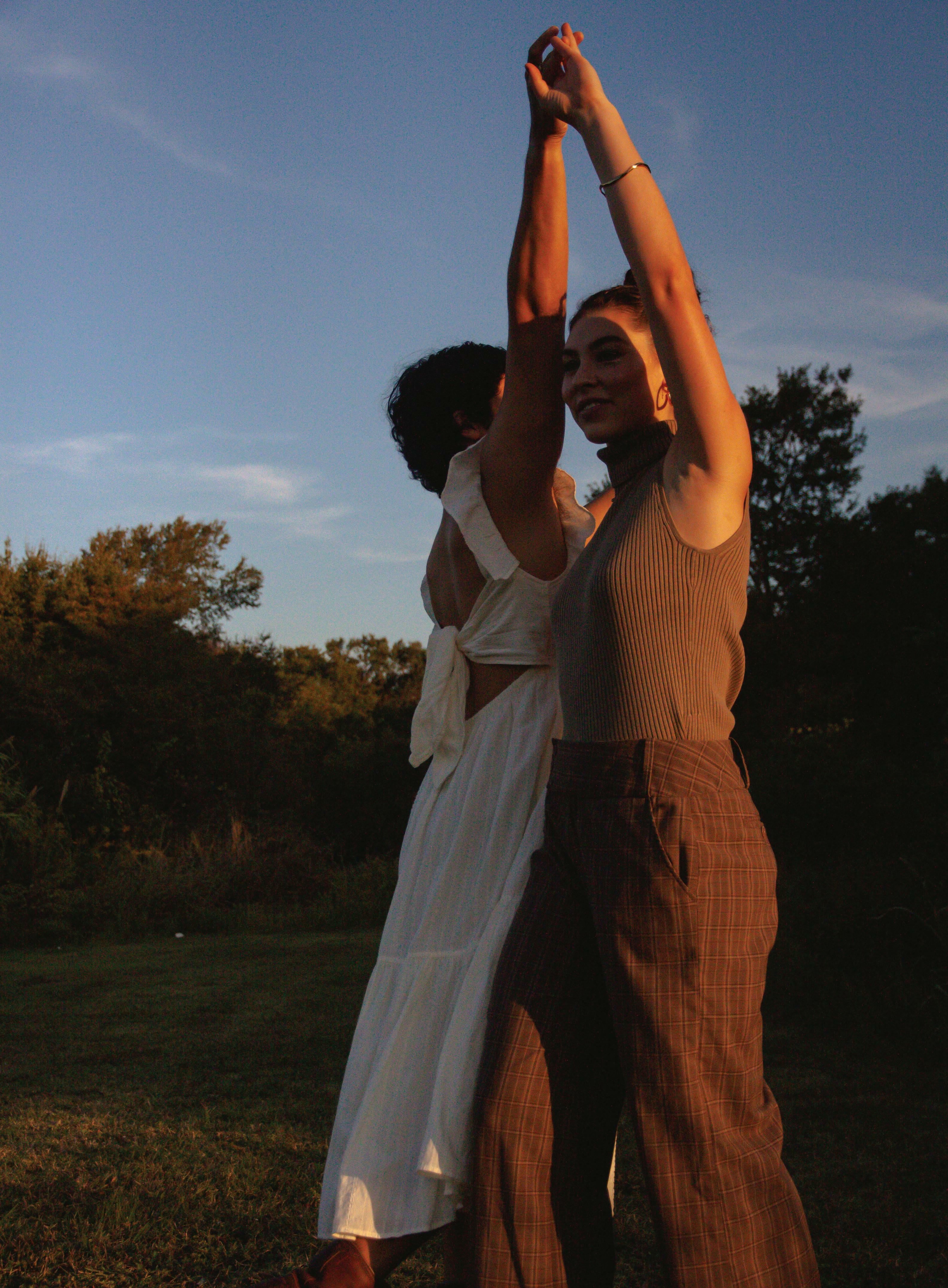
WRITER: Chloe Foster

PHOTOGRAPHY: Emma Trueba DESIGN: Morgan Tran
MODELS: Andy Cruz, Sarah Schultz
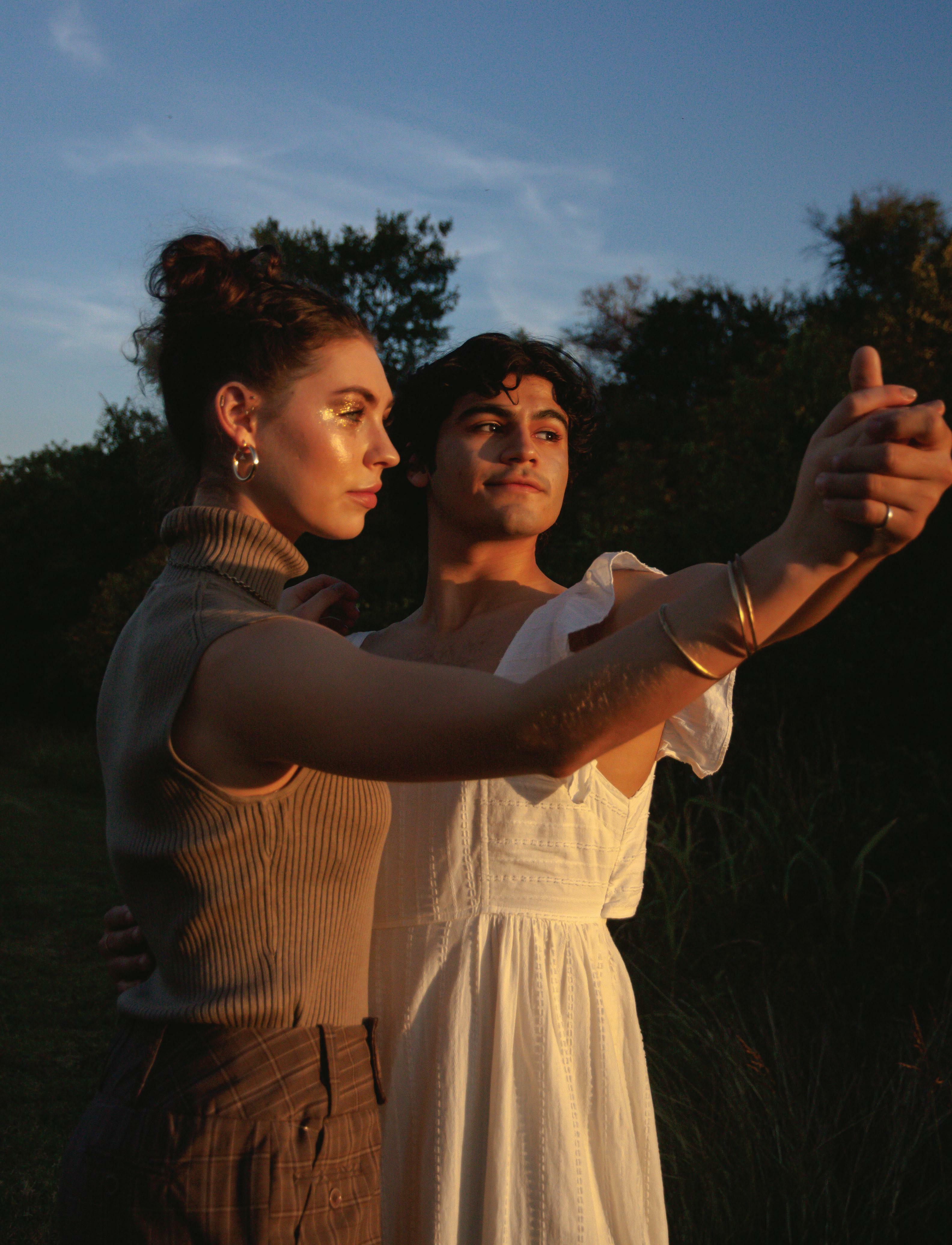
“Gender neutrality is not the death of fashion, it is the renaissance of fashion”.
39
As a designer, Alok composes pieces that dazzle the eye. The silhouettes – often dramatic and flowy with fun collars and sleeves that bloom from the body – are enough to stand alone without color or patterns, but they take it a step further with the bold fabrics. Cartoon graphics, a print that is covered in bananas, metallics, and tulle; if you could name it, then Alok could make a stunning garment out of it. This style is definitely not for everyone, but that is not the intended goal. Clothing should be another way to express ourselves, not just to attract other people to us or to receive praise. Mx.Vaid-Menon began designing clothing for this purpose.
Faced with a world that, at times, seemed to have no place for them, they opted to develop their own place. There were no clothes on the market that were designed for people like them. In the face of adversity, Alok shone through and started crafting their own clothing so that they could feel comfortable, fashionable, and like themself. This is not to say that they didn’t face any backlash. In fact, the aftermath of their forward designs brought aggression; this is what pushed them to create their first fashion collection. When people told them that they were too loud, they chose even louder prints. People thought their personality was too big? Well, they would create bigger silhouettes. Alok aimed to create clothing that represented how they would dress in a world where they did not have to live in fear of bigoted violence. In doing so, they ignited a spark in the fashion world that has the potential to burn down our current, yet outmoded fashion guidelines.


Revolutionizing the basic ideas of fashion may seem like an unattainable task. Luckily, Alok lays out the steps that we need to take in order to degender fashion. On a macro-level, we need to move past gender segregation that we see in stores, magazines, and fashion weeks. Casting decisions for photoshoots and other media need to include a significantly wider variety of people. The media that we consume should be representative of the society and the people around us. Not everyone is a slim, tall white woman; we need to stop pretending that this is the only acceptable model of beauty. There are also changes that we can make on an individual level to aid in this metamorphosis of fashion. It is paramount that we do our part to take a stand against the rise of transphobia. One of your family members makes a comment about Caitlyn Jenner or Elliot Page? Don’t just give them a dirty look across the dinner table, say something. If you can, donate to organizations that fight for trans and nonbinary justice. Look into gender nonconforming fashion creators that you can support. We have the opportunity to alter the norms of fashion, and with this, protect the lives of transgender and nonbinary people. The question is:
Do you care enoug h to do it?

40
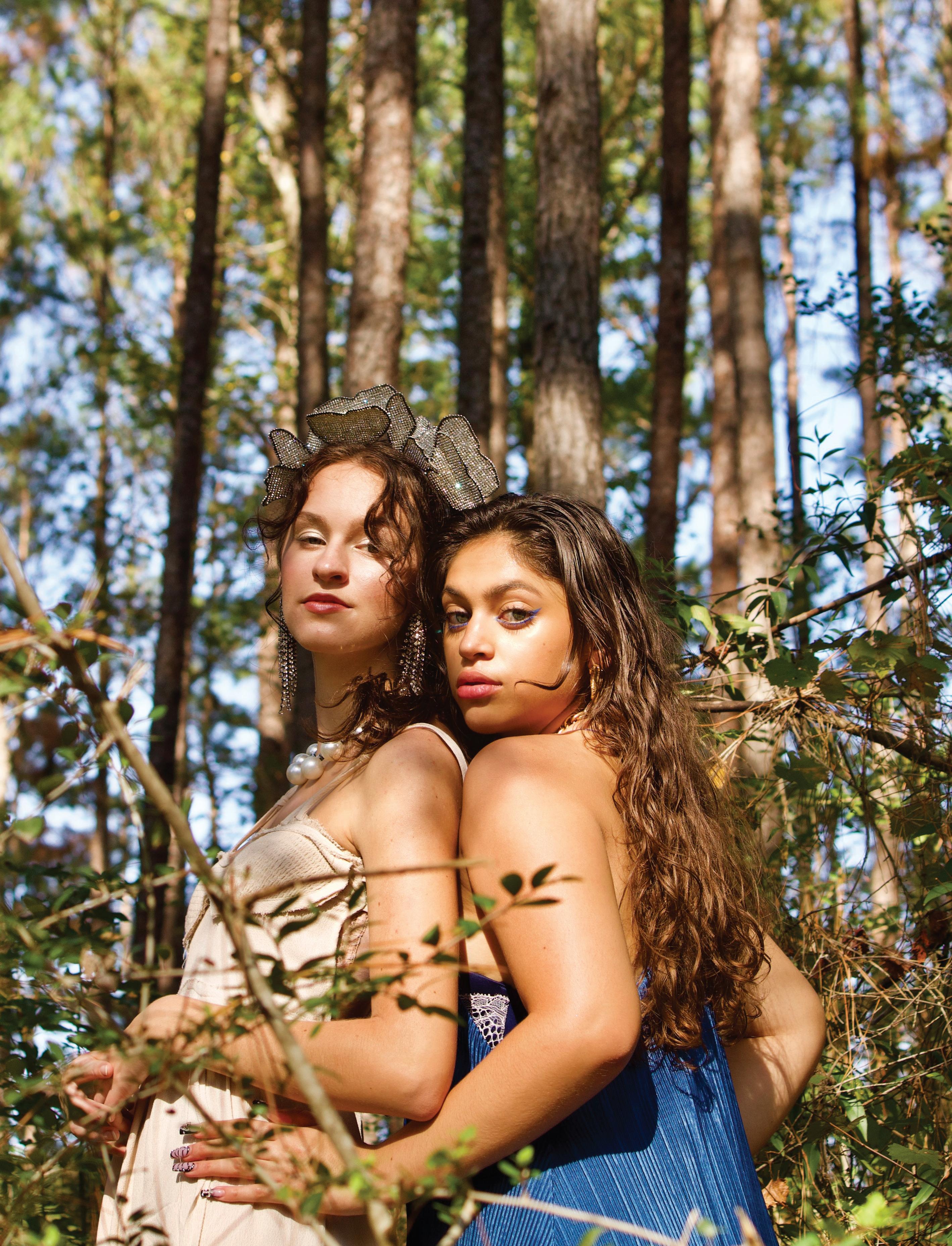
41

42
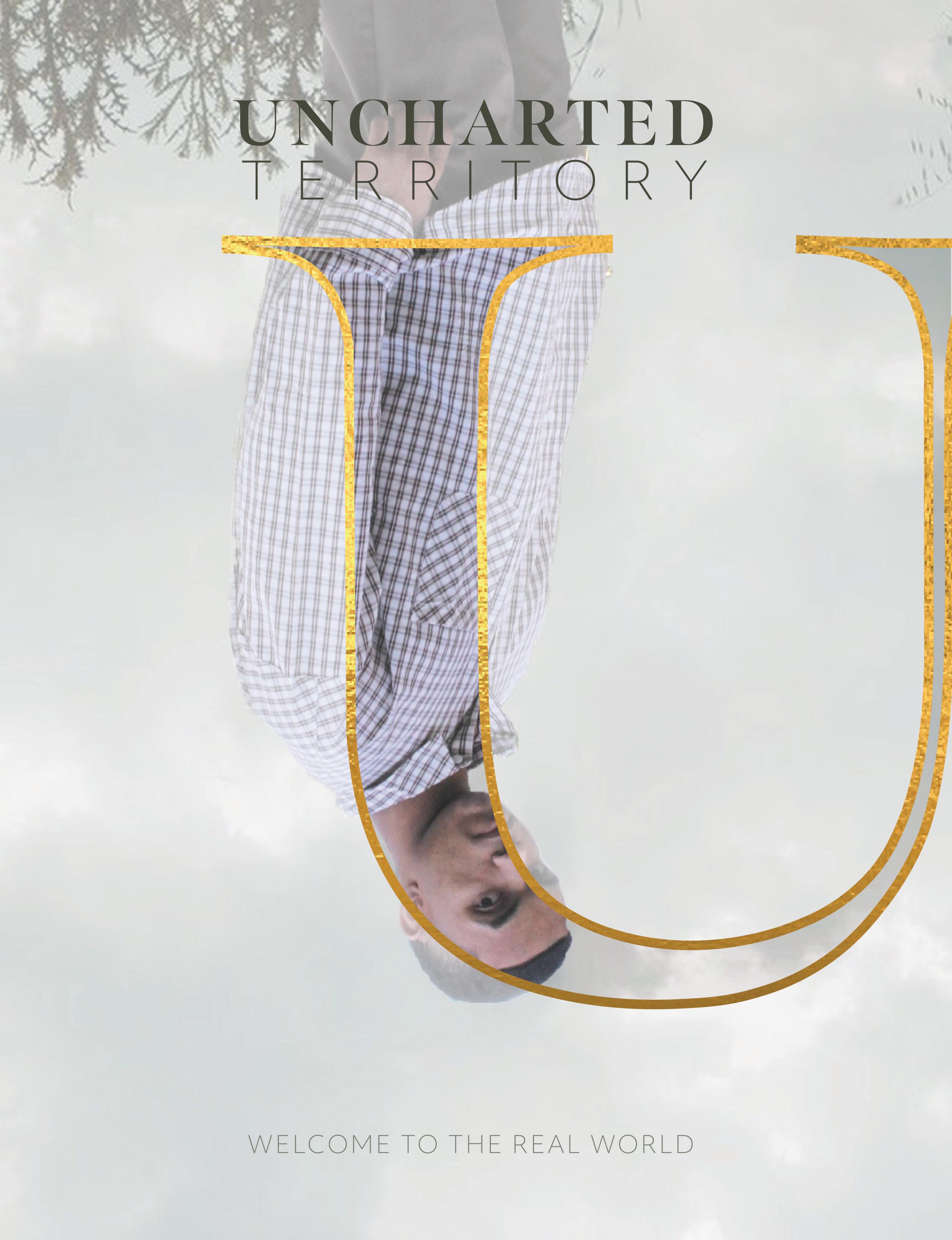
43
different ways. The hesitation and anxiety we feel is valid when someone asks about life after graduation; it makes for some pretty awkward holidays, but it’s also a shared fear. We all struggle to live in the moment and soak up every “college experience” without worrying about the unknown life that comes after we are handed that diploma. Change is a bittersweet feeling that can be overwhelming if not addressed. Not knowing our exact career choices or living situations are uncertainties that can cause this anxiety. It can feel as if we are alone in this, however; we are all scared of the “what if’s” of post-college life. That’s why we asked some of A-Line’s members who are walking the stage soon to share how they plan to conquer this fear.
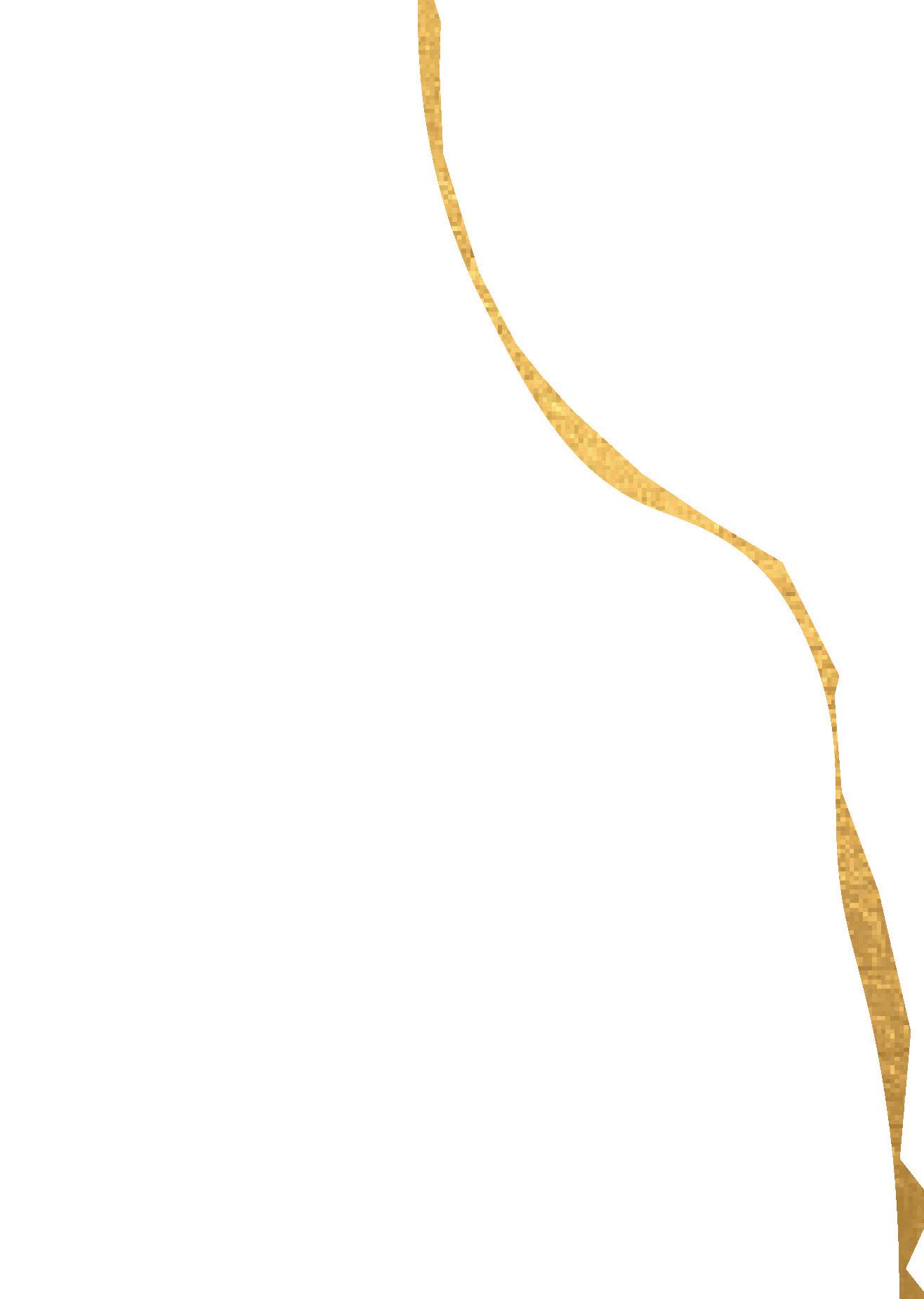


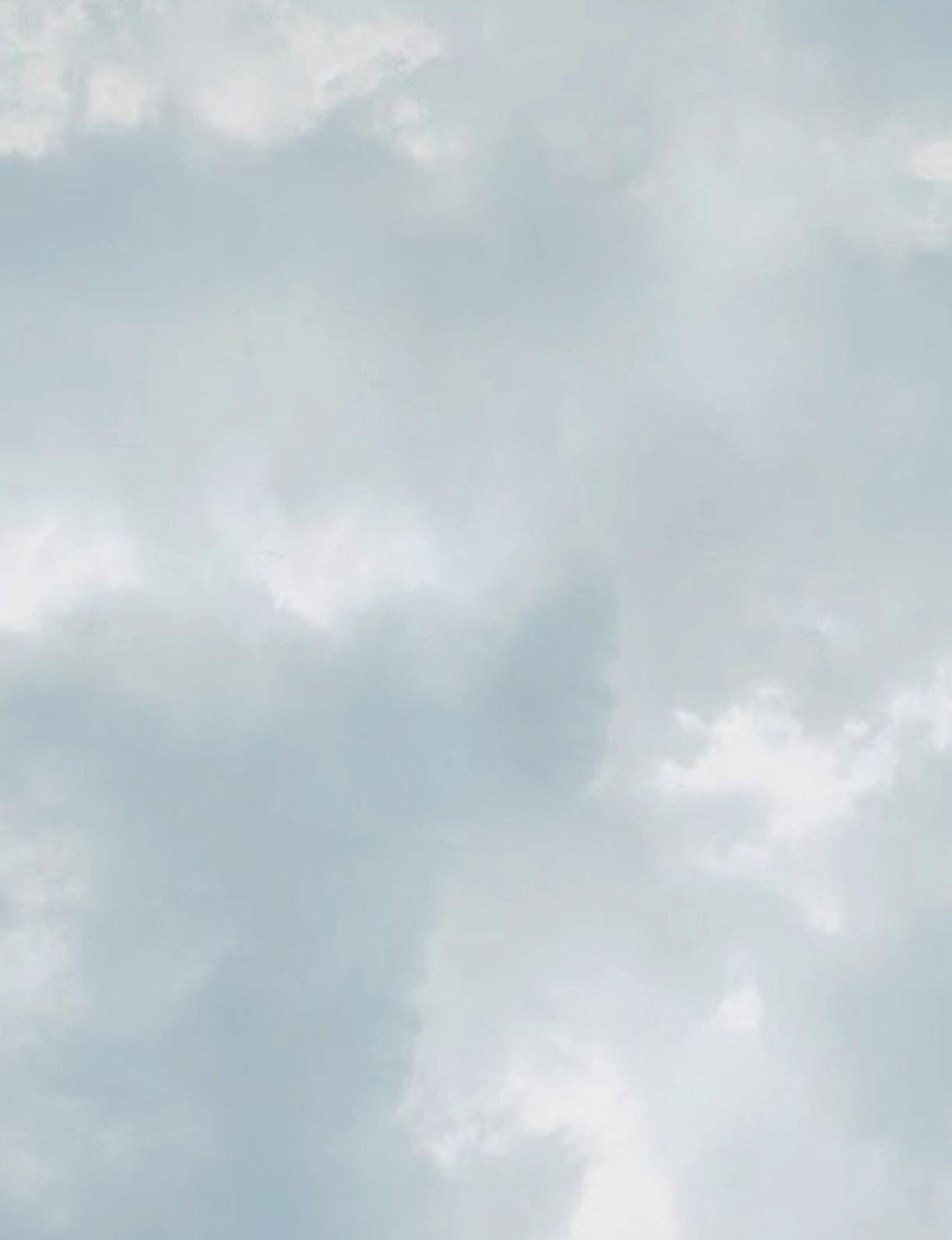
KaylaMarie Valdez, a five-year Marketing double minor in Entrepreneurship and Pre-Law student at A&M, plans to graduate this spring. KaylaMarie began by telling us how she deals with the anxiety of post-college life by thinking about the positives that will come after graduation. She described this saying, “I turn my anxiety into day dreaming about all the wonderful things that are waiting for me after graduating. Like getting out of middle-ofnowhere-College-Station and living in my dream apartment.” By focusing on the positives and fun activities, she is able to find excitement in the unknowns. She turns her attention towards what she can control and avoids the long list of whatifs. She explained how the choices she makes today are the decisions that are going to set her up for success in the future.
KaylaMarie began preparing for her transition when she started her junior year at a job that allowed her to work remotely for a part-time salary. This allowed her to continue her life as a student, work towards financial stability, and grasp an idea of what her future job would entail. She explains how blessed she felt to have so many options for post-grad and how the change would be scary but would include “focusing on the exciting things like apartment shopping and what city I am going to live in next.” KaylaMarie revealed her biggest fear after college: she told us that as a
44
five-year student, she has had various situations that forced her to connect with others such as classes and sororities, but making friends without these opportunities can be close to impossible. We all worry about how to find genuine and meaningful relationships when we no longer have different people in our forced proximity and classes every semester. KaylaMarie reiterated how thankful she was to find a community on Geneva, a group chat based app, with other women aged 18-35. She said she was able to find friends who are looking to “uplift each other in the cities I plan to move to.” When moving to new cities, finding people with similar interests is crucial to prevent isolating ourselves and feeling alone in a new place. This transition can be overwhelming, but having others by your side can make these fears that seem impossible to overcome, conquerable. KaylaMarie ended her interview by saying that the best way to conquer the change and fear of the unknown is to always remind yourself of the ultimate goal and take one step at a time.
Gretchen Evans, our Editor in Chief at A-Line, is finishing her last year here at A&M. Gretchen is a huge role model for the underclassman in A-Line and someone we all look up to. She started by telling us how important it was to focus on “the now” in life and how this helps her deal with anxiety of the unknown after college. She recalled all of the A&M traditions she spent the last four years participating in; football games, annual organization events, intramural competitions, etc. have become a new kind of special because they will be her last as a college student. She told us she loves to “hold on to these moments, and take pride that I am creating meaningful memories with impactful friends and family.” Gretchen continued to explain how she is someone who is always thinking and planning ahead and this fear comes naturally for her. She reminds herself that everything ends up working out in the end and how impactful her hard work will be in the future. She went into detail about a five year plan she created for her personal life and professional career. Although she knew she didn’t have to follow her plan exactly, she made sure her blueprint was realistic enough to have as a loose guideline for her near future. She finished by reassuring us that life is always changing and “It’s okay if things don’t go as planned – it is for the better!”
Many of us who are taking these next big steps towards our careers struggle with this anxiety, and you are not alone. Our greatest advice with this transition is to focus on the positive changes that are coming in your future and don’t let yourself miss out on the present by worrying about the “uncontrollables.” Remember, even though change can be uncomfortable, it is necessary for us to grow and become the best versions of ourselves. Look back at who you were five years ago and see how far you’ve come! The fears you’ve had then, you have already conquered and probably don’t even remember the time you spent worrying about the future you’re now, currently living. We encourage each and every one of you to find unique ways to overcome these fears and embrace neverending change with every opportunity.

45
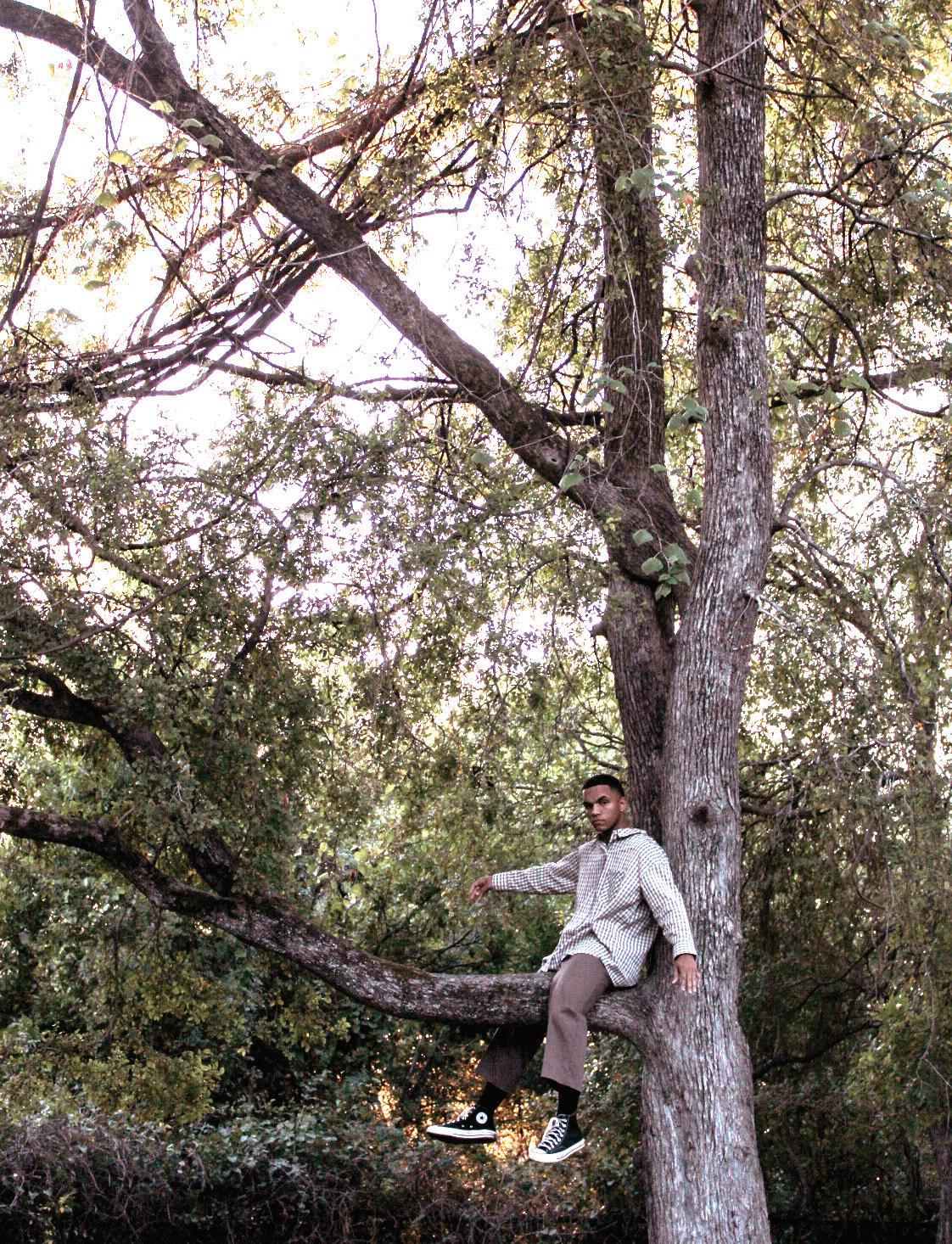
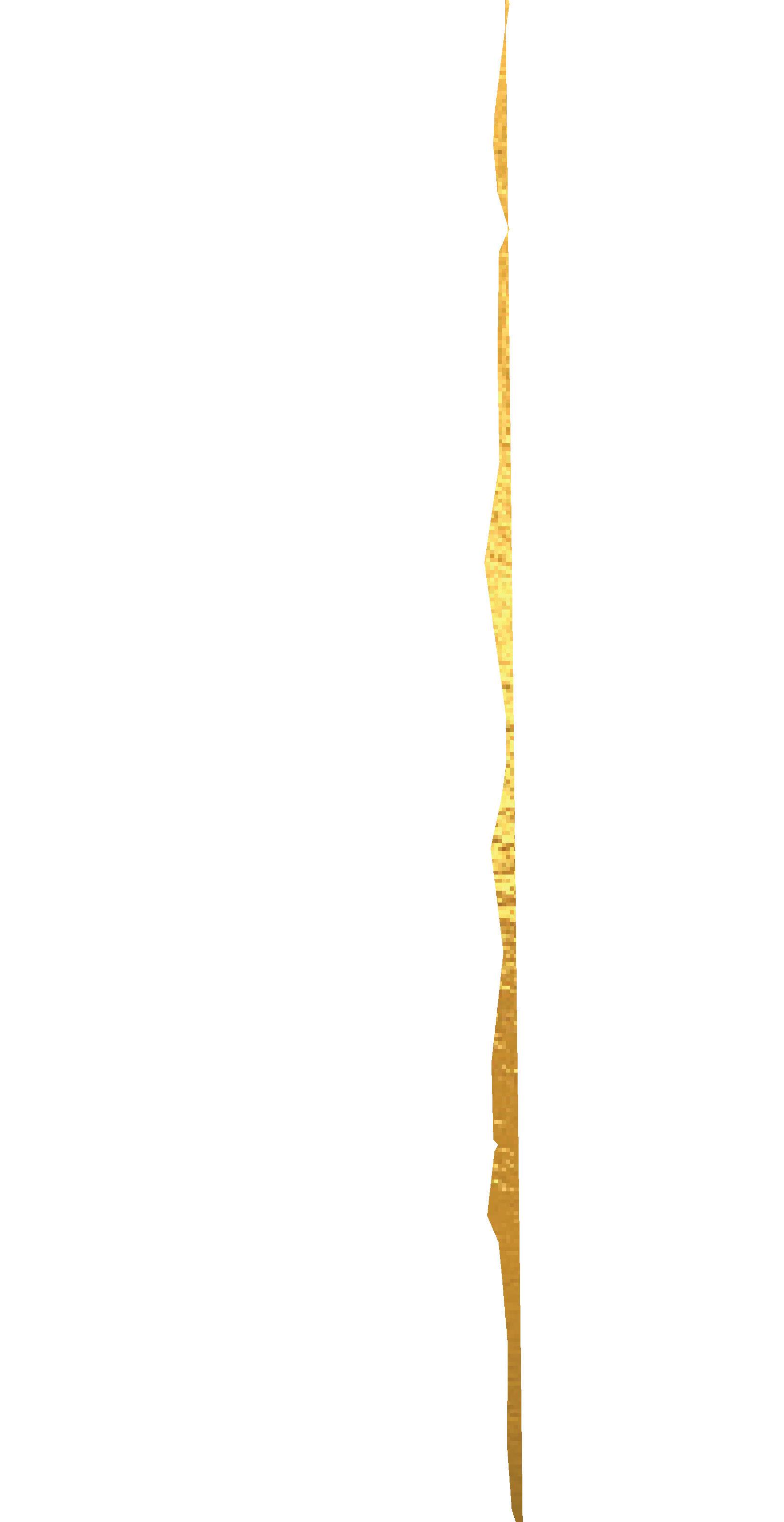
46
Writer: Maddie Townsend Photography: Lacey Loomis Design: Anna Keller Models: Macie Campbell, Jaden Spiegelhauer Concept: Beth Baumler

47
Estrada
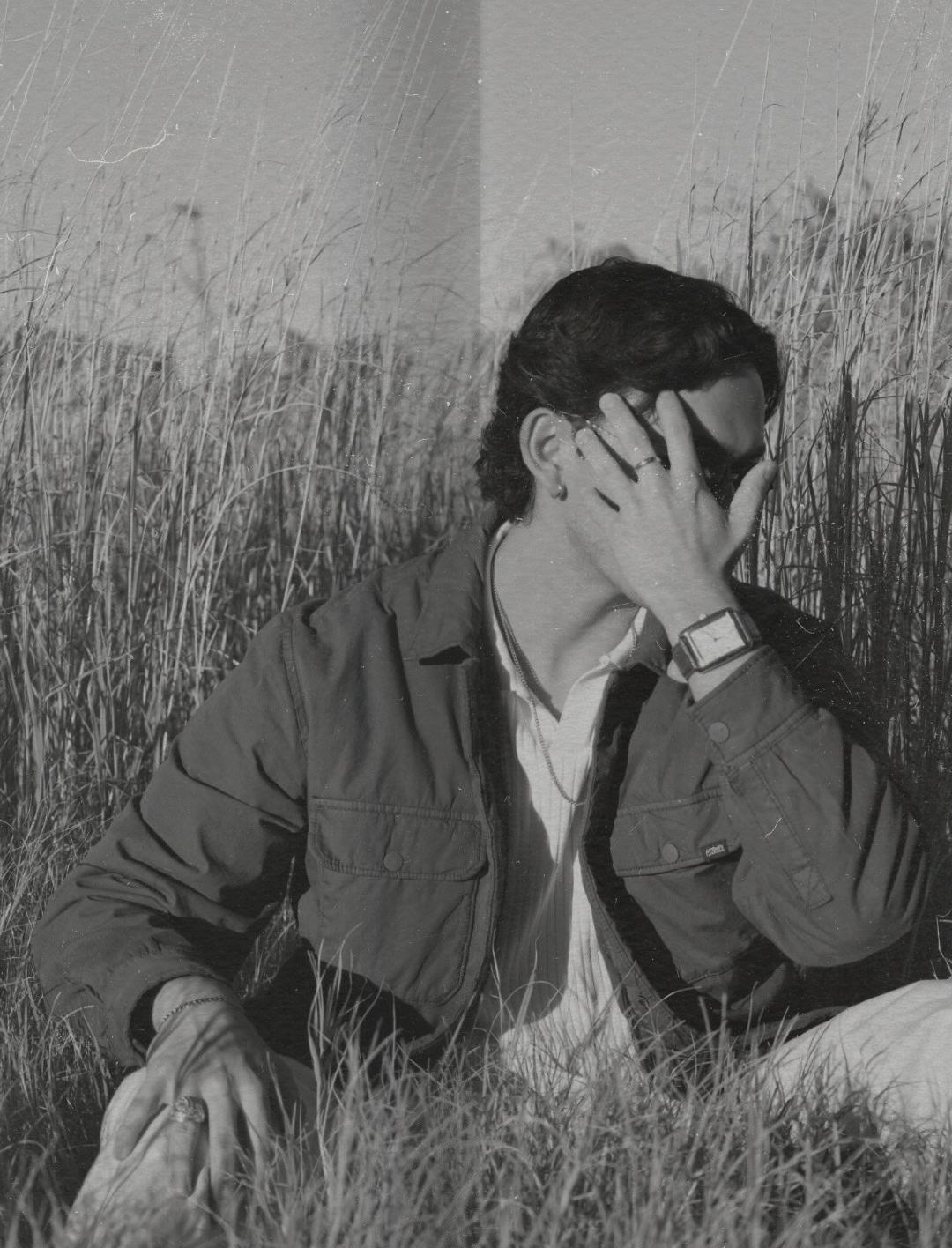 Photography: Abbi Roane
Photography: Abbi Roane
48
Model: Enrique

49
t’s an accusation that haunts artists everywhere; a simple, nonchalant phrase that is able to bring artists of all mediums to their knees. Artists may find themselves worriedly clutching their paintbrush of choice, teeth chattering at the implications of this phrase uttered by the general public and elite critics alike: “Nothing is original these days!”
Casually spoken, yet horrifying. The phrase has an effortless ability to shed a billowing shadow over artists of all kinds. And while enjoyers of art, a.k.a. everyone, still continue to appreciate, there seems to be the underlying dig that no one’s ideas are really original. Everyone’s art is just a reference to a piece that has come before, everyone’s music is simply bits and pieces of songs already made, and new films are but washed out hints of the past. The question is, what makes something unoriginal? In fact, what is original to begin with? Harry Styles might have hit the nail on the head when he sang that it will be a “fine line.” But, is even that unoriginal? Where did Styles get this lyric? Is Harry’s artistry dampened because he was not the first to use this phrase? Should we congratulate the first to describe something as resting on a “fine line” and credit them with Styles’ work?
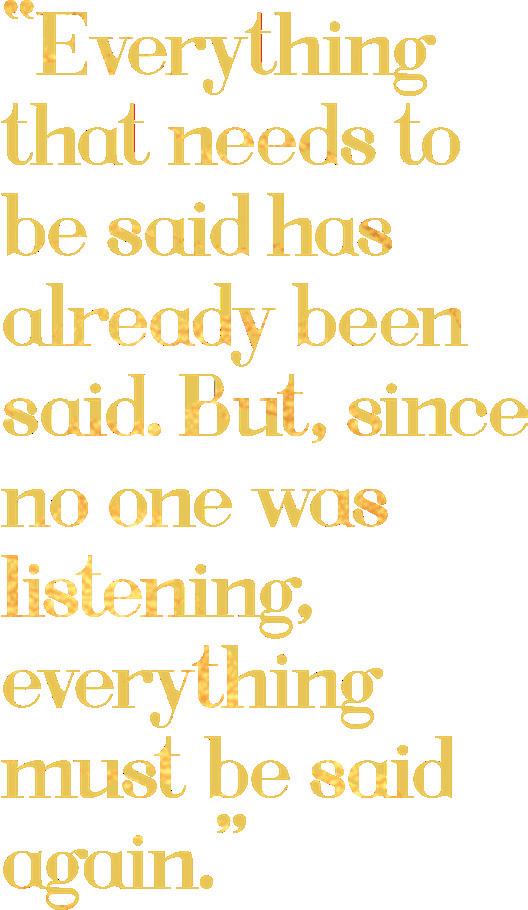
Just this example illustrates not only the vast subjectivity of art, but how confusing and mind-boggling it can be. Does a reference to a previous idea make something a copy or an inspired piece? It’s a tricky line to walk as an artist: am I remixing or am I copy-and-
pasting? The questions could go on forever, and only continue to fall deeper and deeper into the extensive cavern of artistry license. What is considered a cheap remix?
Jack Harlow released his single, “First Class”, just this year which takes a heavily recognizable sample from Fergie’s 2006 hit, “Glamorous.” It immediately soared the charts, yet was obviously associated with a hit song that had come before. On the other hand, some are more subtle. Many might associate the line, “uh huh, honey,” with Kanye West’s “Bound 2”, although this is pulled from Brenda Lee’s “Sweet Nothin’s” from 1977. Regardless, they are both borrowed art that is spun a new way; is there a way to measure what a good remix is?
You might find your mind on an eternal circuit trying to answer this question. But, in the case surface level exploration wasn’t enough, try applying this standard to the world of fashion design. At first glance, this might seem self explanatory: “of course everything in fashion is original! After all, wasn’t it designed by a designer? What do they have to copy?”
The problem with finding the key to this fashion puzzle is this: it’s severely nuanced. Zoomed out on the runway, we see a collection of clothes that we don’t associate with anything at all. Surely we haven’t seen that collection before with that exact motif, those precise tailoring techniques, or that particular print. This is true: I am happy to report that no designer I can think of has directly plagiarized an entire collection. However, this drastically changes the moment you zoom in.

50

51
Take this example: a main motif of Versace that most associate with the brand is the Greca print, mostly found in gold. It’s a known staple of the house; it doesn’t take a detailed eye to notice when someone is wearing Versace because of this element. Although, one time I was wearing a necklace of a similar Greca pattern and someone approached me and said, “I love your necklace! Is that the Fendi one?” Fendi? I thought I looked Versace-esque that day, or at least tried to be. After some quick research, I quickly understood that Fendi also commonly uses a gold Greca in their design. I was certain this was associated solely with Versace, but now I was not so sure. Did Fendi copy Versace, or vice versa? Can you even consider that copying? Who holds license to the Greca pattern? Can one sue the other for copyright infringement, or once again is it too subjective?
Fashion house Coperni was recently accused of plagiarizing Alexander McQueen in their most recent show. Bella Hadid closed the Coperni show by walking out seminaked onto the runway where she was then sprayed with a liquid that when dried, turned into a fabric-like material that created a dress for her. However, many drew comparison to
McQueen’s 1999 iconic runway stunt where a model dressed in a white gown closed the show standing on a rotating platform where she was then spray painted from numerous directions, creating a graffiti-like pattern. Critics expressed that Coperni attempted to imitate McQueen, and that Coperni lacked artistry. Although, is something a copy because it uses similar inspiration? It’s hard to tell when you’re actually seeing double. In his book, Steal Like An Artist, Austin Kleon states, “Every new idea is just a mashup or a remix of one or more previous ideas.” And, there’s something to be said about that; the reality is that remixing, whether we see it vividly or not, is an art form. We can take something, clutch it tightly in our hand, and then release it into the world as something else. So, is nothing original? The real question might be, can we create new art without art of the past? What is art without inspiration? Maybe art relies upon the fact that we cannot make and not take; what will we create from what we steal?
Writer:AubreyMatson
Photographer:KylieDunlap
Designer:KayleyVu
Models:KatePuckett,KatieGray
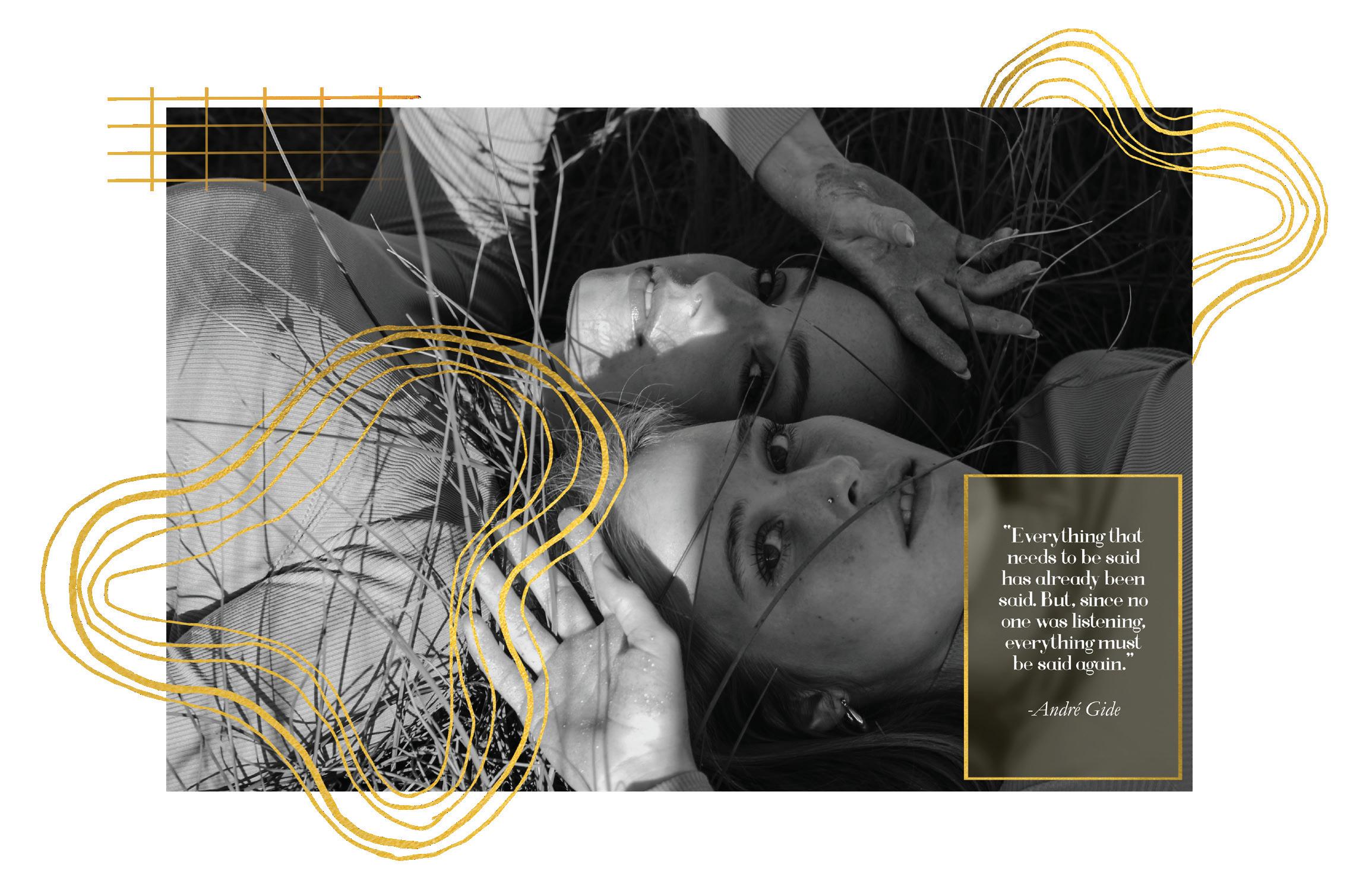
52
¹⁷
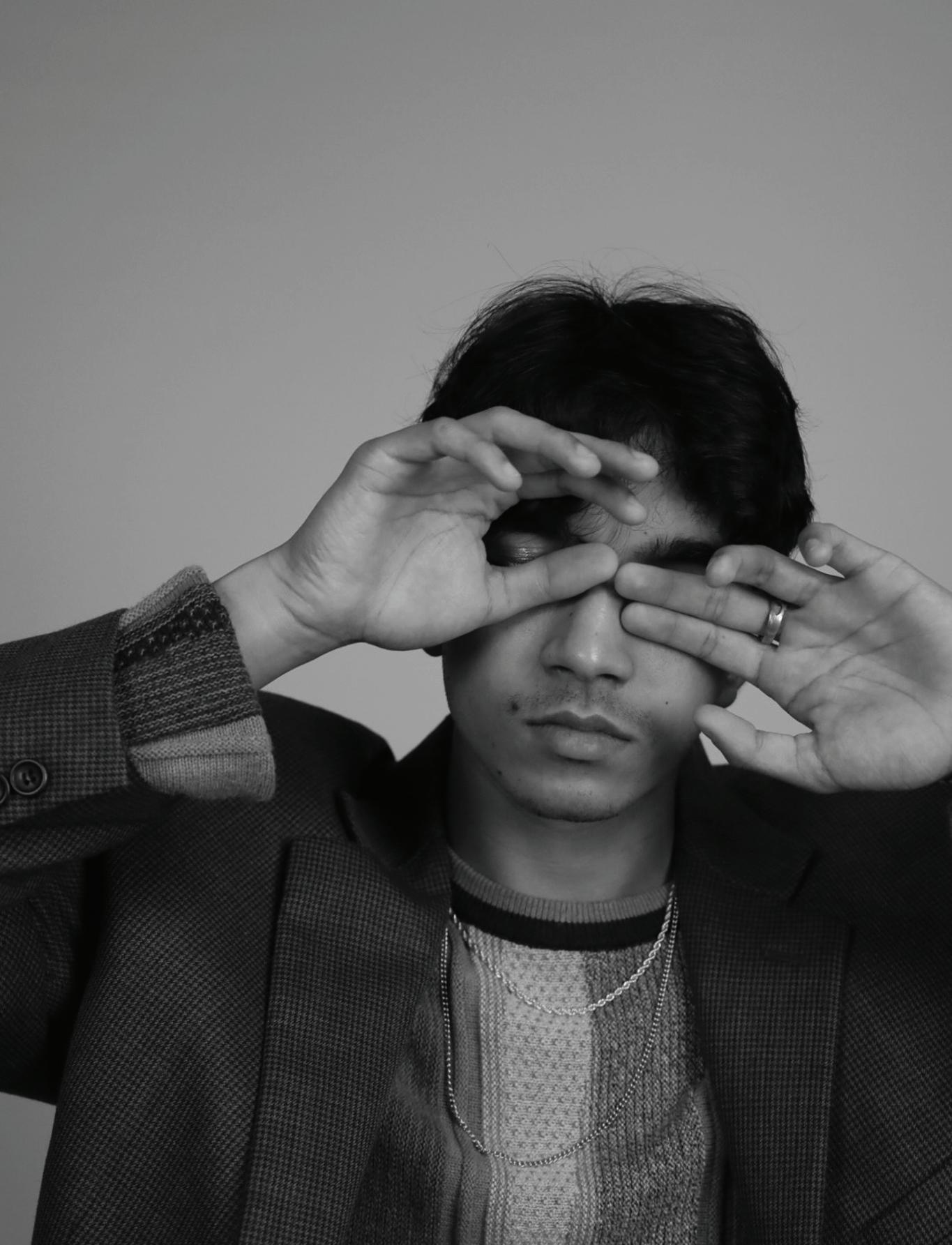 Photography: Abbi Roane
Photography: Abbi Roane
53
Model: Aaditya Patil, Monet Guilbeau
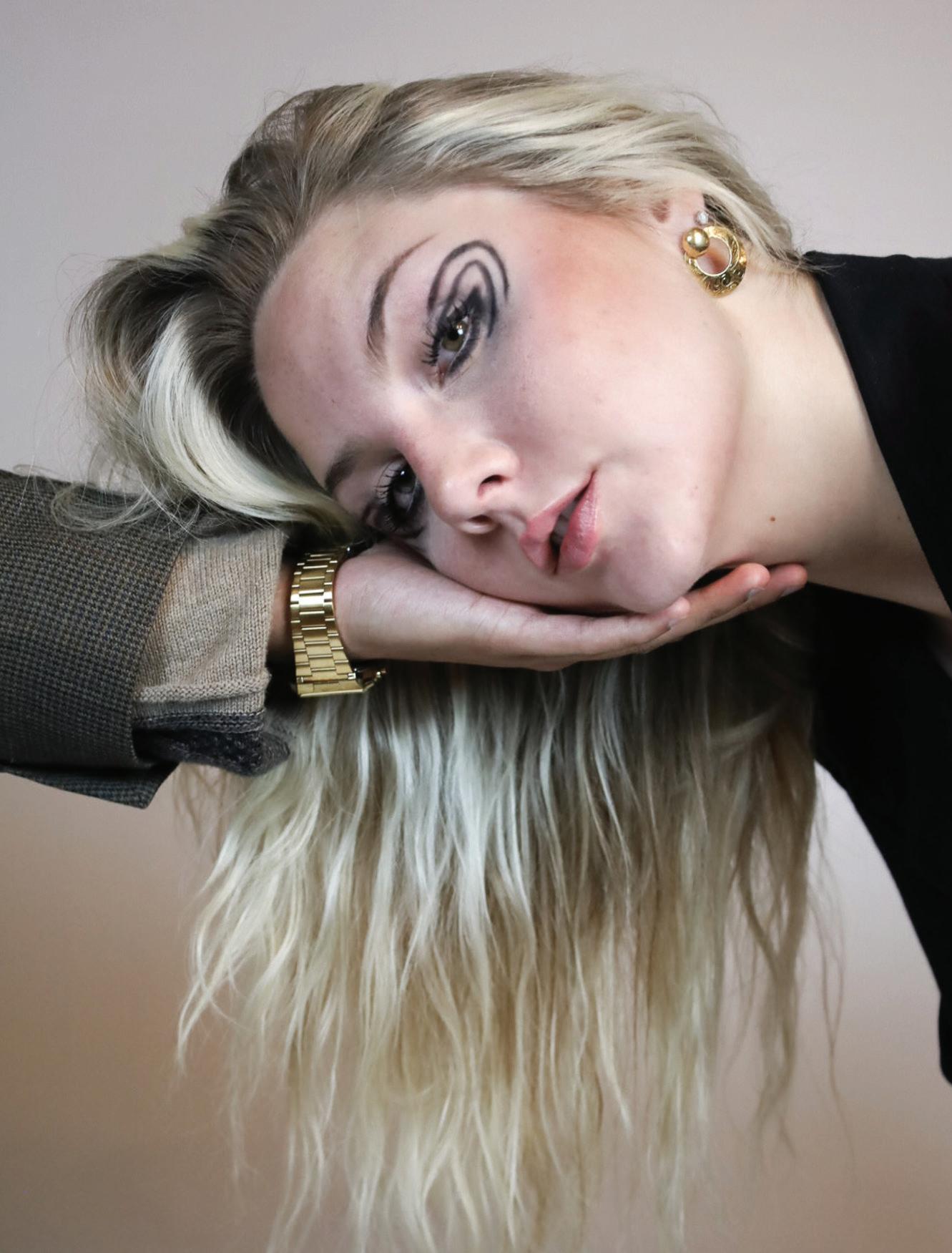
54

55
-List Has A New Look
 WRITER: Beth Baumler
WRITER: Beth Baumler
PHOTOGRAPHY:
Krystal Pham
DESIGN: Anna Keller
MODEL: Apoorva Selvakumar
t was a VIP list of household names. Exclusive with a hint of pretentiousness, but not the kind that eyes rolled at - rather looked up to.They were the A-Listers; Hollywood’s finest, the world’s beloved. The movie stars and the Oscar winners. The glitz and the glamor. The rich and the famous. The select few put on a pedestal, newsstands, and childhood bedroom walls everywhere. They had a mystique that enticed the masses. Questions circulated as fast as the tabloids about them. People wanted answers about this private VIP membership into the A-List. Even more so, they wanted a look into the lives of those “so fortunate” enough to be members, because the idea that an individual could have this much power, sway, and admiration seemed like a fantasy. This fantasy of being someone who could swivel necks, stop conversations by walking into a room, and live out such a glamorous lifestyle was what the wide renown promised and what outsiders wanted no matter what, even if just in a vicarious, fan-like way.
That said, A-Listers reigned for decades. A group made of the Tom Cruises, Leonardo Dicaprios, Sandra Bullocks, Morgan Freemans, and Meryl Streeps. They ruled on and off screens. As time passed, media expanded and fandoms did as well. Social media provided platforms for fans to form communities around something, or in this case, someone. The admirers now had more say than ever about the admired, good or bad. The result was a complete turn in narrative. Fans gained control of the VIP list; in the case a celebrity broke social standards, they were canceled, ostracized and replaced with a fresh face and name. This newfound role of the fan and its democratization of fame is what ultimately changed the concept and meaning of celebrity. Or was it the notorious “Imagine” star-studded sing-along at the beginning of the pandemic? That’s still up for debate. With these A-Listers under the microscope with the potential of being scrutinized with every move, people began seeing and learning that the lives of these celebrities were not only out of reach, but out of touch. Because they experience such a different reality than the majority of the population, fans found it difficult to connect with the typical celebrity. Before, the relationship between fan and celebrity wasn’t as much about connection as it was aspiration -- that was before this huge unprecedented event in modern society isolated everyone in 2020.

56
COVID-19 changed everything: a redundant, yet honest claim. In the context of the celebrity, it stripped them of the attention normally received. Instead, the world turned their eyes toward the “pandemic” headline stealing real estate in tabloids, magazines, and newsstands. The pandemic forced everyone to focus on physical community - not the fandom kind, the hometown kind. It exposed how uneven we distributed value to those in society. The praise that had been overflowing towards the A-List now shifted towards health care professionals and hometown heroes of this world. With that began the descent of Hollywood’s finest, the world’s somewhat beloved. “Celebrity” no longer meant what it used to. Aforementioned, fans started to gravitate less towards admiration and instead towards connection. Even while many found connection within their community, that didn’t stop people from wanting role models. However, this time around, their criteria for who they wanted to look up to was different. They were in search of someone they could relate to, someone whose life felt more accessible and attainable. They craved authenticity over a meticulously crafted image and made relatability of the utmost importance. This desire for authenticity and relatability combined with the Tiktok takeover of younger generations, brought in a new class of celebrity - the influencer. The influencer has become the modern world’s new flavor of fame… for the foreseeable future at least.
Yes, one could rightfully argue many influencers try to imitate lifestyles of the A-List, carefully crafting their feed and image. But
what’s so different about this new “social” class is the intimate look viewers get into their lives.
Instead of watching them rise to fame on the red carpets, movie premieres and prestigious award ceremonies, we have seen their ascent into stardom from their living rooms, bedrooms and homes. Moreover, what’s so special about their ascent into stardom is how fast they have been able to obtain it. One or several viral videos can and have made people become sensations overnight. Take the D’amelios for example: from posting TikTok dance videos, gaining millions of followers, securing huge brand deals, and attending the same events as A-List celebrities - their rise is a phenomenon. A case study could be made on the family’s launch into fame and success.
Another example of influencer that is not as overnight of a sensation as the D’amelio’s is Emma Chamberlain, who seems to have perfected the pipeline from internet star to the worldstage. Starting a Youtube channel with just her iPhone documenting her everyday life, she turned her relatable videos into a career of fame and admiration, attaining invites to prestigious events like the Met Gala, coverage by top-of-the-line editorials in Vogue and Architectural Digest, and an ambassadorship with Louis Vuitton. Emma is just one of many that prove the concept of celebrity has changed forever. In today’s world, the path to fame is an all-inclusive affair.This is not to say the A-Listers are extinct, they are just a dying breed. People still recognize the difference between the DiCaprios and the D’amelios of the industry, but they also accept that the VIP guest list has expanded, whether we like it or not.
57
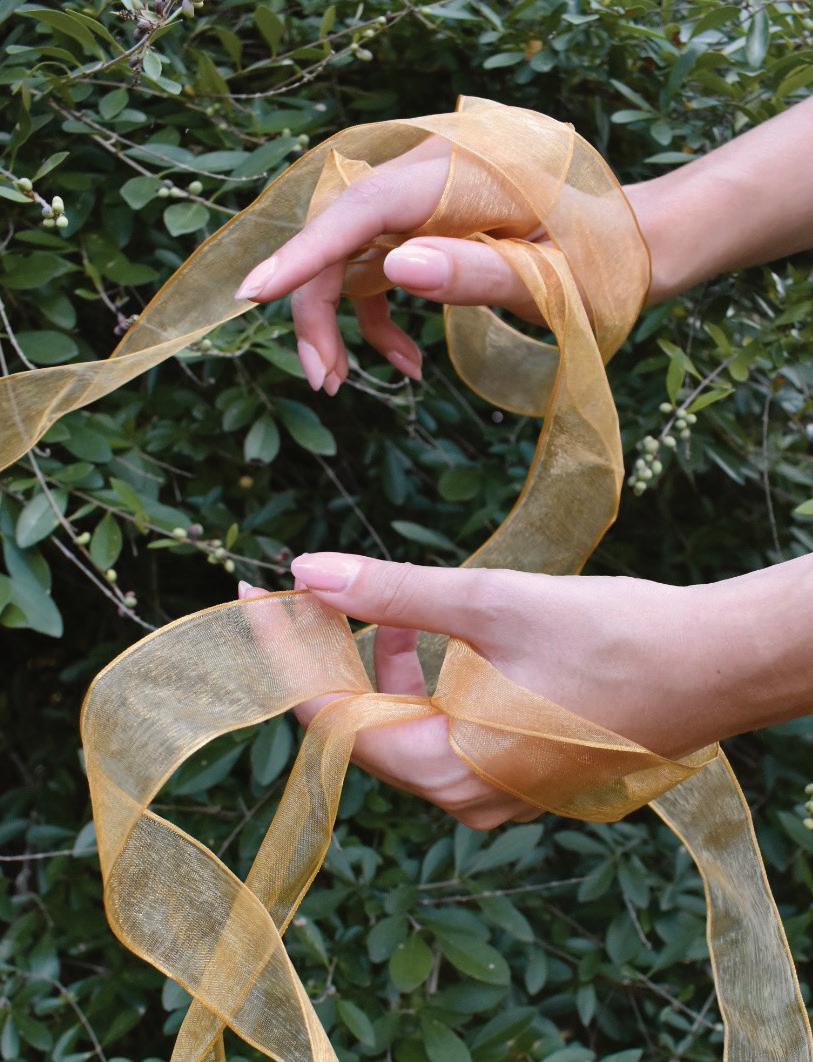
58
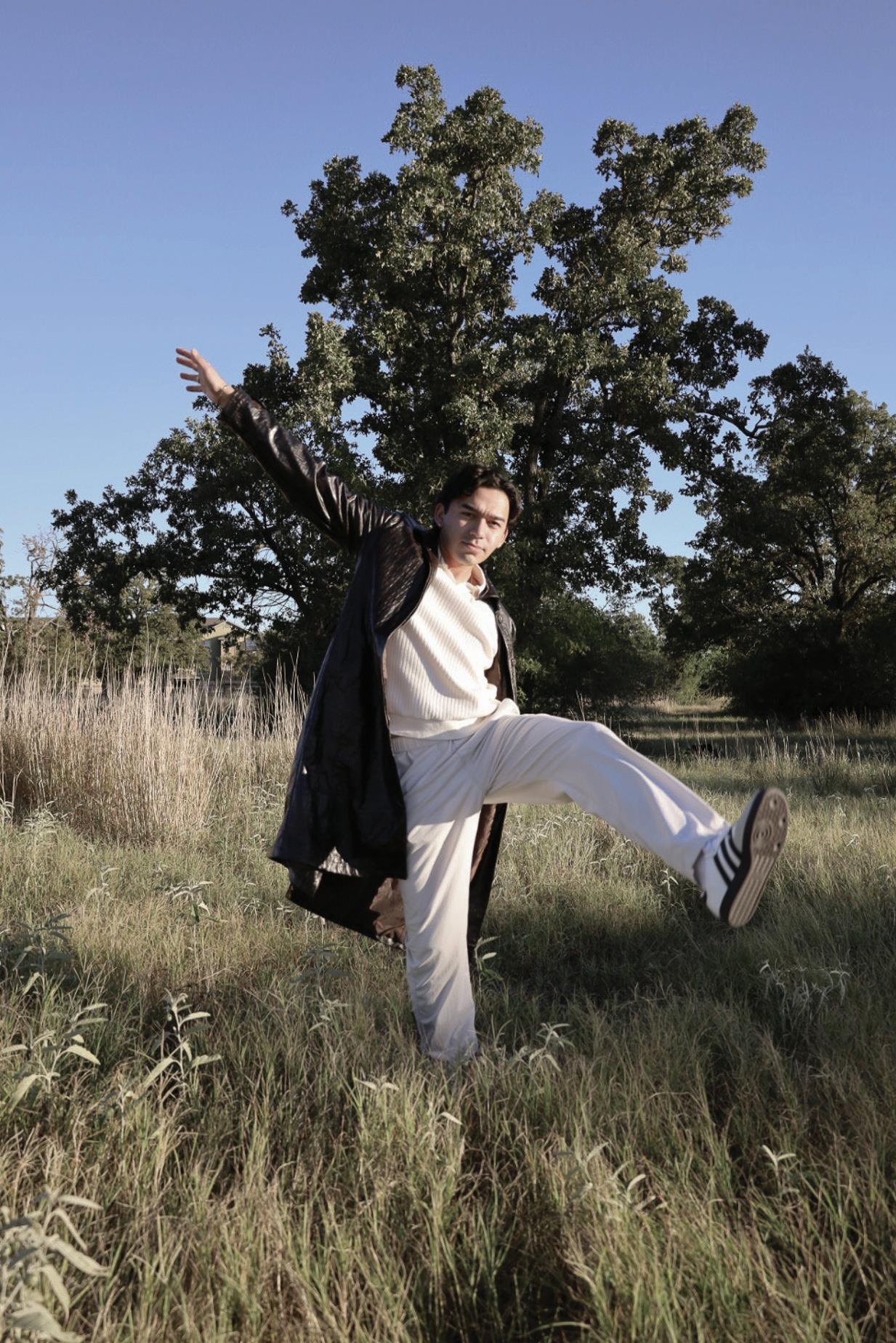
59

60
Photography: Abbi Roane Model: Enrique Estrada, Katie Ibanez
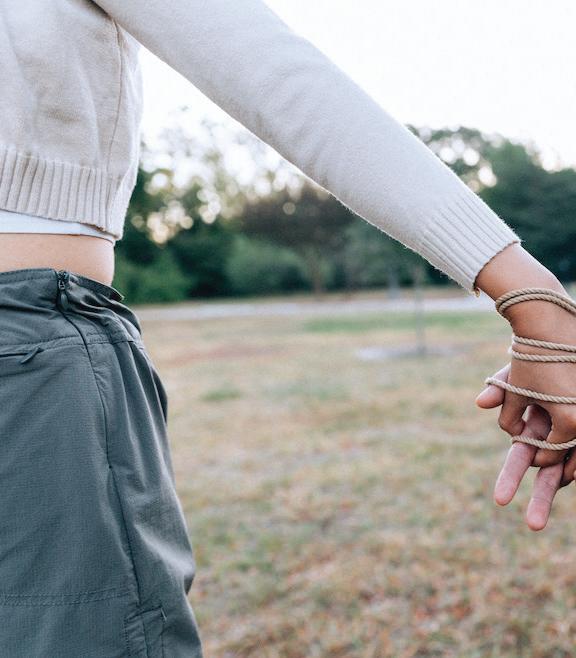
61
BABE, IT’S NOT YOU... OR ME
WRITER: KADENCE CHEANG
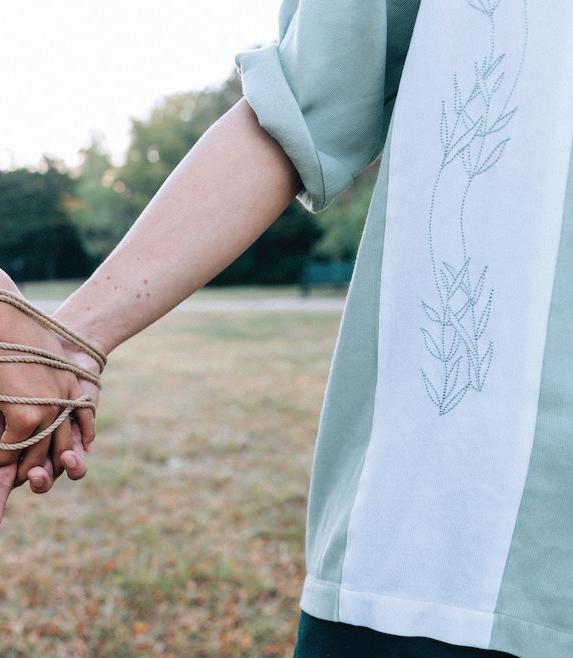
PHOTOGRAPHY: ANNA BURSON DESIGN: JADE SUNG MODELS: STEPHEN LEE & RACHEL NG
he prince charming, a white knight in shining armor, and happily ever after. We all hold on to the childlike fantasy of finding our own happy endings. No matter how many times we contradict ourselves, the desperation to find your perfect person seems to always be there. Sold on Disney princesses and white horses, growing into your twenties is a time of youth, a time of growth, and a time where you get to take the reins. The concept of “adulting” is so incredibly real, but also so strange. The people you’ve always known are changing, experiencing their own metamorphosis, and having their own growing pains. Part of figuring out what you want in life is choosing who you surround yourself with and who attains the privilege to see such an intimate part of you. People grow and everyone suddenly has responsibilities; so even if people change, who’s to say relationships can’t too?
62
There has always been such a negative connotation surrounding heartbreak, but why? Two people could be compatible and have incredible chemistry, but are in complete opposite places in life. Sure, it could’ve been the right person, but the wrong time. However, if it truly were the right person, why would a relationship happen with such wrong timing? No matter who you meet or when you meet them, there will always be joy and pain on each side of every story. Life is about exploring endless possibilities, and there are too many ways of living to be worried about the if’s, and’s, and but’s. Our narrow minds take too much for granted in this lifetime. We hammer into our brains that we have to date in our twenties, be married by twenty-eight, and start a family at thirty. If not, we’ll live a miserable life. Shed more imagination on what a good life looks like to you. Be creative in what you want your life to look like.
BUT THAT’S LIFE TOO, AND WE CAN’T PUSH LIFE AWAY
The truth is, our bodies are designed to fall in love. Nobody expects to fall in love and it shouldn’t be something we want to protect ourselves from. We release hormones stimulated by chemicals in the brain when our gut bacteria is compatible. Yet, we resist. Why? We’re afraid of getting hurt. We’re trained to resist giving too much of ourselves away because that would mean giving away our power and our sense of control to someone else. We are all so desperate to maintain some kind of illusion of control. But see, that’s the thing about falling in love; surrendering control is unavoidable. It could easily be the best thing that’s ever happened, or single-handedly be the worst feeling in the world for you, regardless, it’s part of what makes us human. In the earliest stages of love, infatuation can be a thief, stealing perception of the truth. Don’t let that shy you away from the idea, but instead, push you towards it. Yes, the relationship might end. And yes, when it does it might be as though your heart shattered into a million little shards of glass. But that’s life too, and we can’t push life away.




63
Love is a place to be seen and heard. It’s not just about the romance, the 3 a.m. night drives, or the guessing of every gaze from across the room. It’s about the little things. In these moments –good morning texts and drunken fights – we have a choice. In happy ones, will we take them for granted or will we be absorbed by the present? In the bad moments, will it be, “let’s talk about it later,” rather than digging for the uncomfortable truth? We have to be brave and throw ourselves into love with abandon. You might call it madness, but others call it love. Love is how we connect with not only each other, but with the world. But most importantly, it’s what makes us care. Love is a promise of home.

LOVE IS A PROMISE OF HOME

Many people think that only in love will they find happiness, but this is far from the truth. We have an insatiable obsession with the idea of love, not the truth of it. The alluring fallacy of it all is that a certain someone will be able to help you find meaning in your own life. It’s important to realize that the only person who can give meaning to your life is yourself; you are in the driver’s seat. Love requires you to be vulnerable to rejection. While work is needed in building a relationship, you shouldn’t have to work at convincing someone to love you. They either know or they don’t. There’s no in between. Love and loving you; that part should be easy enough. Perhaps a happy ending isn’t about two people coming together; perhaps it’s about learning that the magic of fairy tales can’t keep you from who you are and the romantic journeys you will embark on, no matter what the ending may be.


64
 Photography: Abbi Roane
Photography: Abbi Roane
65
Model: Aaditya Patil, Katie Ibanez

66
usic lives, breathes, and evolves alongside life. It is undeniably dynamic in both consumption and creation, and is something that has never been, and will never be, static within our world. Whether musical trends are examined in terms of style, lyricism, or production, the same result will always be drawn: constant and continuous change. This begs the simple, yet obvious question: why is this? If every generation enjoys the music of their time, why would any noticeable shifts ever occur? Simply put, the answer to this is that music evolves as society evolves. While this seems like an exceedingly straightforward statement, it is dense and intricate if looked at through the lens of detail. Like music, change can be both loud, and very quiet. In order to understand musical fluctuation in its entirety, one must pay just as much attention to the quiet changes as the loud ones.

67
CHANGES IN LISTENING FORMAT:
THE REVIVAL OF VINYL
Perhaps one of the largest and most recognizable changes across music, society’s shifts in song listening formats throughout the years has a strange, and now cyclical history that ironically both begins, and ends with the record. The first LP ever pressed was in 1948, and the popularity of the vinyl steadily rose throughout the ‘50s. Sales then boomed throughout the ‘60s and ‘70s, despite the introduction of both the Compact Cassette (1963) and the 8-Track Tape (1964). Ultimately however, the vinyl record’s death warrant was signed in 1979 with Sony’s production of the Walkman, which caused cassettes to outsell vinyl for the first time ever in 1983. This was then followed by
late 2010s, this “vinyl revival” has brought about a high demand for a mode of music listening that was considered almost entirely obsolete prior to its comeback. In 2021, vinyl records outsold CDs for the first time in 30 years, with Adele’s 30, Olivia Rodrigo’s Sour, and Taylor Swift’s Red (Taylor’s Version) reporting sales numbers in the two and three hundred thousands. So, in the age of Apple Music, Spotify, and Youtube, why are buyers opting for vinyl records? The answer, in most cases, appears to be for collection purposes. While record players, particularly Victrola and Crosley, have become increasingly popular for their aesthetic appeal, the boring non-nostalgic truth of it all is that ultimately, people still listen to the vast majority of their music through streaming services. Vinyl collection, while


68
¹⁸
DISSOLVING GENRE BOUNDARIES
Genre itself is a very fluid concept. It is a reflection of social construct, audience expectations, and perception of what a specific kind of music is “supposed” to sound like at a certain point in time. It is not fixed, but rather shifts in definition when we as a society inadvertently decide it has. While genre is something that categorically, music falls

Throughout the early to mid 2000’s, genrebending was not a large topic of conversation. Artists, for the most part, stayed within their own lanes and created music that fit the bill. Pop was pop, rap was rap, and country was country. End of story. While this is not to discredit various forms of musical experimentation; for the most part, mainstream music was fairly categorical and followed a carefully crafted formula that worked for the time. This is much less true of contemporary music, with genre-bending allowing artists to explore multiple genres within their music, and curate a sound that is more true to what they want to create. While many artists of our time have experimented with genre by merging and mixing different types of music, here are some notable examples.
Lorde: While labeled as an alternative artist, Lorde’s music is a fusion of electro-pop, dream pop, and indie-electro. Her style could be regarded as unconventional, often mixing ‘80s synth beats, piano instrumentation, and hip hop influence within her songs. In an interview with New Music Express, Lorde expressed her laxity with the concept of genre, saying that she does, “not think about staying in her genre lane.”
Kacey Musgraves: Labeled as a country artist, Kacey Musgraves’s music is an interesting blend of country, pop, folk, and even a bit of disco. In an interesting development in 2021, Musgrave’s album Star-Crossed was deemed ineligible for Country Album of the Year at the 64th annual Grammys despite being classified as a country album by a country artist.
Haim: Haim, perhaps one of the best examples of genre-bending, has been classified as an alternative soft-rock and pop band. Their sound is a synthesis of a little bit of everything, ranging
from ‘80s synth-pop to classic R&B and rock. When interviewed by Apple Music, the band solidified their desire to challenge genre by telling listeners that they, “don’t really care about genre or sticking to any sort of script.”
Lil Nas X: In 2019, Lil Nas X stepped onto the scene with his debut single, Old Town Road, which was immediately popular and sparked debate over what constitutes a real country song. Utilizing aspects of rap, hip hop, and country, the song charted on both genres’ Billboard charts until Billboard removed it from the country chart. This prompted country artist Billy Ray Cyrus to make a feature on the song in an attempt to have it classified as country once again. While holistically, most of Lil Nas X’s music falls within the realm of hip hop and rap, this incident had listeners questioning not only the limits of country music, but also why officials were so hesitant on allowing a Black, openly gay artist into the genre.
Similar to the concept of genre-bending is genre-crossing. This is when an artist completely switches over to another genre, despite the unspoken and outdated rule that performers should stick to one style. One artist that has been known to casually transcend genre time and time again is none other than Taylor Swift. In 2014, Swift released her first Pop album, 1989, despite the fact that at the time, she was considered a well established country artist. She continued releasing pop albums with Reputation (2017) and Lover (2019), but then shocked listeners again with the releases of folklore (2020) and evermore (2021) because of her sudden switch to alternative. Through this, Swift was able to cross genres in a manner that was almost entirely unprecedented, leaving fans wondering if it’s only a matter of time before she does it again.
70
THE MESSAGE BEHIND THE MUSIC
Change is not only something that occurs in music, but is also something that is called for within it. Pain and desire for change, while shifting generationally with differing issues, is always something that has been conveyed through music, from the civil rights movement to police brutality, to issues of gun control. The music below utilizes songwriting that exemplifies the call for change, and allows us as listeners to understand the desired message behind them.
This is America - Childish Gambino (2018) : Perhaps the most well-known song on this list, Childish Gambino’s This is America is a painfully overt anthem recognizing police brutality against Black Americans in the United States. The music video for the song overflows with powerful symbolism, with references to the 2015 Charleston church choir massacre, the Parkland shooting, the Jim Crow pose, and the Minstrel Show face.
Only the Young - Taylor swift (2020) : Taylor Swift’s Only the Young is a call for both change and action. Touching on feelings of hopelessness and anxiety during elections, school shootings, and political corruption, Swift utilizes the song to convey both frustration and hope for the current political climate at the time. With all eyes on the upcoming 2020 election where current President Donald Trump would be running against former Vice President Joe Biden, the song is a clear call for young people to step up, vote, and fight for change.
Where the Poison Is - FINNEAS (2020) : FINNEAS’ Where the Poison Is, is not a song with a subject matter that can be regarded as thinly veiled in any manner. Blatantly calling out the president at the time, Donald Trump, FINNEAS expresses his frustration with the president’s handling of the COVID-19 virus, the hook of the song being, “when all my friends get sick it’s on the president.” In this glaring evaluation of American politics, FINNEAS leaves no stone unturned, also touching on climate change and school shootings.
Mississippi Goddam - Nina Simone (1964) : Mississippi Goddam, a famous protest song by Nina Simone, is a piece that exemplifies Black Americans’ fight for change during the civil rights movement. While discussing in song the 16th Street Baptist Church bombing and the murder of civil rights activist Medgar Evers in Mississppi, Simone uses an upbeat and jaunty tune to express anger, outright rage, and the desire for change.
Strange Fruit - Billie Holiday (1939) : Billie Holiday’s Strange Fruit is one of the first protest songs ever. Called the “Song of the (20th) Century” by Time Magazine, the song is a horrifying, yet incredibly powerful piece of music about the lynching of Black Americans in the ‘30s. While the “strange fruit” is utilized as a metaphor for the hanging bodies of Black citizens, the true meaning of the song is far from hidden, passing on a powerful message that has continued to resonate with listeners.
71
¹⁹
Writer: Emma Ehle
Photography: Savannah Patterson
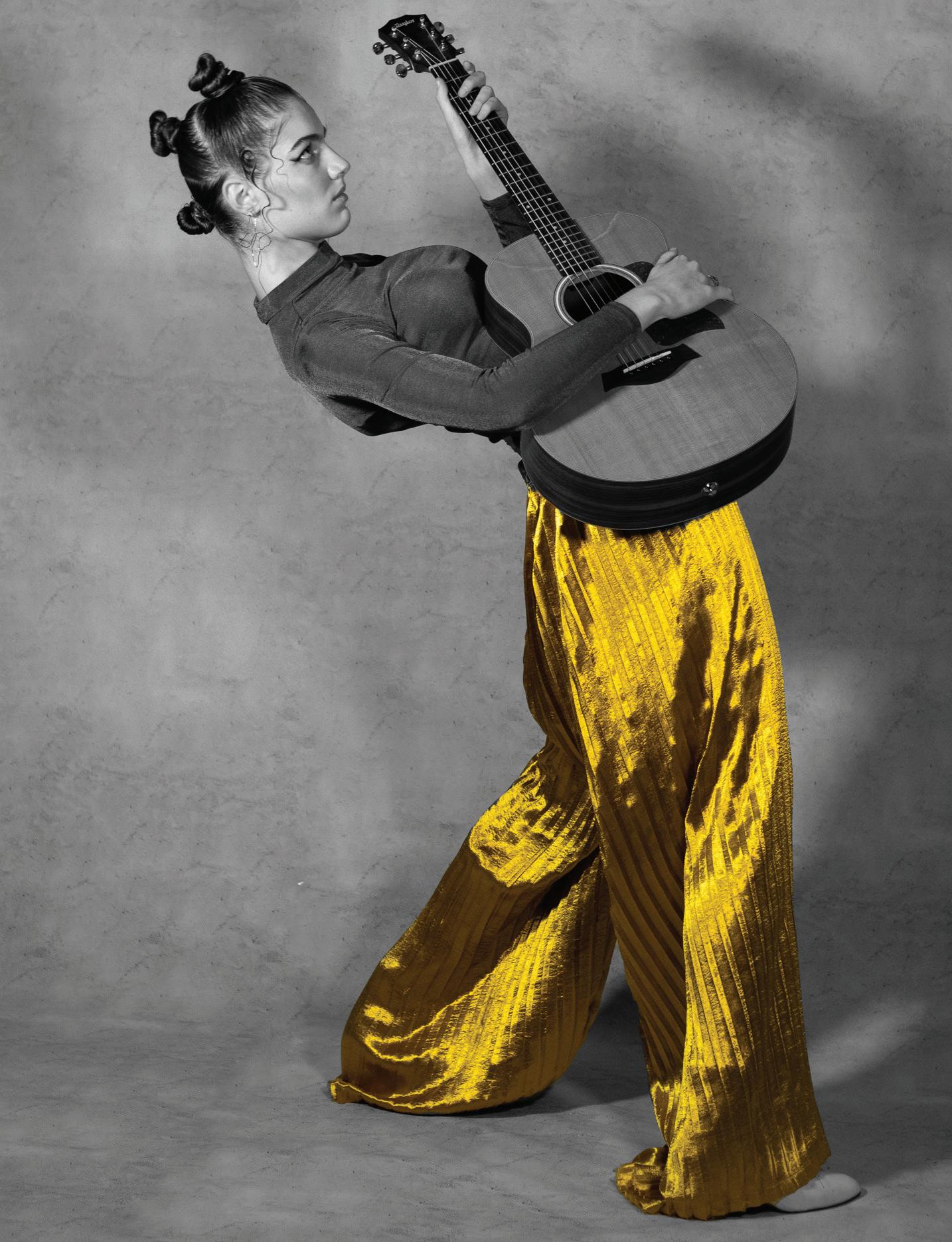 Design: Annette Guerra-Armendariz
Model: Katherine Kristofek
Design: Annette Guerra-Armendariz
Model: Katherine Kristofek
72

73
he butterfly effect is the idea that small things can have huge impacts, such as a butterfly flapping its wings on one side of the world causing a hurricane on the other side. We live in an ever changing and incredibly complex, interconnected world. This theory can be as small as giving someone a smile in passing that changes their day or as substantial as submitting an application to one job that changes the course of your future. Each and every one of us holds the power to alter history. Whatever our actions, thoughts, or attitude, we must be mindful of the impact it has on our own and everyone else’s world.


This theory was first coined in the 1960s by MIS meteorology professor Edward Lorenz. He devised a model demonstrating that if you compare two starting points indicating current weather that are near each other, they will soon drift apart – and later, one area could wind up with severe storms, while the other is calm. His conclusion was that longrange weather forecasting was impossible since there are too many trivial variables that contribute to much bigger consequences. Even tiny differences in nature lead to tremendous changes in forecasts.

74 ²⁰
The interconnectedness of nature, Lorenz noted, means a butterfly’s flap could cause a tornado – or, for all we know, could prevent one. Similarly, should we make even a tiny alteration to nature, ‘we shall never know what would have happened if we had not disturbed it’ since subsequent changes are too complex and entangled to restore a previous state.


Take any ecosystem for example. With the temperature rising just a couple of degrees, Alpine butterfly populations in North America decline because of fluctuations in the availability of specific plants they consume for food. If we think about the importance of those butterflies to other species in a food web, we can see the butterfly effect demonstrates the smallest of changes have significant consequences on a large scale. Every plant, animal, and person is connected, and we all depend on each other to live.
From an environmental standpoint, every action we, as humans, take has a huge effect on our planet. Every singleuse water bottle purchased, trash thrown out, and emissions we produce, contribute to the natural habitat of Earth. Our oceans and natural water sources are polluted, the composition of our soil has been chemically altered, the atmosphere has been heavily influenced by emissions, our forests have been dramatically reduced, and on and on. But let’s focus on the positive: even though each action can have negative effects, there are also many positive possibilities. Nature’s future is our future. So, choosing to make small changes that benefit the environment will benefit us. The positive changes we introduce have a ripple effect of changing the past mistakes. When these minute changes are made today, we impact future generations for years to come. The butterfly effect is not just applicable to a physiological or psychological way of thinking. This concept can take place in every interaction we have as humans. Each small event erupts into a huge happening. It can be simplified into a mere five words: everything happens for a reason. Every action has a cascading effect that ripples through society. The smallest acts of empathy spin the web of our world which holds everything together. We can control way more of our life than we realize by being mindful of our daily actions. If tiny changes at the beginning of a chain can lead to tremendous outcomes, it means that we have the chance to change the trajectory of our entire life — every single day. So, remember to feel gratitude with each interaction you have with someone. Whether you are spending time with good friends, working in your dream career, or falling in love for the first time, be thankful for all of it because there are a million miniscule occurrences that bring the present to you in each moment.
75
²⁴
²¹ ²² ²³


“HAPPINESS IS A BUTTERFLY, WHICH WHEN PURSUED, IS ALWAYS JUST BEYOND YOUR GRASP, BUT WHICH, IF YOU SIT DOWN QUIETLY, MAY ALIGHT UPON YOU.”
Nathaniel Hawthorne
WRITER: McKenna Madis PHOTOGRAPHY: Linh Tran
76
DESIGN: Madelyn Okruhlik MODEL: Jillian Wright
⁵
¹
³
| Laver, James. Taste and Fashion: From the French Revolution to the Present Day. Harrap, 1948.
² |“Fast Fashion's Dumping Problem.” Earth Island Journal.
| Remy, Nathalie, et al. “Style That's Sustainable: A New Fast-Fashion Formula.” McKinsey & Company, McKinsey & Company, 19 Aug. 2020.
⁴ | Shukla, Nikita. “Fast Fashion Pollution and Climate Change.” Earth.Org, Earth.Org, 2 Aug. 2022.
| “Sustainable Campus.” Clothed in Conservation: Fashion & Water | Sustainable Campus.
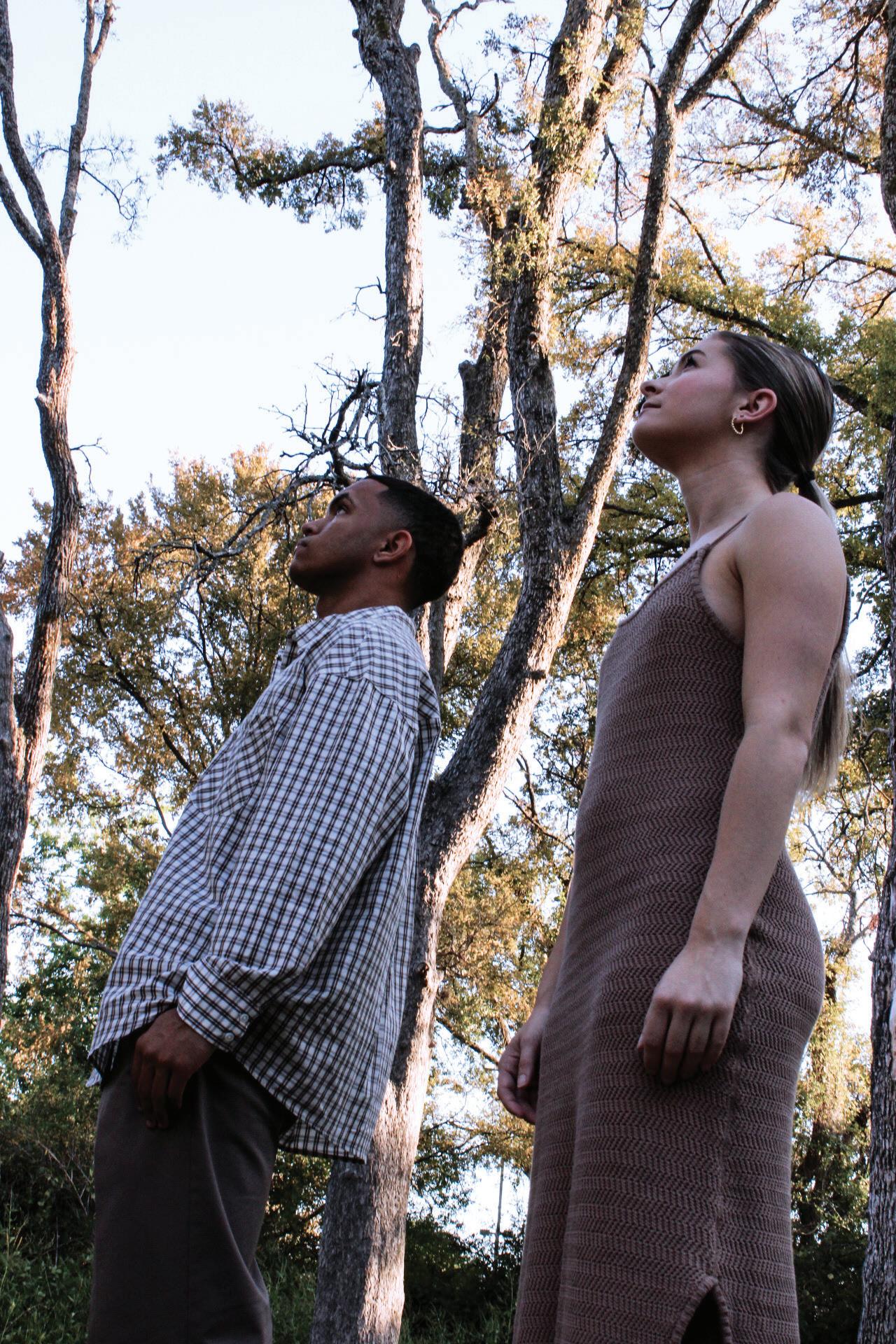
⁶ | “China's Factories Are Shutting down Again-but Not Because of COVID.” World Economic Forum.
⁷ | Sara Lindberg, M.Ed. “How Does Your Environment Affect Your Mental Health?” Verywell Mind, Verywell Mind, 25 Jan. 2021. ⁸ | “Does Work Stress Lead to Office Clutter” - Sage Journals. ⁹ | “Environmental Disorder” American Psychological Association, American Psychological Association. ¹⁰ | “Tidy up: Marie Kondo's Complete Book Collection – Konmari Method.” KonMari. ¹¹ | Wiebe, Jamie. “What Role Does Physical Environment Play in Your Mental Health?” Talkspace, 5 June 2019. ¹² | “How Does Your Physical Environment Affect You and Your Mental Health?” Newport Institute, 25 Feb. 2021. ¹³ | England, Natural. “Monitor of Engagement with the Natural Environment (MENE).” GOV.UK, GOV.UK, 12 May 2022. ¹⁴ | Gritters, Jenni, et al. “What Is the Ideal Amount of Time to Spend Outside?” Uncommon Path – An REI Co-Op Publication, 22 Apr. 2022. ¹⁵ | Altavilla, Nicole. “The Aromatherapy Scents You Need to Feel Your Best.” American Spa, 14 Sept. 2017.
¹⁶ | Newport, Cal. Digital Minimalism: Choosing a Focused Life in a Noisy World. Penguin Business, 2020.
¹⁷
|
Kleon, Austin. Steal like an Artist: 10 Things Nobody Told You about Being Creative. Workman Publishing Company, 2021.
¹⁸ | Richards, Will. “Vinyl Albums Outsold Cds in US for First Time in 30 Years in 2021.” NME, 16 Jan. 2022.
¹⁹
| Ksobania. “Strange Fruit.” MHS 123 Music and Technology in the Twentieth Century, 31 Oct. 2017.
²⁰
| Chandler, Nathan. “What Is the Butterfly Effect and How Do We Misunderstand It?” HowStuffWorks Science, HowStuffWorks, 13 Sept. 2022.
²¹
| Dizikes, Peter. “Why Pop Culture Loves the Butterfly Effect.” Boston.com, The Boston Globe, 8 June 2008.
²²
| Willis, Katie. “Climate Change Could Cause Decline of Some Alpine Butterfly Species.” Phys.org, Phys.org, 5 May 2020.
²³
| Clark, Brian, et al. “The Butterfly Effect and the Environment: How Tiny Actions Can Save the World.” Copyblogger, 3 May 2020.
²⁴
|
Günel, Sinem. “How the ‘Butterfly Effect’ Might Be Shaping Your Entire Life.” Medium, Personal Growth, 29 Apr. 2022.
77
REFERENCES
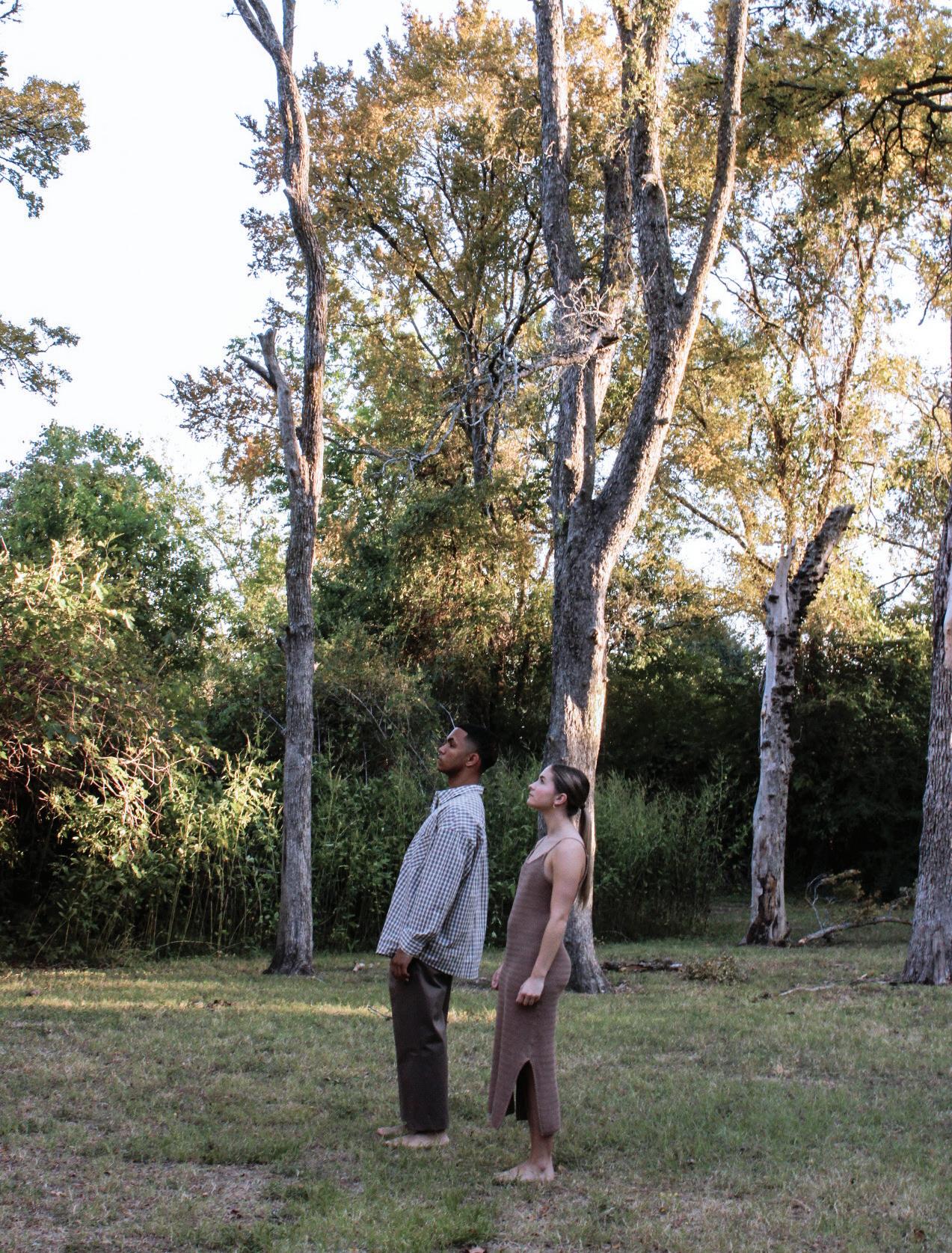

78
Photography: Lacey Loomis
Models: Macie Campbell, Jaden Spiegelhauer
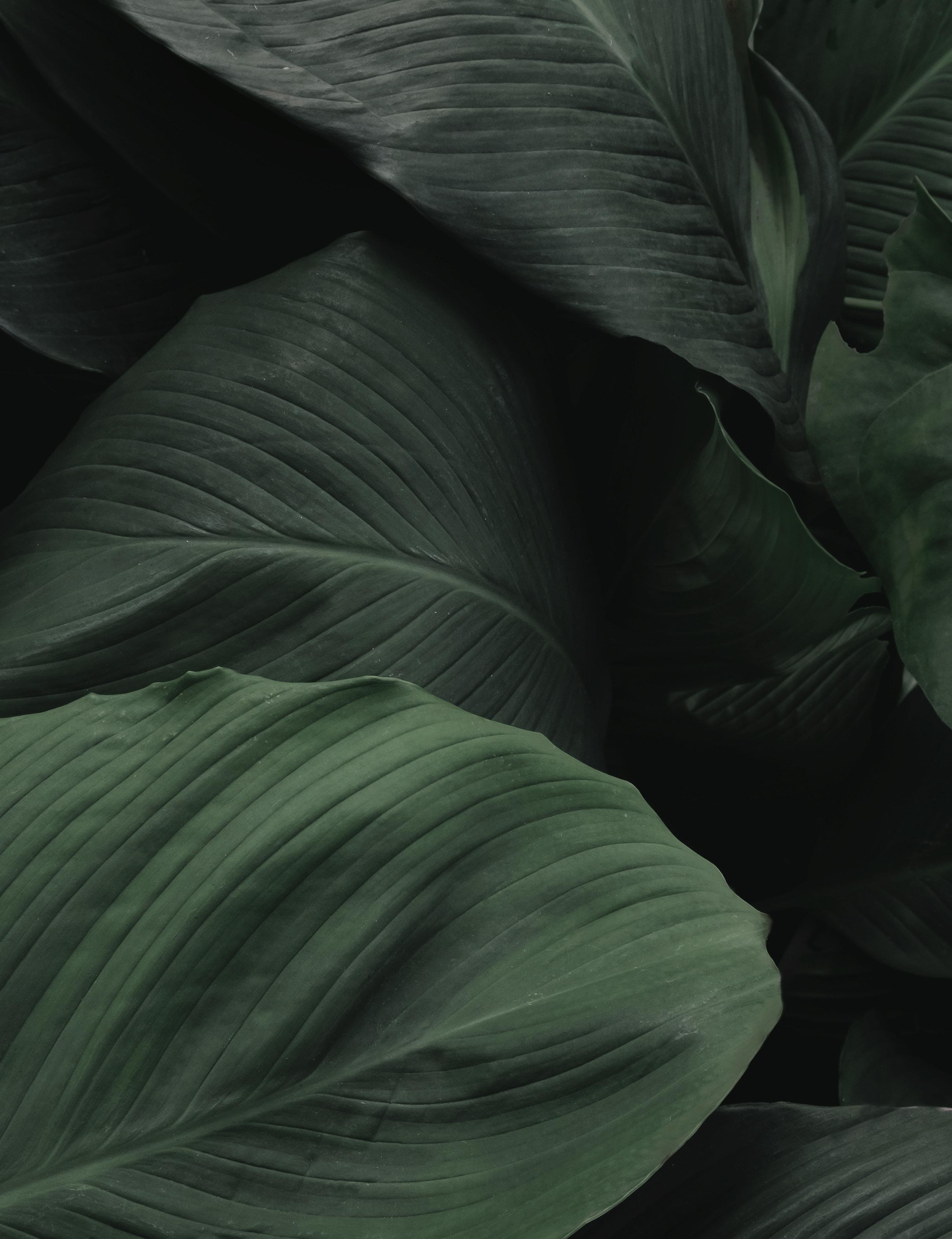
79
LETTER FROM THE DESIGN CHIEF

Dear reader,
Approaching the theme of continuous change through graphic design proposed a challenge, as these two concepts intuitively juxtapose each other. Inspired by the constant state of “flux” beautifully displayed by nature and the world around us, the design, photography, and writing teams have utilized their boundless creativity and talents to represent the profound themes of change that portray the human experience. When exploring the changes in fashion, music, relationships, and ourselves, it is my hope that you are able to see the beauty of evolution and its necessity for our survival and happiness.
As this is my last semester with A-Line Magazine, and I face the “uncharted territory” before me, I have found immense comfort within the ideas and motifs presented throughout this print issue. Though change is intimidating, specifically a transition from one world to the next, I have felt throughout the design process the beauty and importance of allowing yourself the opportunity to evolve. It has been a privilege to work alongside the most creative group of individuals the past two years, designing content with the intent to make an impact on others. To the Design Team, I will forever be grateful for your hard work in conveying the themes of change and creating a beautiful print issue. To the executive board, leading alongside you has helped me evolve into a better leader, and I will miss collaborating with you all. Finally, to A-Line Magazine, there are not enough words to express my gratitude for the opportunity to be creative and do what I love, while working with an exceedingly creative community that welcomed me with open arms. I hope that you enjoy this love letter to change and recognize not only its necessity, but the beauty that follows.
To the unknown,
Madelyn Okruhlik Design Chief

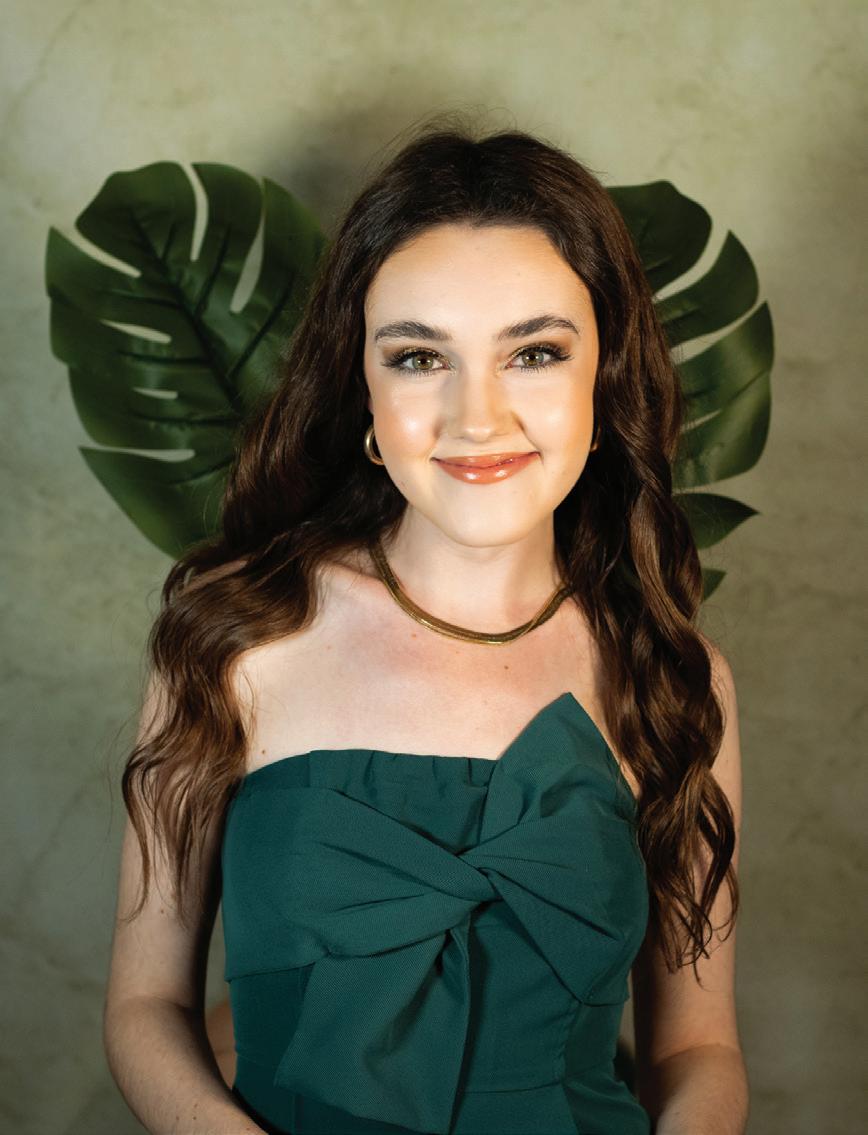
80
WHO WE ARE
In dreaming up the mission behind our organization, the intention was twofold: recognize the creative talent of the individual and fuel their capacity for greatness. Voila - enkindle the human spirit through self-expression and embolden all to excel beyond their social norms. Allow us to explain:
We envisioned each written work, curated photo, and skilfully crafted graphic to be a bold platform for our community of creators to shine. Our members are the new-generation artists that grace our digital day and age with contributions of modern relevance, leaving positive imprints on our college community. Our unique trait is the A-Line print issue, a tangible representation of us that defines online standards and relights the magic behind the magazines we cherised growing up. We understand the reality we live in: those brief, quiet moments amid our busy lives are priceless. Through an effortless scroll on your device, we hope to open the door to the relatable article you didn’t know you needed, advice on being productive during a pandemic, and, of course, style inspiration to bring out your inner trendsetter. A breath of fresh air in an ambiguous world, we are unified through the common interest of passion - a free kindling of the crafts that set our soul on fire.
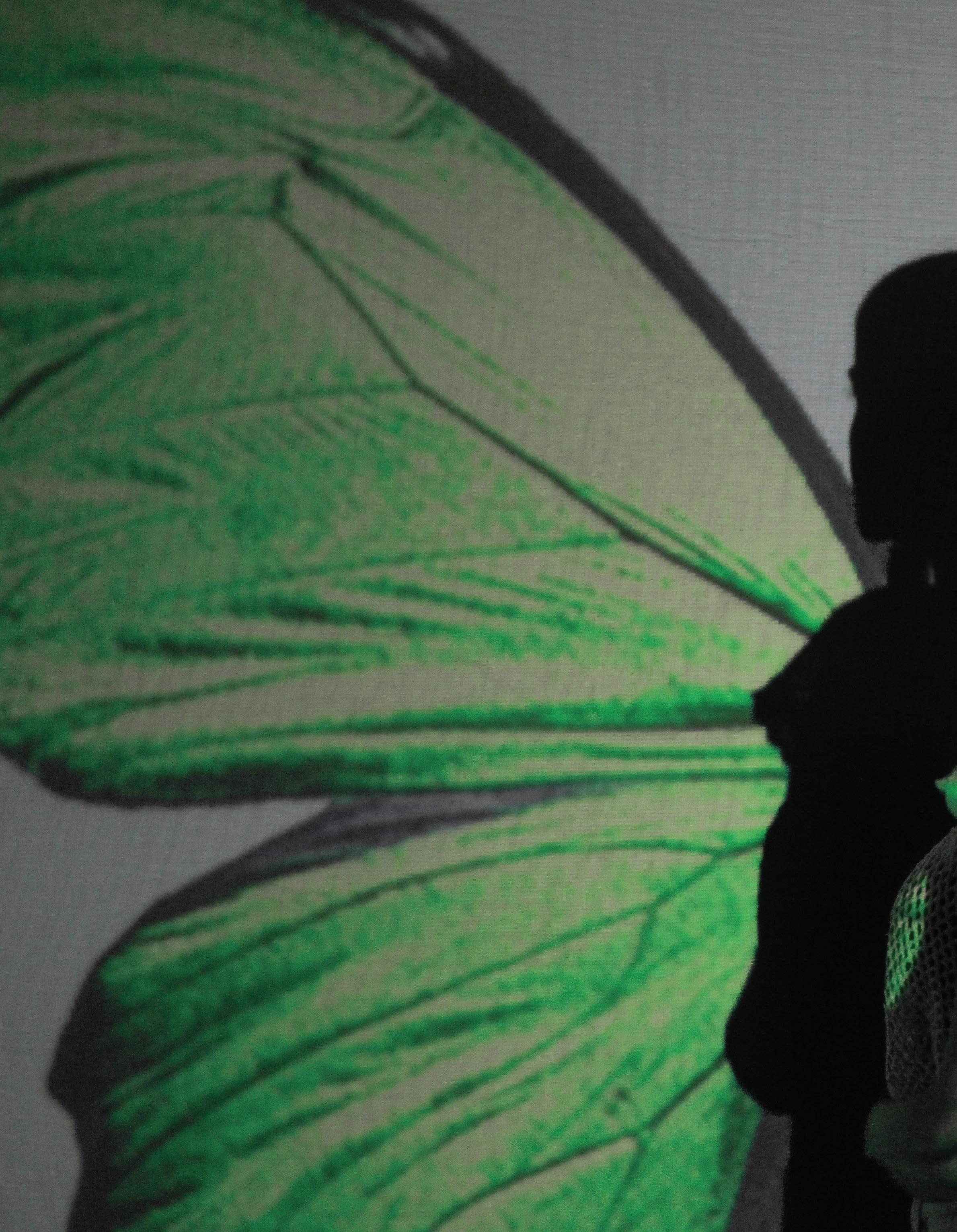
Let’s get to creating, together.
Sincerely,
81
Emma Garza & Dasom Lee Co-founders
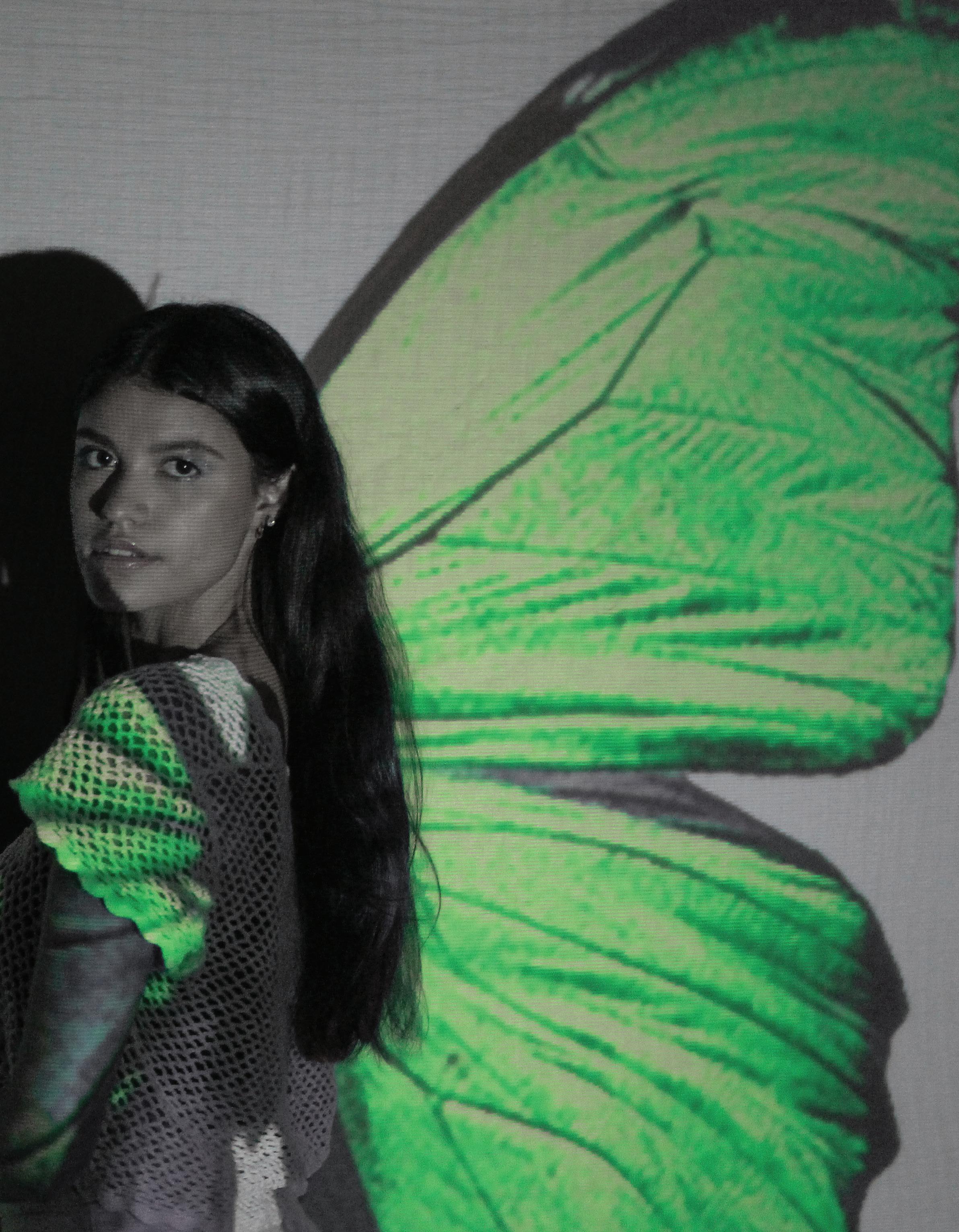
82
Photography: Kylie Dunlap
Model: Alexa Toribio
WE’RE ONLINE THEALINEMAG.COM
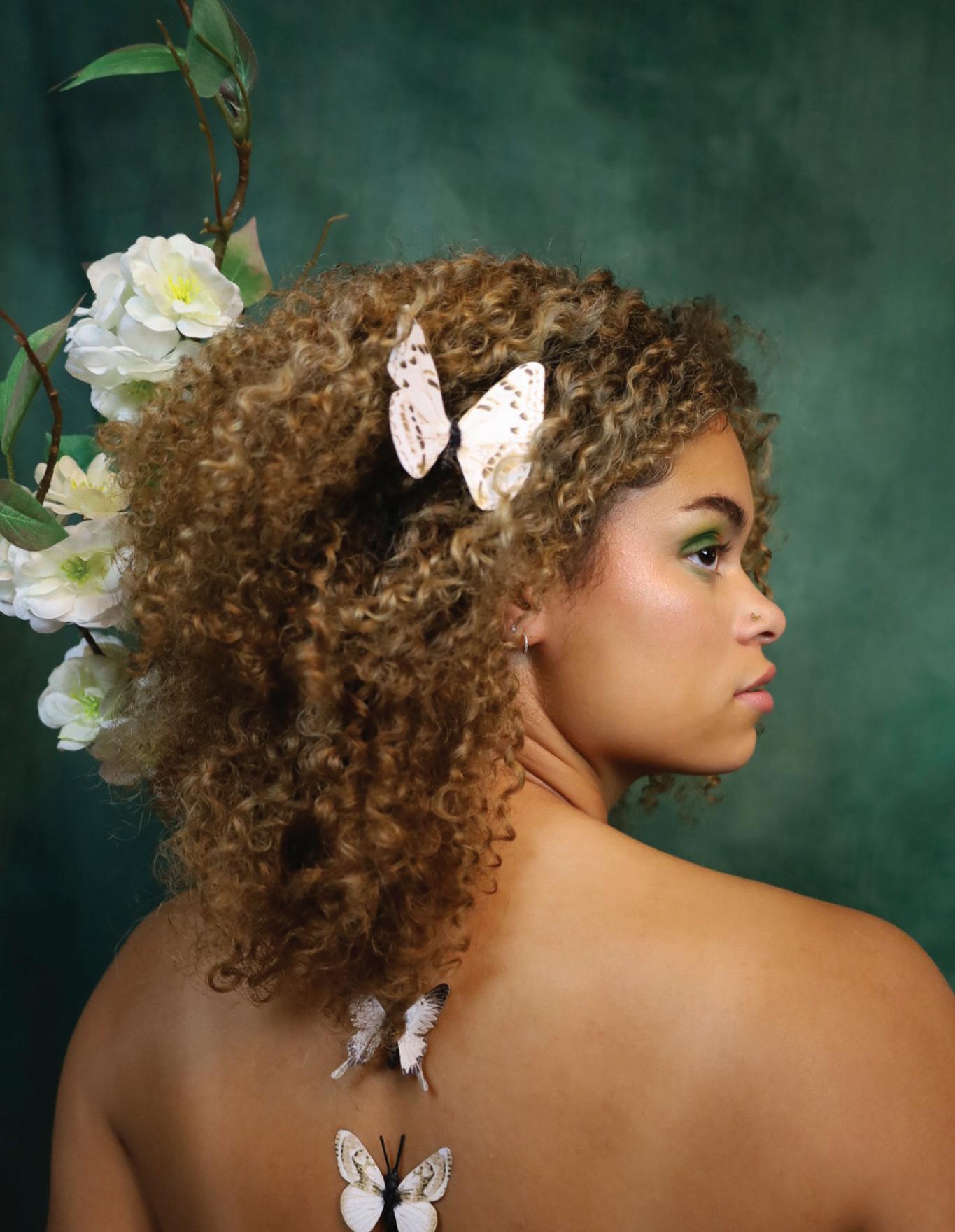



 Photographer: Emma Trueba 01
Photographer: Emma Trueba 01


























































 Photography: Alexis Holt
Photography: Alexis Holt



























 Photography: Abbi Roane
Photography: Abbi Roane





 Photography: Abbi Roane
Photography: Abbi Roane


 WRITER: Beth Baumler
WRITER: Beth Baumler










 Photography: Abbi Roane
Photography: Abbi Roane





 Design: Annette Guerra-Armendariz
Model: Katherine Kristofek
Design: Annette Guerra-Armendariz
Model: Katherine Kristofek

















